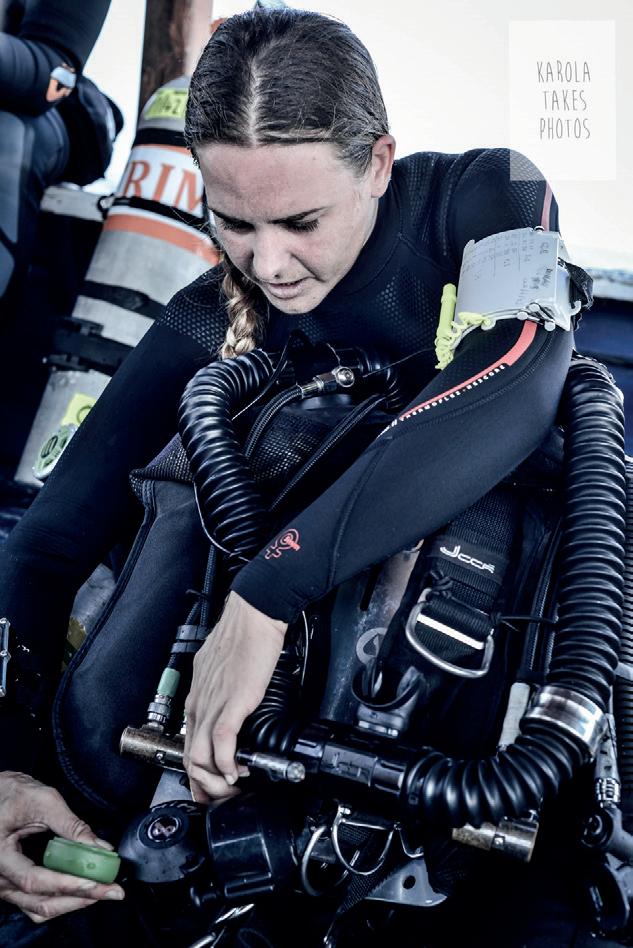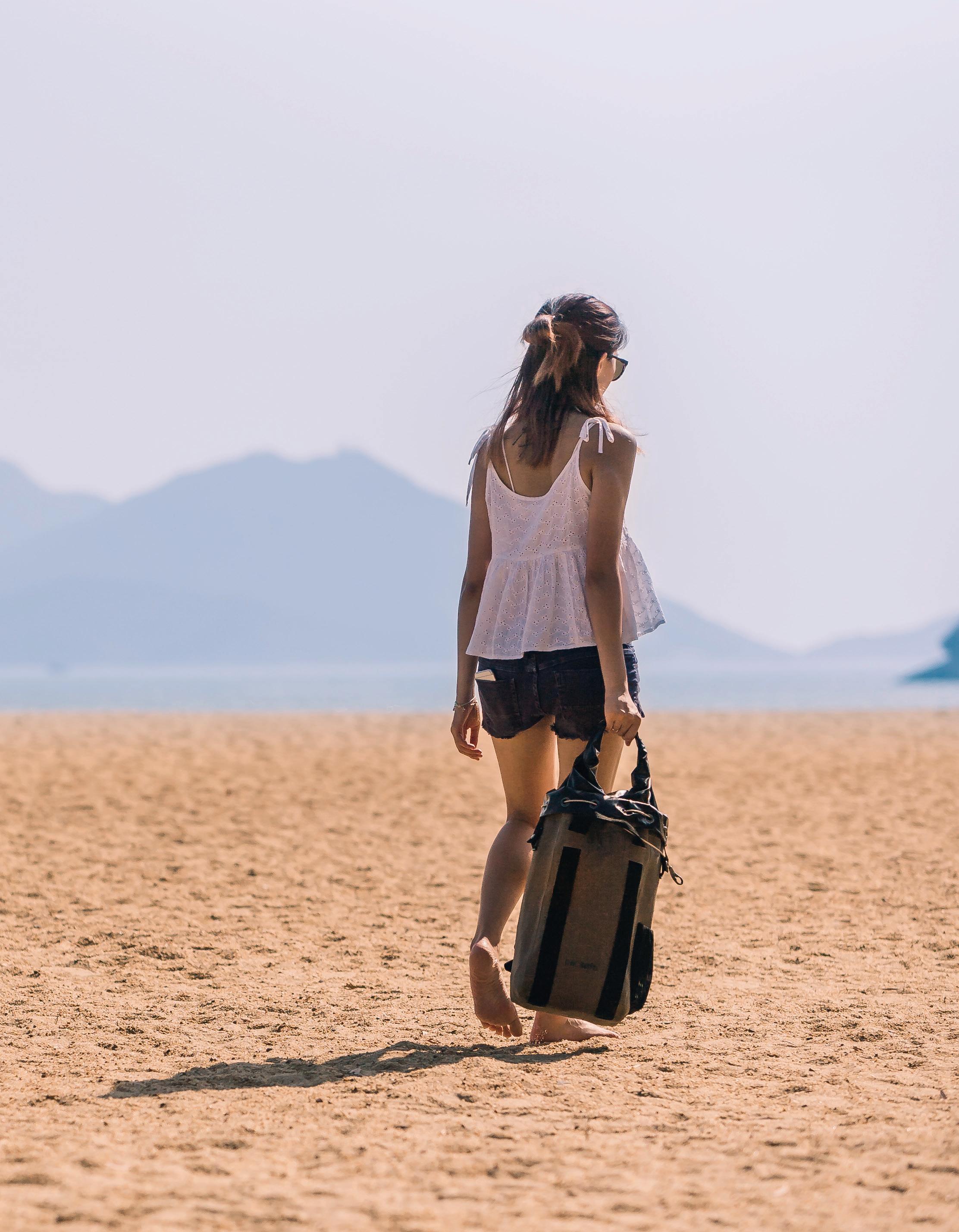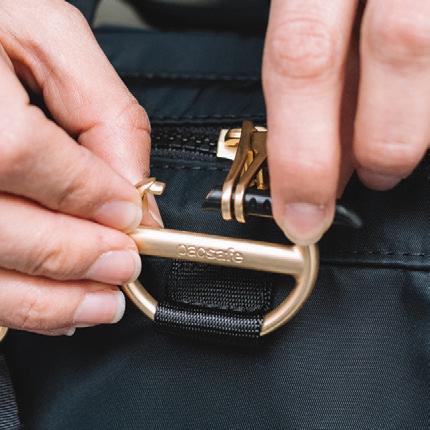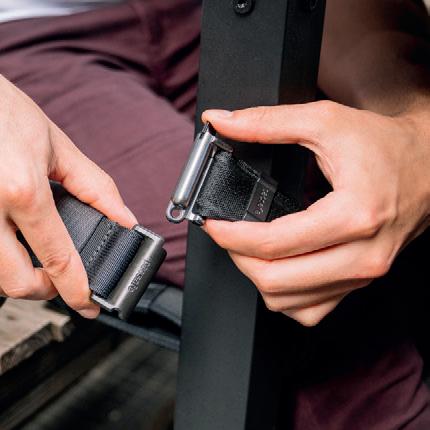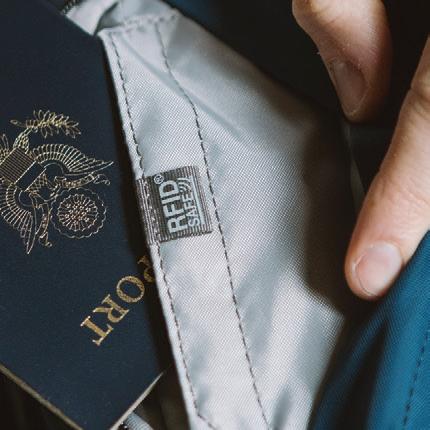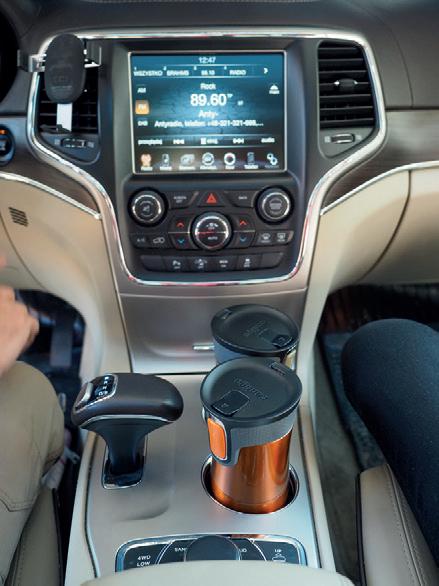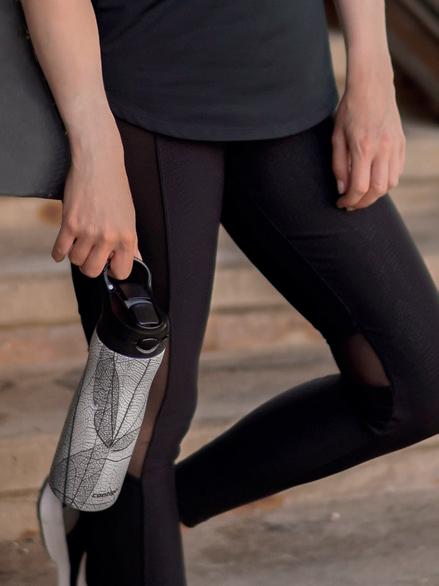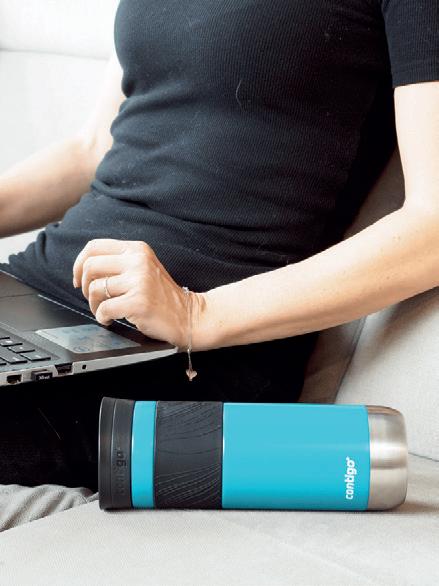No. 19
1(19)/2022
JANUARY/FEBRUARY

WHAT KIND OF DIVERS ARE WOMEN? An island of the DODO bird


No. 19
1(19)/2022
JANUARY/FEBRUARY

WHAT KIND OF DIVERS ARE WOMEN? An island of the DODO bird

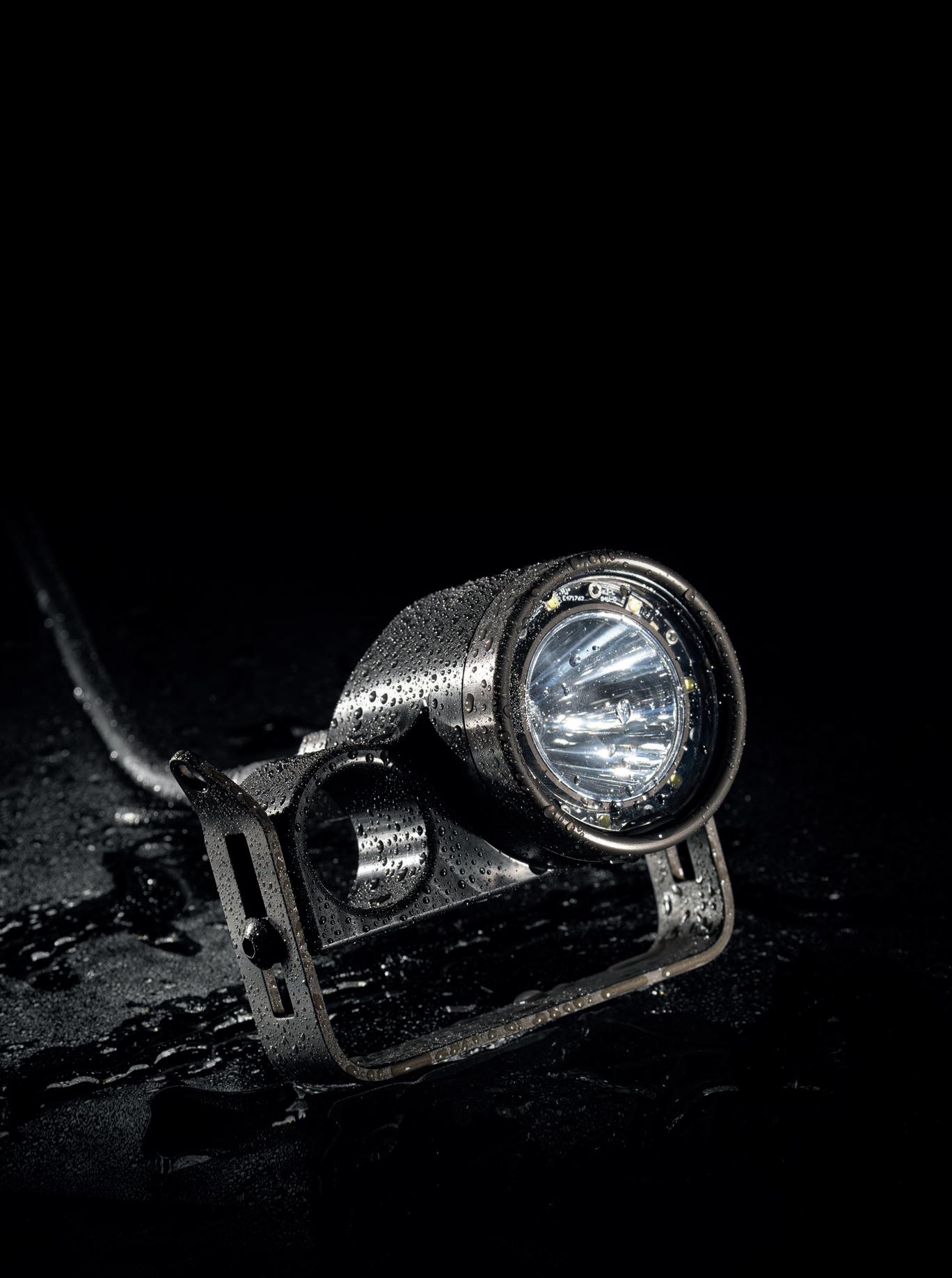

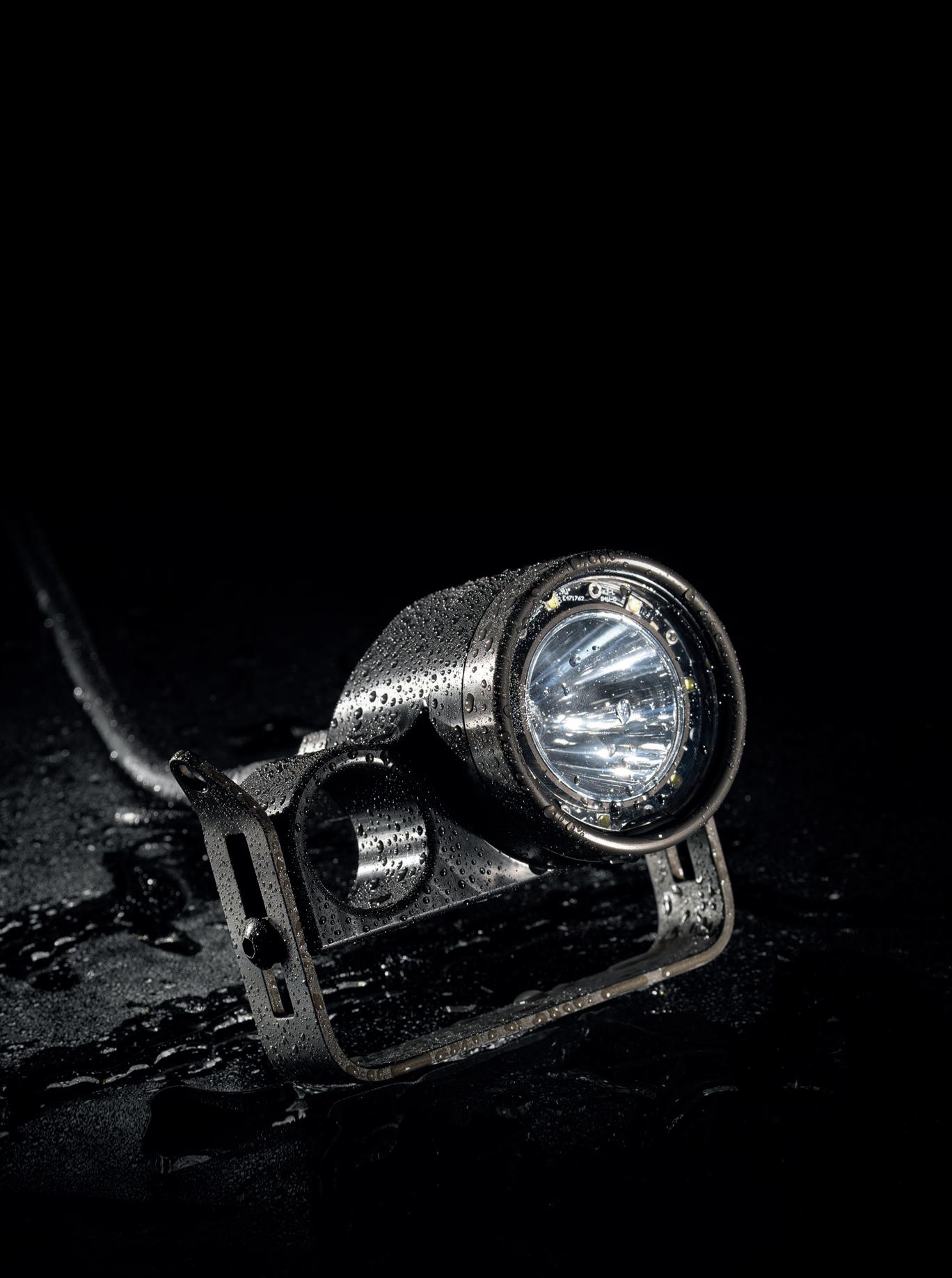
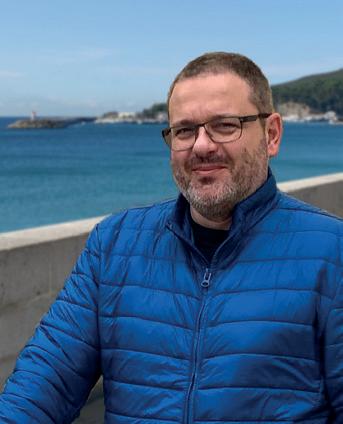
WWOJCIECH ZGOŁA Editor-in-Chief
e have entered the New Year 2022. Before you is a new edition of our magazine, in which, among other things, we talk about resolutions for the upcoming less than 365 days.
But first I would like to mention the Kingdom of Tonga. On Saturday, 14th of January 2022, the underwater volcano Hunga Tonga erupted there. This beautiful archipelago was hit hard not only by the eruption itself, but also by the resulting tsunami. The dust poses a direct threat, as it settles on the lungs (and one needs to breathe) and contaminates drinking water intakes. Tonga was considered a great place for diving. You could see tropical fish, the reefs were in very good condition, and the possibility to swim with humpback whales was the most appealing attraction of the islands. I hope that nature will recover quickly and will not suffer as much as it might seem.
In the magazine you will find a lot of content – this time about mines. The issue begins with Tuna written by Tomek Ramutkowski, who also designed the cover. There are slate mines in Germany and a mine in Belgium. Another highlight is the little-known "Kamyk" quarry.
You can expect to read a whole lot about travel, too. Bogdan Trzcionka writes for you about Mauritius in times of pandemics, Michal Černy about Cuba, and Ania Sołoducha invites you to Ecuador.
After the last issue's text on the slaughter of pilot whales, these beautiful mammals are back again. This time Jakub Banasiak describes short-finned pilot whales living off Tenerife.
Winter is the season for swimming with orcas, perhaps the best hunting predators of the seas and oceans. Klaudyna Brzostowska went for a swim with them and shared her story with us.
At the very end in Tecline Academy, an interesting article about female divers. You are sincerely invited to dive right into it.
Let us conclude with some information. We would like to thank Bartosz Pszczółkowski for supporting the editorial team in the past time. Since January our team has been supported by Karola Takes Photos. We’re going to keep on publishing the magazine as a 2-monthly. We have not raised the price for the printed version, but for ecological reasons we are providing it to subscribers and writers.
See which companies are supporting us this year! We will be supporting them and recommending them for your purchases. On some of them you will get a discount with the CODE perfectdiver :) And you can always support us financially!



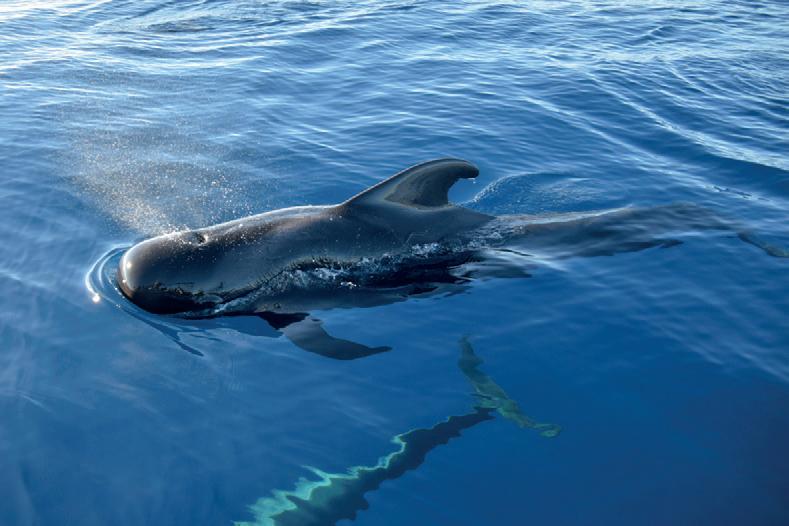

Wojciech Zgoła Mateusz Popek
Karolina Sztaba Hubert Reiss
Agnieszka Gumiela-Pająkowska Arleta Kaźmierczak
Reddo Translations Sp. z o.o. Piotr Witek
Lawyer Joanna Wajsnis Brygida Jackowiak-Rydzak
(Julieta Ulanovsky) Open Sans (Ascender Fonts) Spectral (Production Type)
Wieland Drukarnia Cyfrowa, Poznań, www.wieland.com.pl


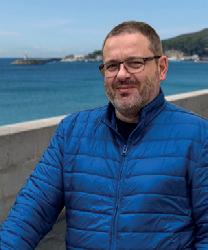
He often repeats that he travels by diving and that is his motto. In 1985 he obtained a yacht sailor's license, and only in 2006 began to dive. In the following years he improved his skills by obtaining the Dive Master degree. He completed nearly 650 dives in various climatic conditions. Since 2007, he has been taking photographs underwater, and since 2008 he has also been filming. As an independent journalist, he published dozens of articles, mainly in journals dedicated to diving, but not only. Co-author of photo exhibitions in Poland and abroad. He is passionate about and propagator of diving. Since 2008 he has been running his own website www.dive-adventure.eu. On the basis of extensive experience, in August 2018 he created the new Perfect Diver Magazine

”My passion, work and life are under water.” He has been diving since 2009. Since 2008, he's walking in caves. Underwater archeologist by education. He participated in numerous projects in Poland and abroad. He has been engaged in professional diving since 2011. In 2013 he obtained the qualifications of a 2nd class diver. Has experience in underwater work both at sea and inland. Since 2013 he has been diving in caves, especially in the mountains, and since 2014 he is a diving instructor CMAS M1. In June 2020, he obtained a doctoral degree in underwater archeology.
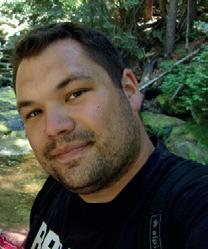
An IT specialist by profession, but a flesh and blood salesman who is not afraid of any job. Diving has always been my big dream. At the beginning it was supposed to be a challenge, a short episode but it turned out to be a passion for the end of the world and one day longer. Under water I react and rest. As a Divemaster, sidemount Razor diver, and recently also a photographer, I realize my dreams by admiring and immortalizing the beauty of the underwater world. "Passion breeds professionalism, professionalism gives quality, and quality is a luxury in life. Nowadays, especially..."
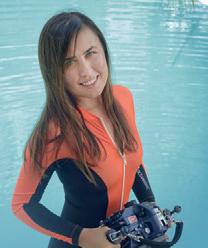
Karolina Sztaba, and professionally Karola Takes Photos, is a photographer by education and passion. She is currently working at the Trawangan Dive Center on a tiny island in Indonesia – Gili Trawangan, where she moved to live four years ago. She photographs above and below the water. In addition, she creates photographic projects against littering the oceans and polluting our planet with plastic ("Trapped", "Trashion"). She cooperates with NBO organizations dealing with environmental protection and actively participates in pro-ecological actions (coral protection, coral planting, cleaning the world, protection of endangered species). She is also the official photographer of Ocean Mimic – a brand that creates swimwear and surfwear from rubbish collected on the beaches of Bali. She cooperated with many brands of diving equipment for which she created advertising campaigns. In 2019, she became the ambassador of the Polish company Tecline. She has been a technical diver for two years.

Has more than 8000 dives on his account. He has been diving for over 30 years, including over 20 years as a technical diver. He is a professional with great theoretical and practical knowledge. He is an instructor of many federations: GUE Instructor Mentor, CMAS**, IANTD nTMX, IDCS PADI, EFR, TMX Gas Blender. He participated in many diving projects and conferences as a leader, explorer, originator or lecturer. These included the Britannic Expedition 2016, Morpheus Cave Scientific Project on Croatia caves, GROM Expedition in Narvik, Tuna Mine Deep Dive, Glavas Cave in Croatia, NOA-MARINE. Professionally, he is a technical director at TecLine in Scubatech, and a director of training at TecLine Academy.

Polish photographer, winner of awards and distinctions in world underwater photography competitions, has already dived all over the world: with sharks and whales in South Africa, with orcs behind the Arctic Circle, on Galapagos with hundreds of hammerhead sharks and humpback whales in the Tonga Islands. He participates in specialist photographic workshops. He has been diving for 27 years, he started at the age of 12 – as soon as it was formally possible. He was the first in the world to use the Hasselblad X1d-50c camera for underwater macro photography. Recently, in the remote Chincorro archipelago on the border between Mexico and Belize, he did it again, taking a successful attempt to photograph the eye of a crocodile with a macro lens with an additional magnifying lens, which is the world's largest photo of the crocodile's eye living in the wild (in terms of pixel count, print size, quality).
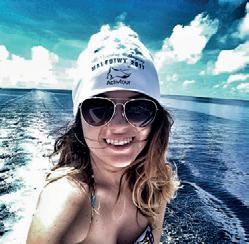
A graduate of Geography faculty at the University of Wrocław and an incurable optimist… with a permanent smile on her lips! It was probably Destiny that led her to Activtour… and she's been here on permanent basis. She passionately fulfils the dreams of many, organizing diving trips around the world, and she has already been diving for more than half of her life. Each year she explores a different ‘piece of the ocean’, pinning another pin to her diving world map. In winter she changes fins into her beloved skis and gets away into the Alps. A recipe for life? ”The only a dead trunk flows with the current – the explorer's canoe flows up the river!” anna@activtour.pl activtour.pl; travel.activtour.pl; 2bieguny.com

"Wet photos" – He has photographed since he remembers. After several years of experience as a diver, he wanted to keep memories of underwater dives. He bought his first compact camera with an underwater housing. Over time, however, the desire to have the best photo began to dominate, which was not quite possible with the compact he used. That's why he switched to the Olympus PEN E-PL 5 reflex camera, which allows the use of several different lenses. He uses a combination of underwater flashes and lights. He focuses on wildlife photography, not arrangement. He photographs in fresh domestic waters as well as in the seas and oceans of the world.
He has already won numerous awards at Czech and foreign photography competitions. More photos can be found on his website, where you can also buy them not only as photos, but also as photos printed on canvas or on another medium. www.mokrefotky.cz
www.facebook.com/MichalCernyPhotography www.instagram.com/michalcerny_photography/
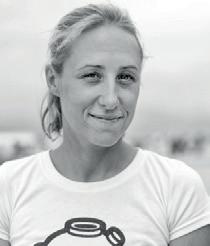
Laura Kazimierska is currently working as PADI Course Director at TrawanganDive Center on the Indonesian island of Gili Trawangan. Founder of the Divemastergilis portal.
www.divemastergilis.com @divemastergilis
For over 7 years she has lived and discovered the underwater world of Indonesia. She is not only an avid technical diver, but also the face of the Planet Heroes platform and the ambassador of the Ocean Mimic brand. She actively contributes to the promotion of the protection of corals and the natural environment of fish and marine animals by taking part in scientific projects, campaigns against ocean littering and cooperating with NGOs in Indonesia. @laura_kazi

Since I was a child, I had dreamed of becoming a marine biologist and I managed to fulfill that dream. I did a degree in oceanography, where I recently started my doctoral studies. My diving adventure began when I was 12 years old. I love observing the underwater life up close and I try to show other divers how fascinating the underwater, Baltic creatures are.
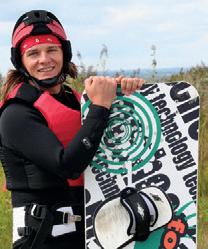
WOJCIECH JAROSZ
A graduate of two Poznan universities, the Academy of Physical Education (coaching specialization – handball) and the University of A.Mickiewicz, Faculty of Biology (specialty of experimental biology). He connected his professional life with this first university trying to influence the direction of development of future professionals on the one hand, and on the other planning and implementing research, pushing laboriously in the right direction of the stroller called science. In his free time he spends his time actively – his main passions are sailing (sea helmsman), skiing (downhill skiing instructor), riding a motorcycle, recreational diving and many other activities, as well as photography, mainly nature.
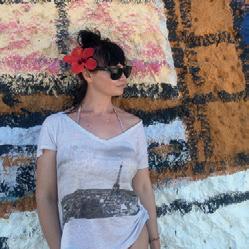
A traveller and a photographer of wild nature. A graduate of journalism and a lover of good literature. She lives in harmony with nature, promotes a healthy lifestyle: she is a yogini and a vegetarian. Also engaged in ecological projects. Sharks and their protection are especially close to her heart. She writes about the subject in numerous articles and on her blog www.divingandtravel.pl. She began her adventure with diving fifteen years ago by total coincidence. Today she is a Divemaster, she visited over 60 countries and dived on 5 continents. She invites us for a joint journey with the travel agency www.dive-away.pl, of which she is a co-founder.
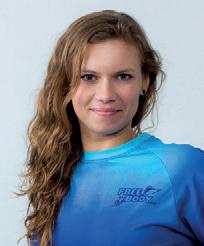
AGNIESZKA KALSKA
”I can't imagine living without water, where in a free body I experience freedom of the spirit.”
• founder of the first freediving and swimming school in Poland – FREEBODY,
• Apnea Academia International and PADI Master Freediver freediving instructor,
• world record holder in freediving (DYN 253 m),
• record holder and Polish champion, member of the national team in freediving 2013–2019,
• winner of the World Championships in freediving 2013, 2015, 2016 and 2018,
• multimedalist of the Polish Championships and a member of the national team in swimming in the years 1998–2003,
• passionate about freediving and swimming.

That's my name and I come from Poznań. I have been associated with water practically from birth and with diving since I learned to walk. My grandfather instilled my passion for the underwater world, a CMAS*** instructor taking me to the lakes at any free time. I obtained my first qualifications in 1996. A year later I went to Croatia and literally went crazy at the sight of blue water, octopus and colorful fish;) I bought my first underwater camera – Olympus 5060 and started the adventure with underwater photography. I acquired my diving experience in the Canary Islands, Sardinia, Norway, Maldives and in Polish lakes. I am currently a Padi and ESA instructor, I train diving enthusiasts in Europe and pass my passion on to others.
I invite all lovers of the underwater world and photography to Beediver (FB) – see you soon.
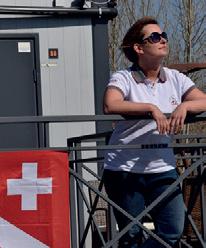
IRENA KOSOWSKA
Regional Manager Divers Alert Network Polska, diving and first aid instructor, technical diver and cave diver. In love with all flooded, dark, cold, tight places and invariably from the beginning of the diving route – in the Baltic. Implementing the DAN mission, he conducts a series of lectures ”Dive safely” and Diving Safety Laboratory, so field research of divers for scientific purposes.

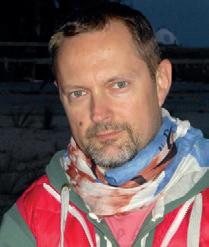
He has always been fascinated by the underwater world, and from the very beginning of his diving journey, he has been associated with the wrecks of the Baltic Sea. Currently, he has completed several thousand dives in various places around the world. He dives mainly technically, wreck and cave. Fascinated by rebreathers and underwater photography. Tomek is an Instructor Trainer, rebreather, technical, wreck and sidemount instructor in several training organizations. For over 10 years, he has been sharing his knowledge with others, focusing on high quality training. Founder of the 4baltic Association, owner of Deepbusters and Wreckbusters. www.4baltic.pl www.deepbusters.pl www.wreckbusters.pl www.facebook.com/tomekramutkowskitechnical
Diver from 2008. Passionate of the Red Sea and pelagic ocean predators. Devoted to the idea of protecting dolphins, sharks and whales. He dives mainly where you can meet these animals and monitor the level of their well-being. Member of Dolphinaria-Free Europe Coalition, volunteer at Tethys Research Institute and Cetacean Research & Rescue Unit, associate of Marine Connection For 10 years he has been involved in research on wild dolphin populations and audits dolphinariums. Together with the team ”NO! For the Dolphinarium” he prevents dolphins from captivity and promotes knowledge about dolphin therapy unsaid or concealed by centers which make money on this form of animal therapy.

PADI diving instructor and videographer. She spends most of his time in the water documenting a fascinating underwater world. She graduated from the Academy of Fine Arts in the field of Fashion Design in Łódź and Film studies at the Adam Mickiewicz University in Poznań, trained as a tailor, and with a love of nature and a large dose of adrenaline. She loves everything related to water. Her diving adventure began with a backpacking trip in 2016. During her stay in Thailand she dived for the first time and from then on she got hooked on at this sport. Spending the last years and most of her days under water, teaching and showing the beauty of the underwater world in Asia, she believes that diving means unity –unity with own mind, nature and unusual creatures.
@waterographyk




Belgium Military, underwater cave explorer and active technical/ cave/ rebreather diving instructor for IANTD. He started his diving career in Egypt on vacation, and his passion continues. Kurt is also the founder and CEO of Descent Technical Diving.
He dives on several CCRs such as AP, SF2, Divesoft Liberty SM. Kurt is involved in the creation of the document about the new salt mine in Belgium (Laplet). This project was featured in the news on Nationale TV. Privately, Kurt's true passion is deep cave diving. His wife (Caroline) shares her husband's passions and also dives in caves. In his free time, he visits Belgian slate mines, and when he is not exploring, he takes his camera to document the dives.
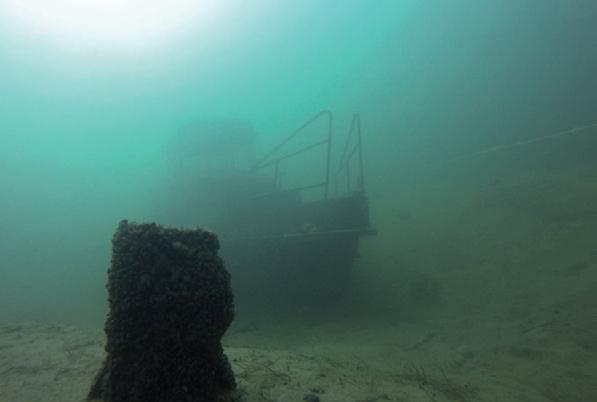
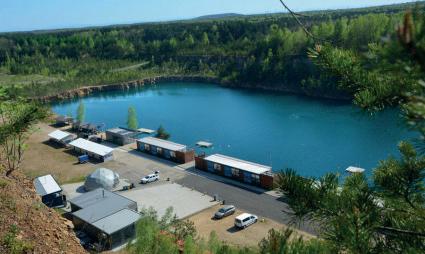

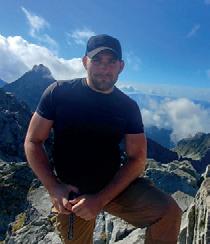
Passionate about water and its secrets. From an early age it was hard to get me out of it. In high school I got my hands on horror stories by H.P. Lovecraft. Dark? Cold? Ancient gods? I'm in!
Currently during the Divemaster course. I am preparing to "take on the glove" as a military diver. The underwater world that I visit the most is the darker and less known one.
I live actively and I do a lot of things that make me feel alive. Diving was not my dream, I did the first degree of OWD to increase my chance of getting into service in the fire brigade, which was not given to me. Currently I serve as a soldier and diving has become one of my main passions. It gives me the opportunity to see a piece of the world reserved for the few. Communing with the underwater nature and its wild side is amazing.
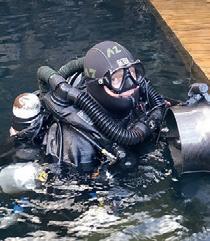
I dive with passion, for over a dozen years mastering my knowledge and skills. Every free moment I devote to my passion, which I practice with friends and acquaintances, that makes it even better. Almost always I record my dives on film, I hope that they can be an inspiration for others to explore the underwater world. See you on the other side of the mirror YouTube channel: Andrzej Z

"Sitting at home is the greatest punishment" is my motto.
I am an enthusiast of all kinds of activities: diving, motorcycling, cycling, climbing, etc. I have been diving with aqualung for 10 years, 3 of which as a dive instructor. Overhead environments have been my main travel destinations for a long time. I fulfill my little dream of being a camera reporter in an underwater housing looking for thrills and spectacular landscapes. Black drysuit makes me look like a very serious technical diver, but those cylinders and colorful bungie rubber inserts quickly dispel that illusion ;)

I am an ASTD Trainer, PADI Instructor, technical and cave diver. For my passion, born back in time black and white picture tubes with Jacques Cousteau, I parted with IT and gave up a comfortable job to enter the professional path in 2014 and open your own diving center. I adore diving tourism and each year I organize a dozen or so distant and close diving trips. After several thousand fantastic dives I still do not feel full of the world and I try to infect others with love for blue planet. Currently, I also run the Polish branch of the Association of Sport and Technical Divers.

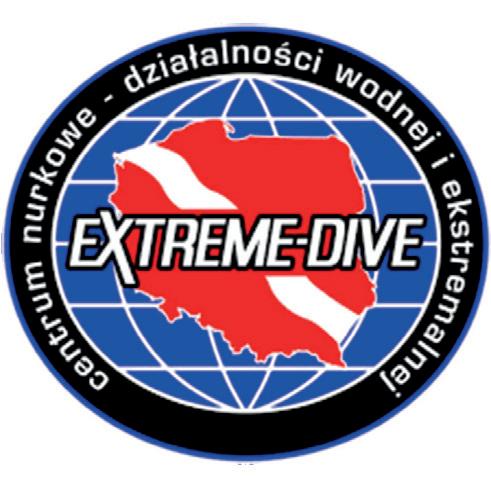

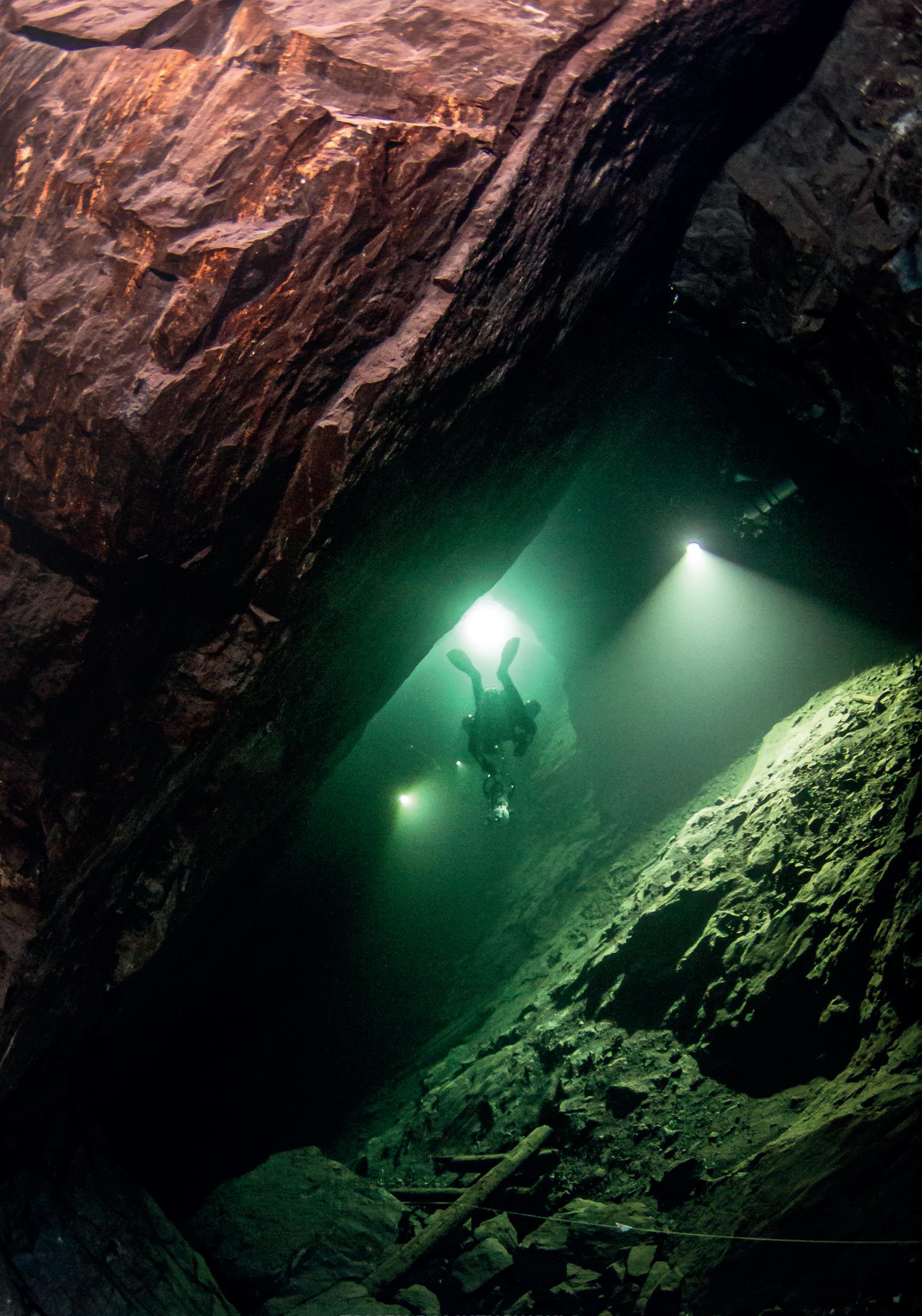
Text and photos TOMEK RAMUTKOWSKI
SOMEWHERE IN THE MIDDLE OF NOWHERE, 197 KM AWAY FROM STOCKHOLM IN A STRAIGHT LINE, 250 KM AWAY FROM OSLO, NORWAY, 542 KM FROM COPENHAGEN, DENMARK AND 970 KM FROM WARSAW, THERE IS A MAGICAL PLACE.
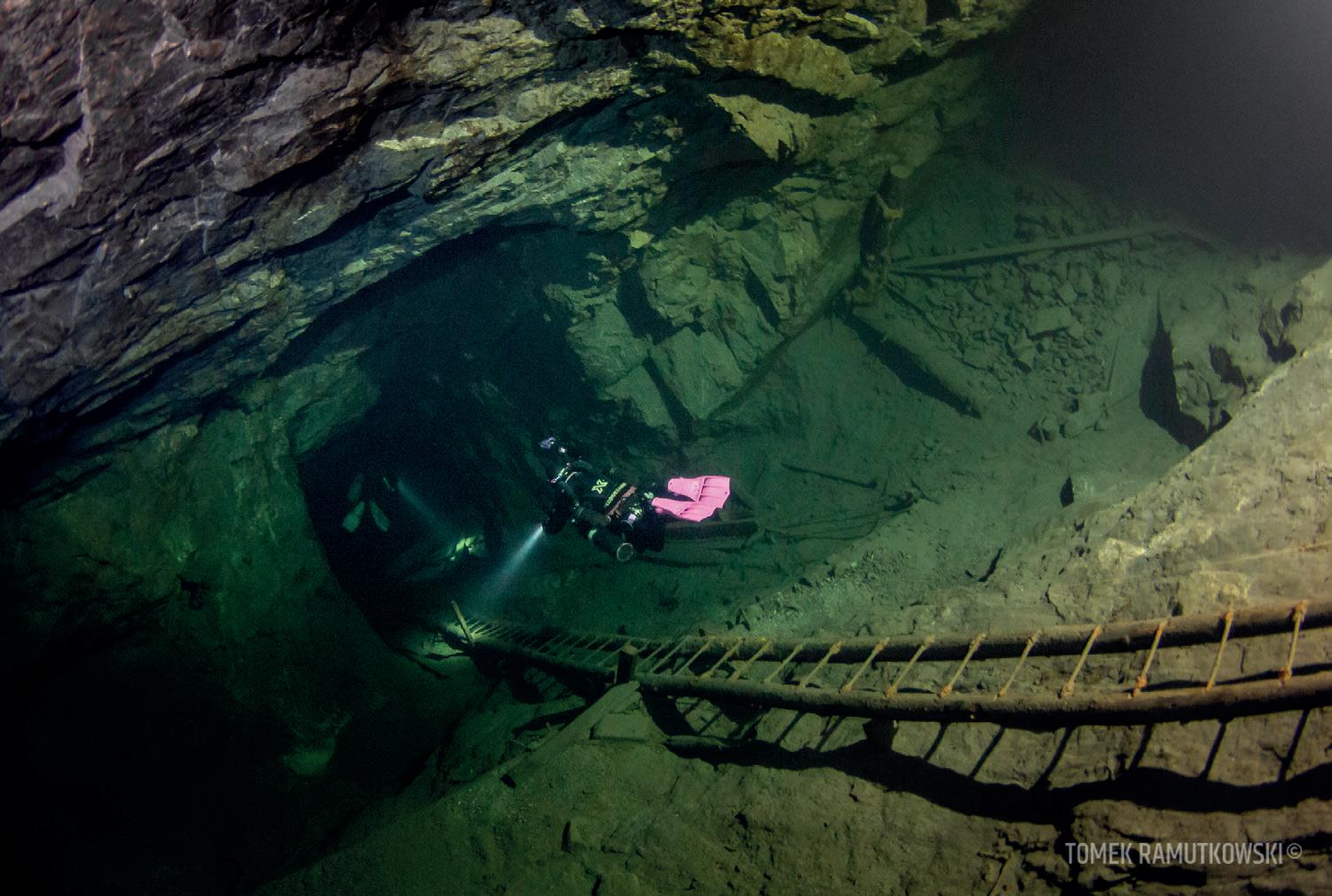
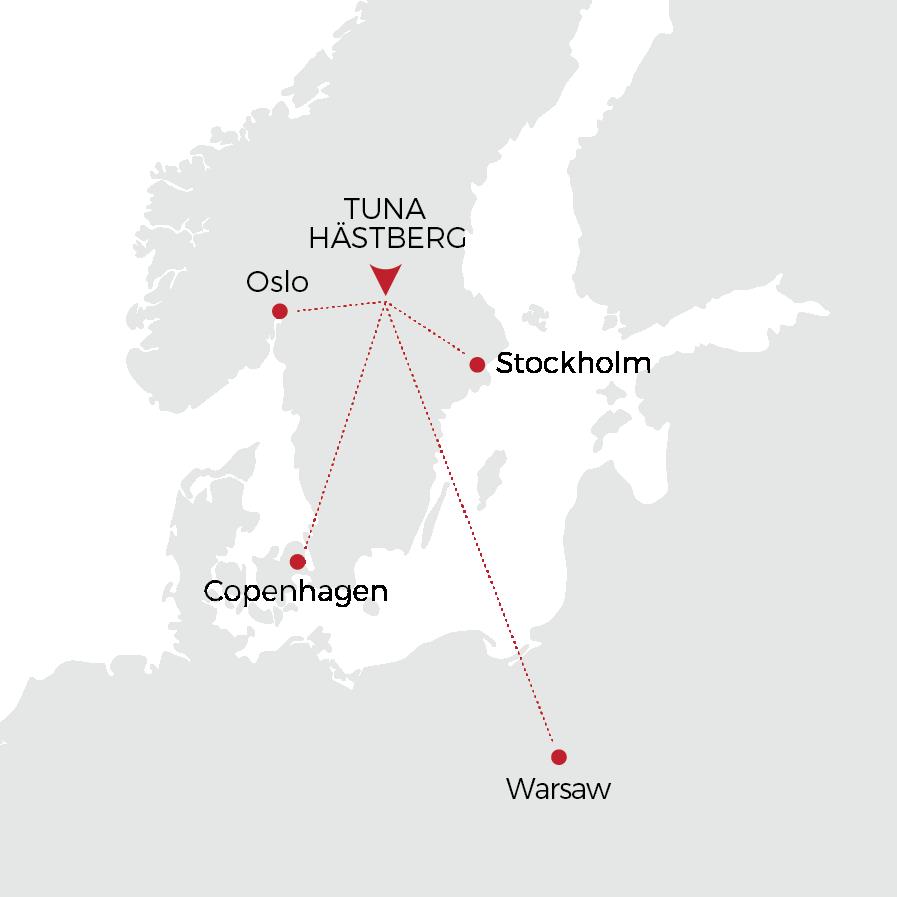
It is hidden between mighty spruce trees of an old Scandinavian forest. Just at the outskirts of a small town, quite often covered with pure white snow, particularly in December, when I last visited it. Both the snow cover and air temperature, typically around -15°Celsius, made the climate there truly enchanting.
Well, that’s all cool and stuff, but this magazine is supposed to be about diving, not “Frozen” winter cartoon landscapes, so where can I dive there, you might ask.
The place is Tuna Hastberg – an iron ore mine, which attracts divers from all over Europe like a giant magnet.
To discover the beauty of the place, you need to go deep underground, descending down more than 400 steps, inclined at a 45 degree angle, leading 120 meters below the Earth’s sur-
face. It is the main level that can be accessed without getting wet, leading to the diving zone.
Who treaded these stairs will know how impressive the experience is. Their surroundings are exceptionally interesting, as you can watch the remains of the old mine’s infrastructure. It is a wonder that the miners of the time would use it everyday going to work (and back! – ed.). Looking at all these elements we have to admit that those people were of an exceptional courage.
Who walked these stairs also knows that climbing them up back to the surface after an entire day spent underground diving is quite a challenge even for the fit divers.
Luckily, there is a cargo rail lift going both ways. You can pack all your dive gear there and have it delivered to your desired depth, from where it can be further transported by hand carts to the diving zone, and then after you are done diving, it can be comfortably sent back to the surface.
Just to think that the first crew to explore the mines had to take their dive gear all the way down to do the dive and then they had to get back to the surface carrying all that stuff. And all that in just one night, as at the time the mine was officially off limits. Back then the infrastructure was not yet adjusted to meet divers’ needs, so logistics were much harder.

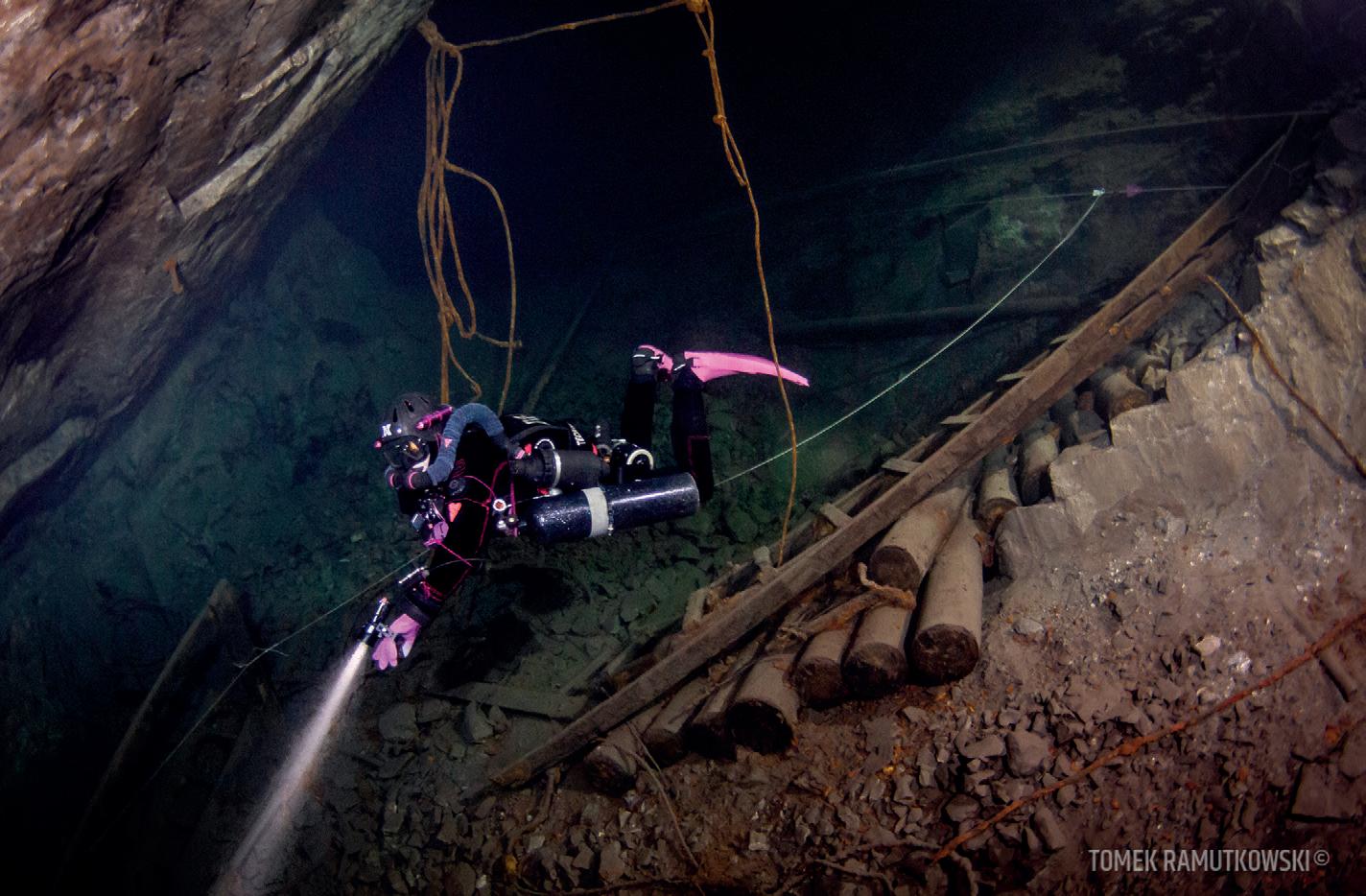

Luckily, the mine is now available to the public and even more importantly, adjusted to accomodate “dry” trips organized there. But that’s not all, it’s ready for diving!
In the diving zone, you can find everything you need to comfortably prepare for diving, setting your gear straight after diving and catching a breather before going under again.
The diving zone is fitted with:
` benches where you can gear up
` a deck with seats just above the water, where you can make your final preparations before going in ` access to gases: air, oxygen, nitrox, trimix
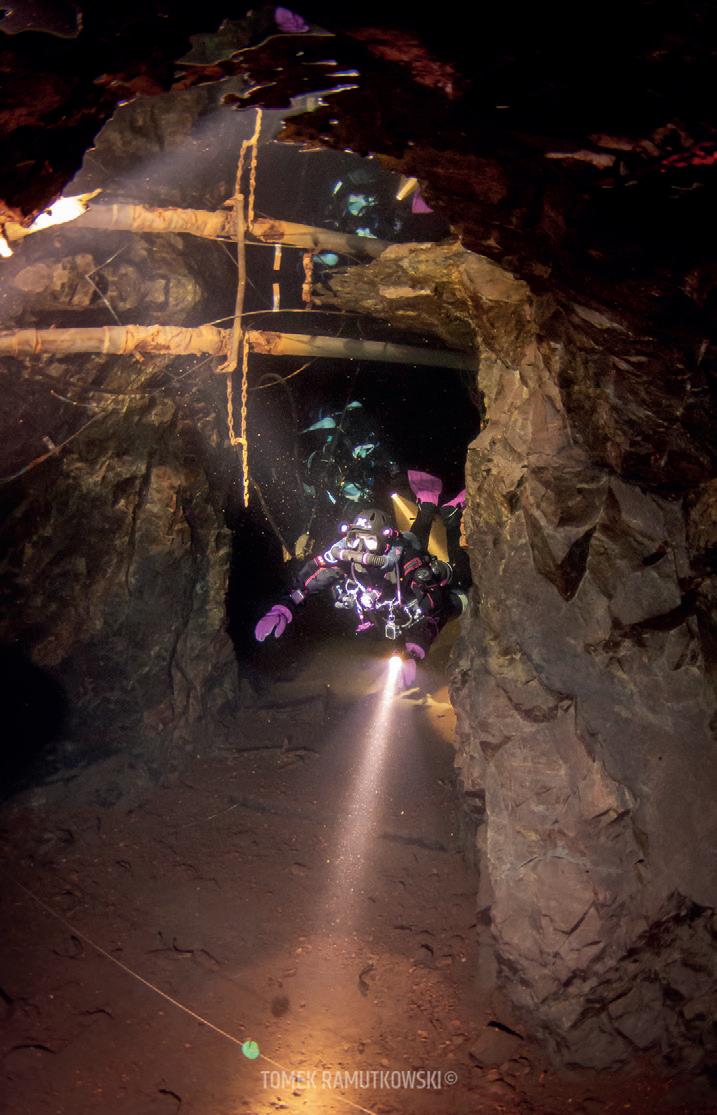
` a dry and warm zone with a dining area equipped with a microwave oven and a wireless kettle.
Preparations have been made at the mine to make sure spending several days there without even getting back to the surface would be pleasureable. That’s of course if you remembered to bring some food with you:)
The underwater part of the mines is just magical, incredibly beautiful, exceptionally charming and fabulous. I could sing its praises till the end of time. However there are no words to fully express the atmosphere of this place. There are no words to express the emotions, the excitement you feel, when you explore more corridors with anticipation, curious about what can wait around the next corner, in the next room. You just have to be there, to experience it on your own. To see for yourself how it feels to float in the depths, surrounded by artefacts from the place’s glorious past.
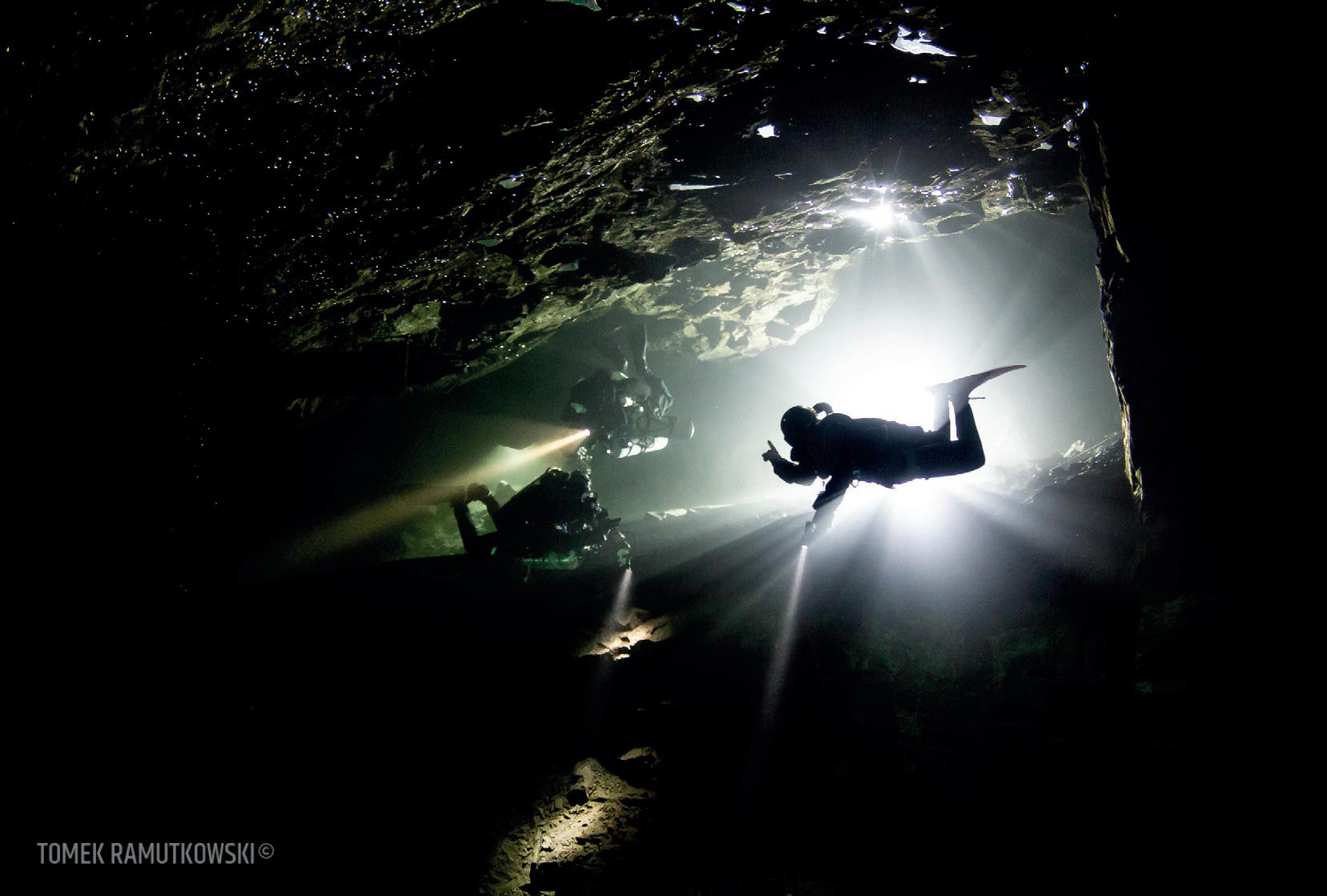
The water is crystal clear, so you’re under the impression that you’re flying around old passageways, spacious chambers dozen or so meter high, elevator shafts or smaller gateways between levels.
You can find carts left on the tracks there, as if someone was mining there just a day before. Ladders scattered around in many places, like a set of giant jackstraws. Spools of various cables and so on. Finally you can find many rooms with old electricity boxes, which were used to distribute power throughout the mines, and wooden room structures hanging in the darkness like treehouses above the abyss.
And all this is waiting only in first level, extending no deeper than 35 meters down.
The level below lies at 75 meters depth , so it is only available for trimix divers, but it doesn’t really matter much, because there are so many interesting things to see in the first level that it would be hard to see everything in just one trip.
If you want to dive in the second level, apart from having trimix diving certification, you also need at least 10 hours of
documented experience in this particular mine in the first level and obtain permission for this dive. As you might know from a story of some Finnish divers ;), these rules are followed to the letter by the mine’s management.
Water and ambient temperature is 4°C practically everywhere. There are but a couple of corridors where, for unknown reasons, it drops down to 2°C. You will need a high-performance undersuit and underwear to go with your drysuit. It is also definitely a good idea to get an electric heating system, which makes diving super enjoyable.
We do not know the exact date when people started mining for iron ore in Tuna. Some sources suggest that it started in the middle ages, however it is more likely that the first mining operations took place in the 16th or early 17th century.
What we know for sure is that in the late 16th century, in the nearby village of Laxsjön, there was a crude iron production
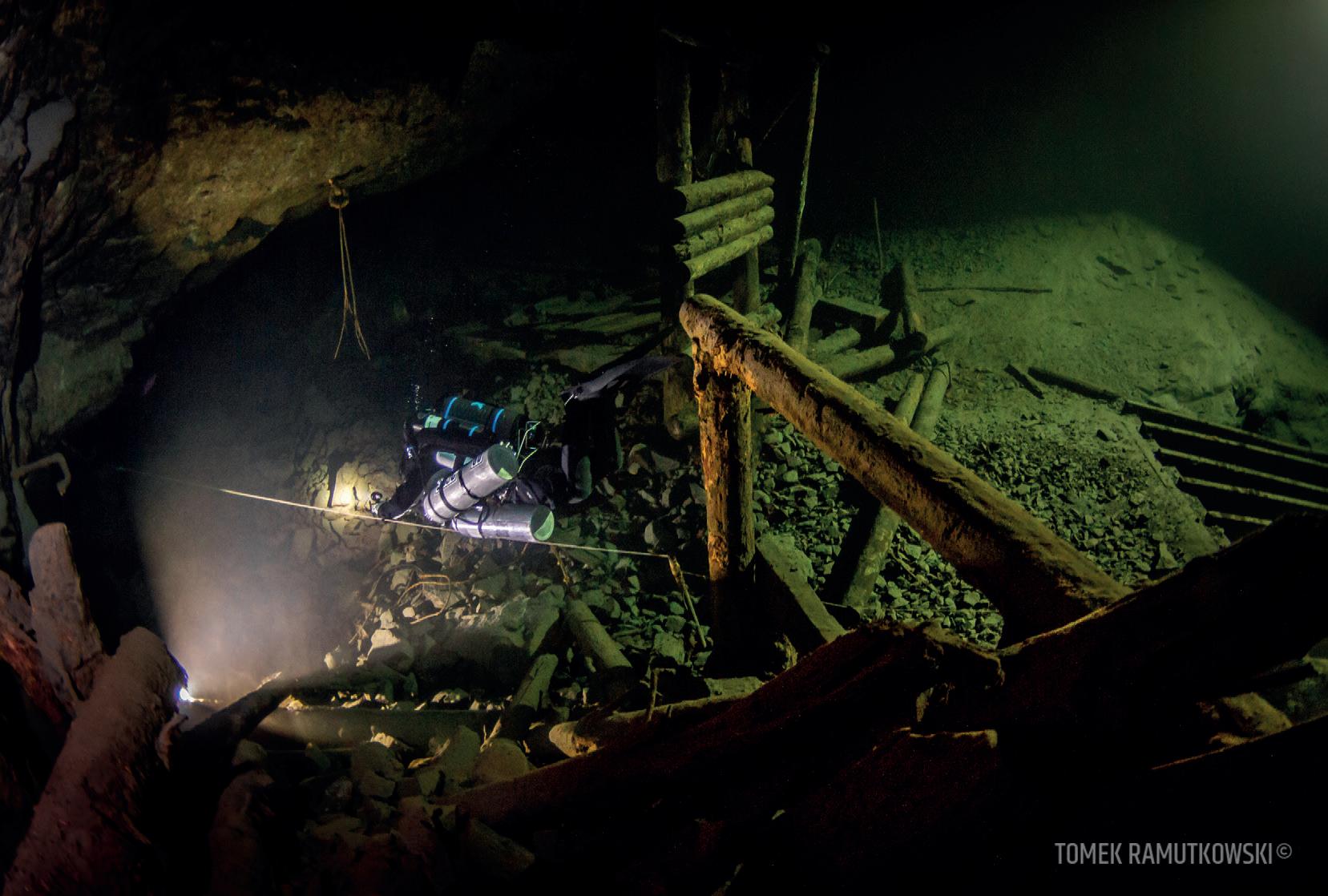
hut, and in the following years their number around the mine kept growing.
Despite operating for hundreds of years, the mine hadn’t flourished until the 20th century, due to modernization and mining advancements.
Eventually Tuna was closed in summer 1968, thus ending the hundreds of years of mining. Six million tons of ore were extracted there over those years and it is estimated that deep in the mines there are still significant deposits, at least 16 million tons.
The safety rules are typical for a mine. You are required to wear a helmet from the moment you enter the stairs until you reach the diving zone. It is especially important, as the corridors are not high and there are sharp rocks and pieces of metal protruding from the ceiling, which can be really dangerous. I was thankful for my helmet more than once:)
Diving requirements:
` overhead (mine or cave diver) certification is required
` solo dives are forbidden
` briefing with a check dive provided by the staff are mandatory during your first visit to the mine
` at least 10 hours of documented experience in this particular mine is required before you can get permission to dive deeper
` dive parameters must be recorded on the board (team, time, place, etc.)
` trimix certification for deeper dives
` cave dpv certification if you use a DPV
Non-overhead dives are possible in the mine, in the open part near the entrance, where the corridor with open access is quite long, which allows open water divers to feel the taste of how awesome this place really is. However, I must say that the true beauty of the mine can only be found after you descend to the first level.

When diving in an overhead environment, such as mines, caves or wrecks, a rebreather is a diver’s true friend. It provides much more freedom and much better safety in comparison to diving OC. But this is a topic for a separate article :)
SUMMARY
The Tuna mine in Sweden is undoubtedly a unique place. It is one of the “must visit” European overhead diving locations for those who have the appropriate certificates.
For those who don’t, Tuna can be a great source of motivation to constantly improve and get new certification, and more importantly – skills, to be able to dive in this incredible place.
I hope this article and the photos it contains, which only show a fraction of what you can see in the mine, will also motivate you to progress as divers, to claim your unforgettable dive in the fantastic Tuna mine as your prize. I wish you all good luck and I am always ready to help.

Text and photos BOGDAN TRZCIONKA
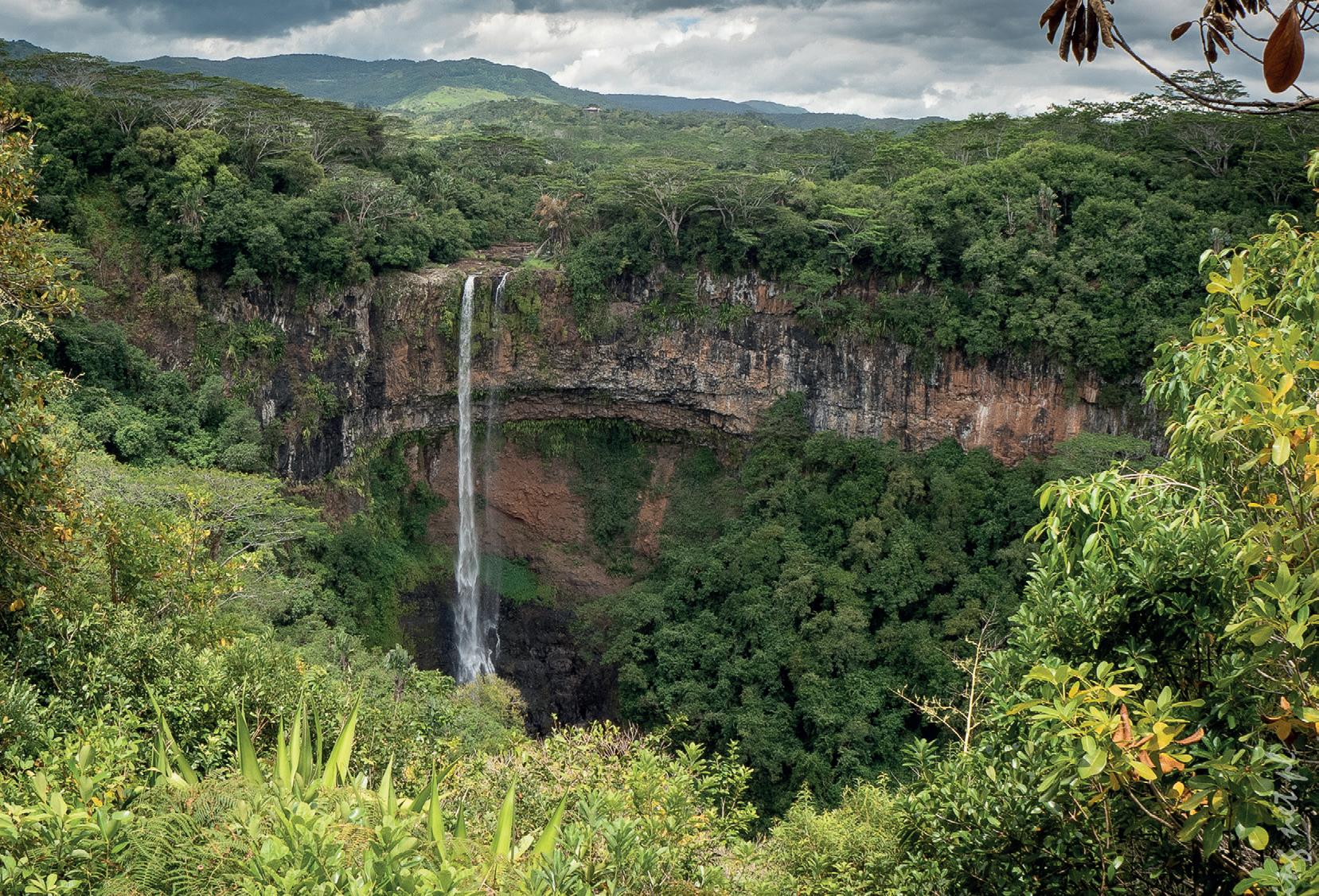

A virus brazenly spreading on our planet has once again thwarted a fantastic diving plan on the wrecks of Florida. Putting Key West off, we were forced to look around for another, equally interesting destination, and this way we learnt that after a year and a half of total isolation, in October 2021, Mauritius is opening up to tourists.
Ionce met a Mauritian woman, whom I had the opportunity to teach skiing in Slovakia. The girl who saw the white fluff for the first time in her life walked on it barefoot, despite the fact that we gave her shoes. So, I thought then that in Mauritius people live in huts and do not know shoes. Imagine my surprise after landing... (there was even an airport!). Motorways, urban agglomerations, cars that I have not seen in Europe – there were even shoe stores. Not everyone knows (I didn't know either) that the Republic of Mauritius is not a single island, but an island state located in the southwestern part of the Indian Ocean, about 900 km east of Madagascar. The safety procedures required the vaccination certificate from our entire 18-person group, but also additional tests 72 hours before departure, on-site tests at the hotel immediately upon arrival and additional tests on the fifth day of stay on the island. It was a bit overwhelming, but a man thirsty for sun and water will do anything. Fortunately, there were no unpleasant surprises. Despite a few minor shortcomings, our hotel turned out to be very good, with palm trees planted around and with 3 swimming pools, a gym and a spa. We decided to live in the northern part of the island in the town of Trou
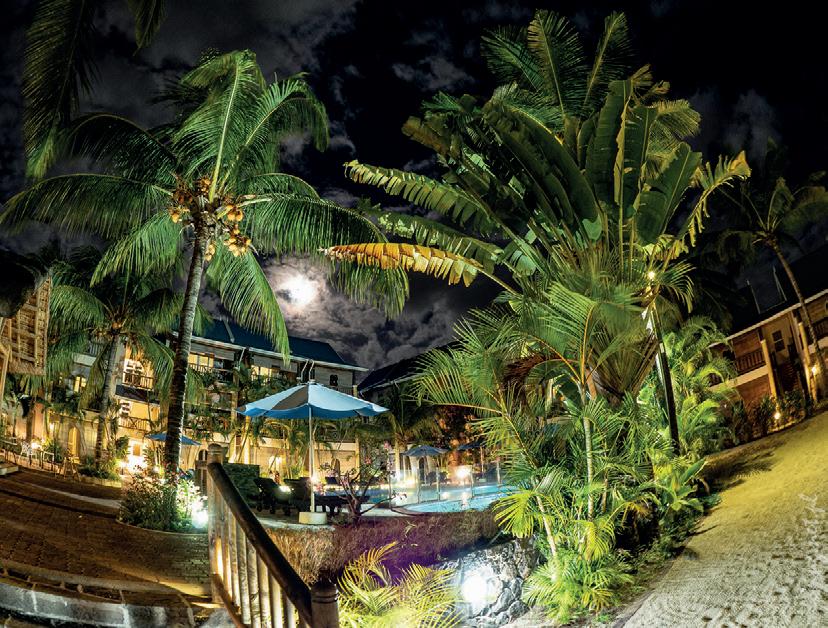
aux Biches ("Trobish" – as Creoles say) because of the best conditions for diving. Serving us The Blue Water Divers diving centre, located a kilometre away from the hotel, provided transfer, and Hugues, the owner of the centre and our guide to the vastness of the underwater world, turned out to be a real enthusiast and at every step you could see how much he still loves what he does, despite thousands of dives behind him. We were lucky to get to this place. In general, the diving area is divided into 3 zones. We dived in the first zone, as part of the basic diving package – all dives from boats on nearby reefs and wrecks located a maximum of 20 minutes from the marina. The seasons in Mauritius are not the same as ours. In October, summer, which falls between November and April, was barely beginning, so our aspirations for further waters and the desire to dive with sharks were effectively tempered by Hugues, informing about powerful currents at this time of the year, which we had the opportunity to face somehow closer to the shore. On one of the dives in the zone of stronger currents, our colleague made a mistake, swimming too high above the reef and within a moment disappeared into a big blue. Such situations always make me anxious, but Mark's experience, his composure and the immediate decision to release a buoy meant that he was quickly noticed and taken by the crew of our boat. On the official website of the diving centre we can read that having a minimum of one buoy per pair is required. During the debriefing, I wondered aloud what would happen the current took away a person without a buoy? When going diving in the seas and oceans, definitely every diver should have a buoy, a compass, and maybe even a whistle and a mirror and should know how to use them.
The underwater world of Mauritius is very different from that known from Egypt. It is in vain to look for similar, colourful reefs here. In this respect, nothing will probably not beat the Red Sea. However, the abundance of life in different locations and the availability of wrecks at small depths surprised me very positively. On subsequent dives we had the opportunity to see willingly posing for photos, largesized lionfish, moray eels, reef catfish, crabs, snappers, electric rays, stonefish and sweet amphipriones, bustling about in multi-coloured anemones. There were also giant turtles and tiny nudibranchs. In short, everything a diver needs to be happy. I'm not going to be smart and list all the species here, because I'm not a marine biologist. However, I will write with conviction that it is worth visiting this place at least once in your life. The added value of our accidental selection of Blue Water Divers was the fact that its owner was probably recognized by the underwater creatures as part of the ecosystem. By making specific guttural sounds under the water, he was able to summon a huge moray and dance with it underwater salsa! You don't know what to think while watching such a spectacle.
Due to the climate and quite a large annual amount of rainfall, the island of the dodo bird is a very green, volcanic land with magical craters, majestic waterfalls, lush forests and astonishing mountains. Going on such a long journey, it
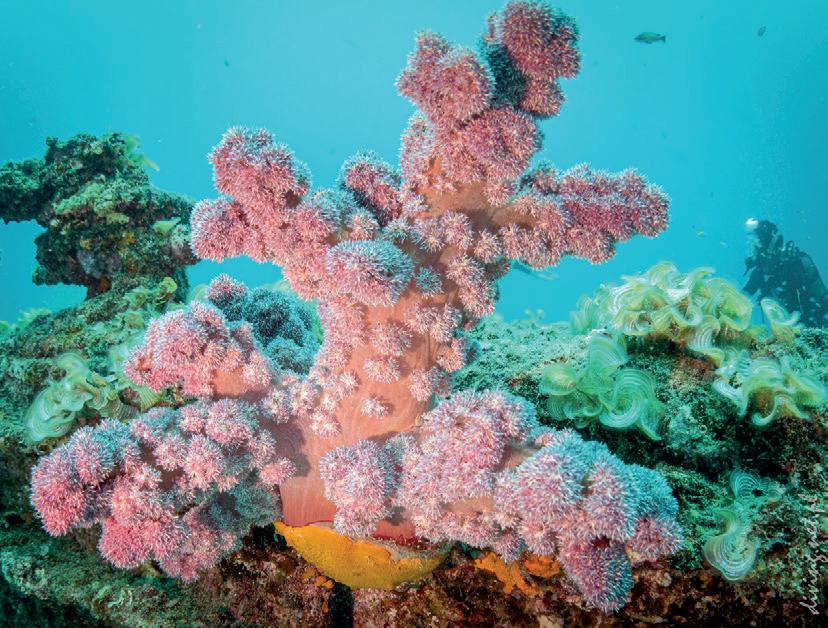
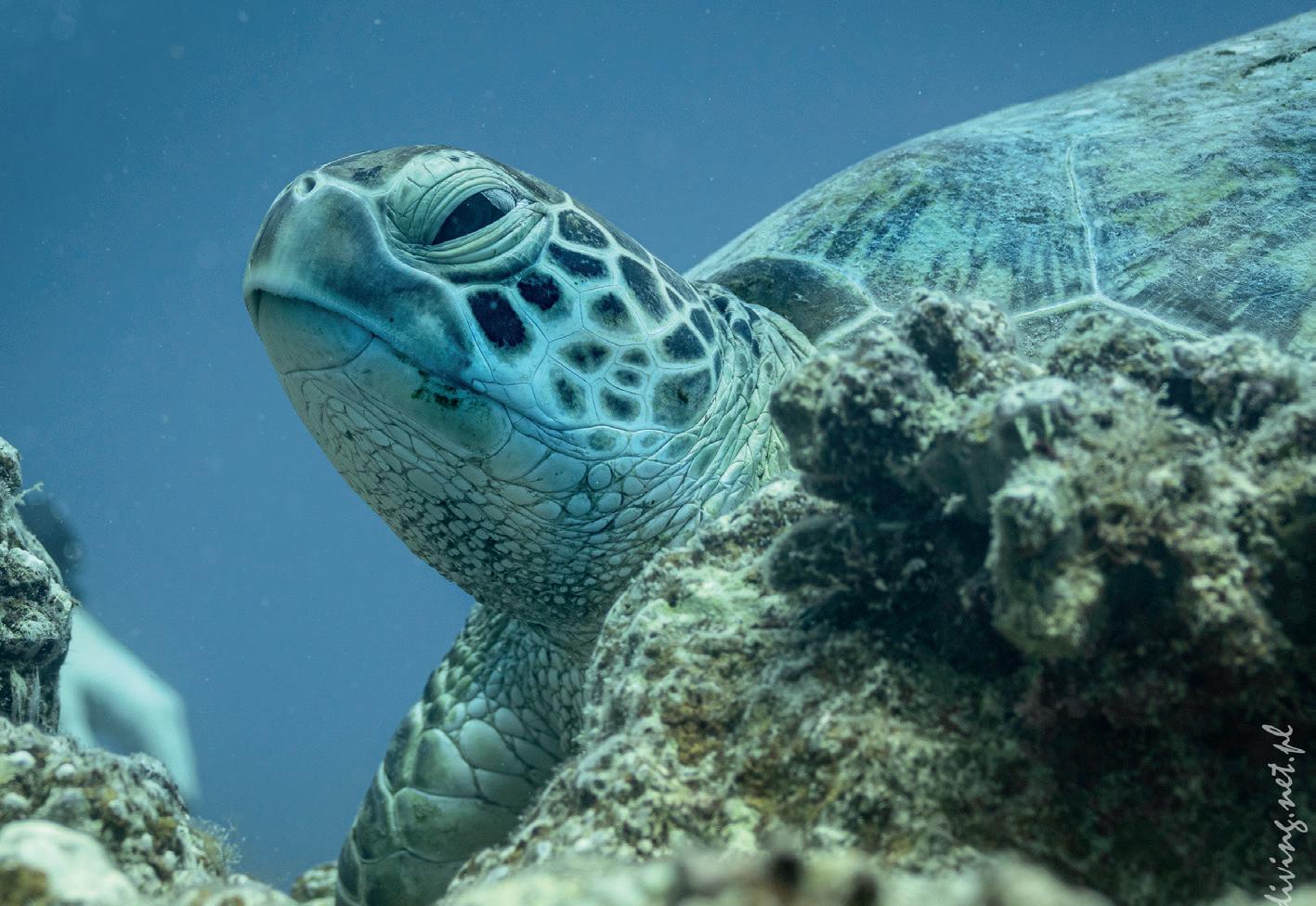


would be difficult to stop at only exploring the underwater world. After five days of diving, we decided to learn more about the nature and history of the country. Our guide around the island was Gertruda – a Pole who has been living on the island for 20 years. I was surprised to learn that there are no native inhabitants on the island. The first people here were the Portuguese visiting the island just to replenish the water supplies on the ships. Following the Portuguese, unfortunately the aforementioned large dodo bird, endemic here, in 1638 on the island appeared The Dutch. They, however, decided to colonize the island and named it after Prince Maurice of Orange. A large bird meant a lot of meat, so it's easy to guess the rest of the story. The Dutch ate all the birds and almost nothing is known about their life in the wild. Without going into details – in the 18th century the French took over the island, and in 1810 the British. The latter abolished slavery and began bringing workers from India. That is why today more than half of the island's inhabitants are Hindus. We had the opportunity to see fantastic, multi-coloured Hindu temples, as well as numerous altars, even on beaches, where the faithful made sacrifices to the gods in the form of gifts of nature and
incense sticks. Hinduism, Christianity and Islam are the main religions that can coexist peacefully with each other. The language most often spoken by the inhabitants in my presence seemed very similar to French. As I learned from Gertrude, for the Creoles – people of African descent with an admixture of any other blood, French was too difficult and they developed their own variation of this language. It is reportedly used by 80% of the island's inhabitants. However, only in speech: the language is relatively rarely written down. When visiting the island, do not forget to call in greeting 'kimanie' with an accent on the last 'e' (I have no idea how to spell it), which will bring a smile on your face and favour, because it means something like 'how are you?'.
During the two days dedicated to the trips, we visited the capital of Port Louis along with the local bazaar, filled with colours and scents, the crater of an extinct volcano, the temple of Shiva, the Chamarel waterfall, as well as the Pamplemousses Botanical Garden – one of the oldest gardens in the world, astonishing with unusual, colourful and diverse vegetation, including 82 species of palm trees. Particularly noteworthy is the place called the Seven Colours of the Earth. The appearance of
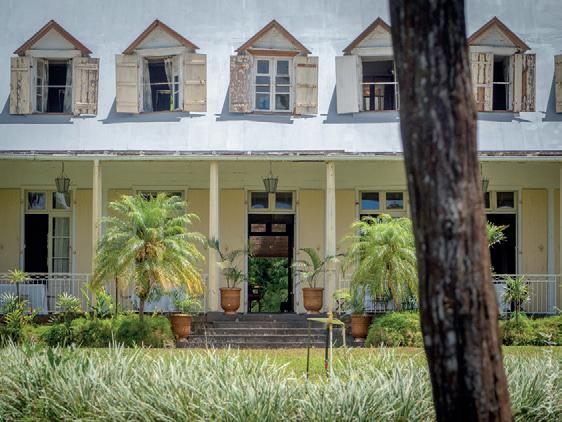
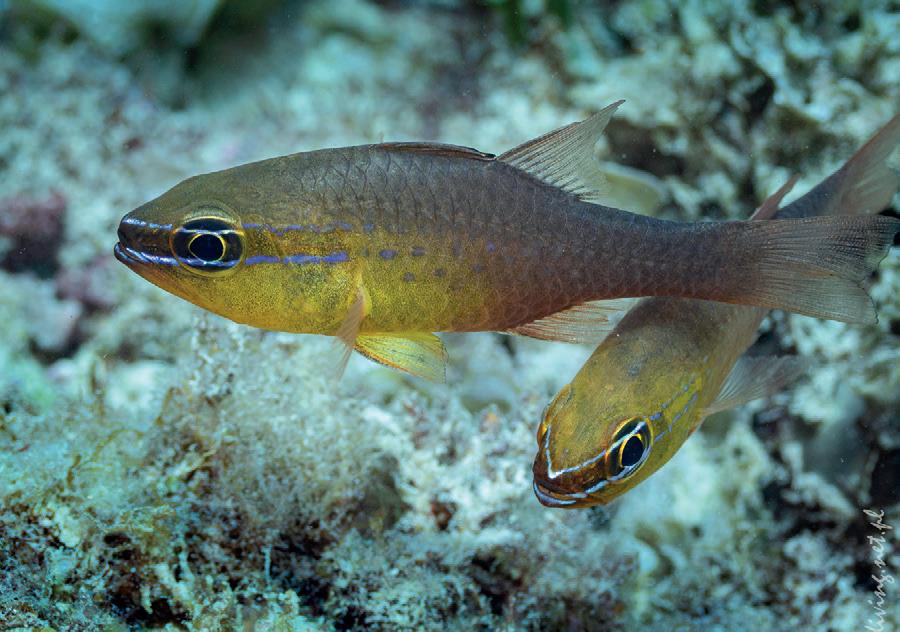
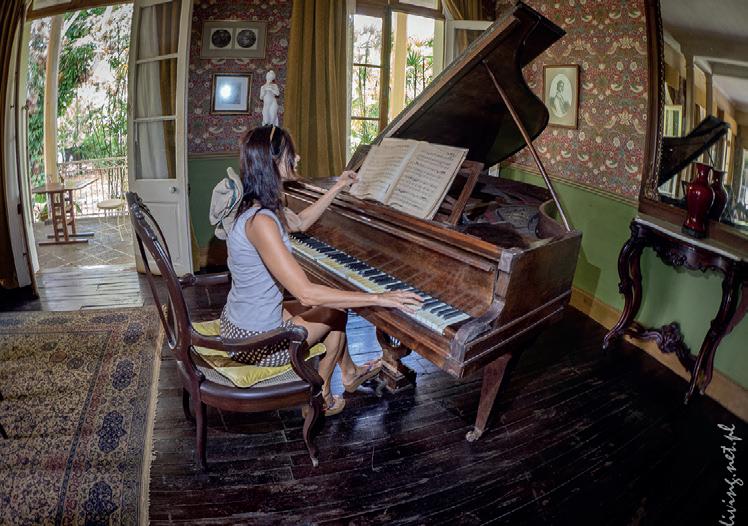


this area is the result of erosion of volcanic ash and the richness of the soil in terms of saturation with various minerals. Nowhere in the world have I encountered such a phenomenon. One of the points of sightseeing was the Eureka colonial house built in 1830 on the Moka River, where we could get to know the life of the inhabitants of that time and feel the atmosphere of those times. While visiting the gardens belonging to the estate, you can come across 4 beautiful waterfalls and endemic vegetation on the banks of the river. I was captivated by the beauty of the porcelain rose, also known as ginger lily, which on its long stem lasts for almost half a year.
When visiting Mauritius, it is worth remembering that it is one of the few African countries with a stable democracy with regular free elections and respected human rights. Thanks to its developed tourism sector and foreign investment, Mauritius has achieved one of the highest per capita incomes in Africa. Going there, you do not have to be afraid of organized
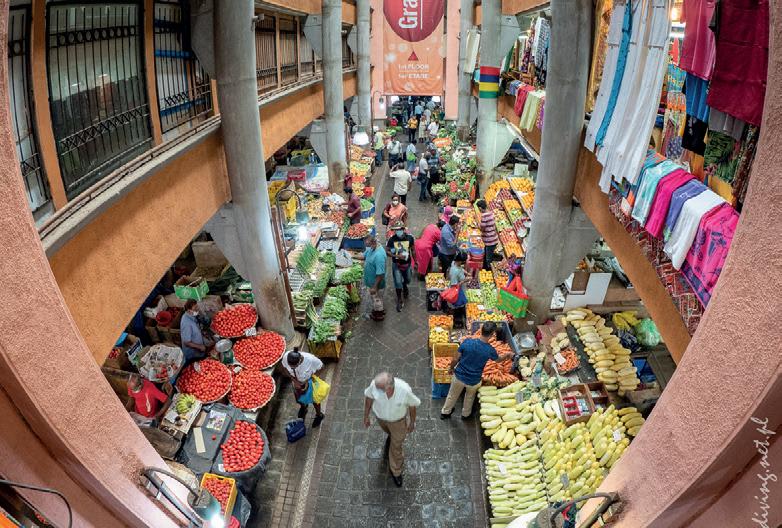
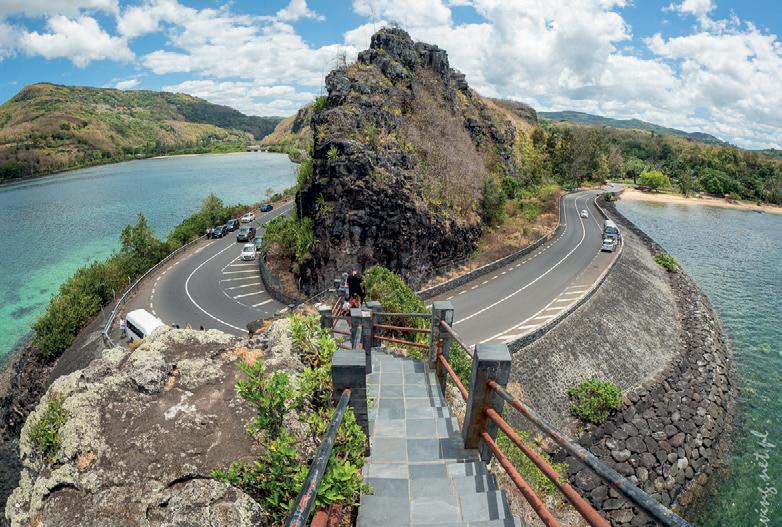
crime or walk around with pepper spray in your pocket. Yes, there are thefts like everywhere in the world, but a bit of awareness is enough to protect yourself from it. There is also no need for additional vaccinations before departure. You have to watch out more for monkeys than humans. Small macaques living in the wild, although quite intelligent, don't understand jokes and it is easy to arouse aggression in them. This is why the one who used the buoy earlier in solitude, was returning from the trip barefoot (apparently misfortunes come in pairs). You learn all your life – you can't run away quickly in flip-flops.
The current currency of Mauritius is the Mauritian Rupee. You can easily pay in euros, but local shopkeepers and taxi drivers convert the currency at a rough guess, to the disadvantage of tourists. There is no major problem with ATMs and payment by credit cards is possible, except in bazaars and small shops. In October, the air temperature was 28oC, and water 26oC. We would like to thank the tour operator Safpol Safaris from South Africa for great organization. Meanwhile, I am starting to plan the next expeditions in 2022. See you above and below the water!


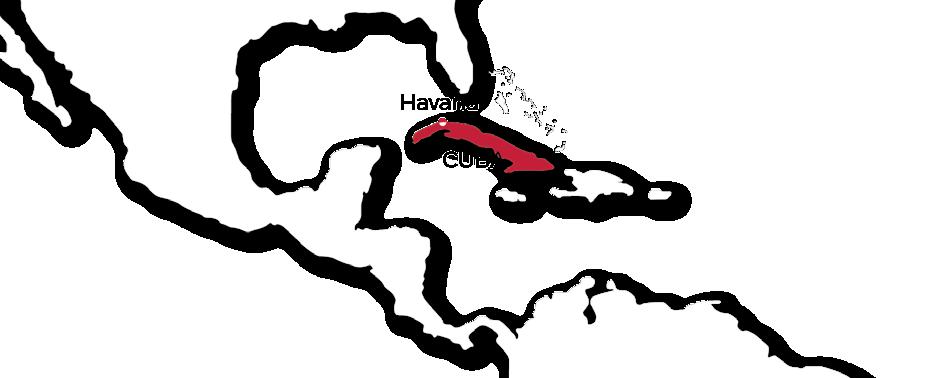
Text and photos MICHAL ČERNY
The whole world is changing very fast, but there are places that are changing even faster, and one of them is Cuba. For example, Thailand, Bali or Mexico will be about the same in the next five years as they are today, but Cuba will be completely different.
Cuba begins to open up to the world, especially America. In March 2016, the US president of that time Barack Obama visited Havana. 88 years have passed since the cooling of relations between these countries. Already in April of the same year, the first regular shipping line was launched, and at the end of August, regular flights between Florida and Santa Clara were resumed. So if you want to experience at least a little bit of the unique atmosphere of the island of freedom, this is the best time to come here.
GEOGRAPHY
Cuba is the largest island in the Greater Antilles. At first glance, it may not seem like a large island, but from west to east it measures almost 1,200 km, that's like the distance from Prague to Kiev, at its widest points the island is 190 km. In addition to the main island, Cuba has nearly 4,000 smaller islands. The

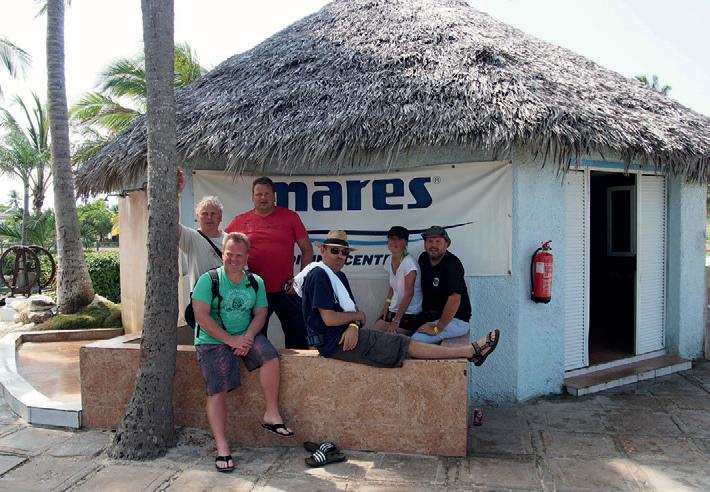
official language is Spanish, but in tourist resorts you can usually speak English without any major problems. There are two currencies in Cuba – the Cuban Peso (CUP), which is mainly used by residents to pay, and the Cuban Convertible Peso (CUC) that tourists pay. Those residents who go to the CUC, i.e. tourists, have very good local conditions, while the others are still partially dependent on the rationing system still functioning here.
Going to Cuba, Havana should definitely not be missed, especially Old Havana has its own special charm. There are many bars and pubs in the narrow streets with live music and especially in the evening people are practically dancing in the streets. It is best to sit in one of them, order a glass of good Cuban rum, smoke a Cuban cigar and fully enjoy the atmosphere of this city. And since we are in these bars, it is definitely worth a visit to the Floridita Bar, where they serve the excellent daiquiri, and where Hemingway used to be, today you will find his bronze statue here. The unique atmosphere of Havana is also created by classic American cars, you can still find many of them here, most of them function as taxis for tourists and you
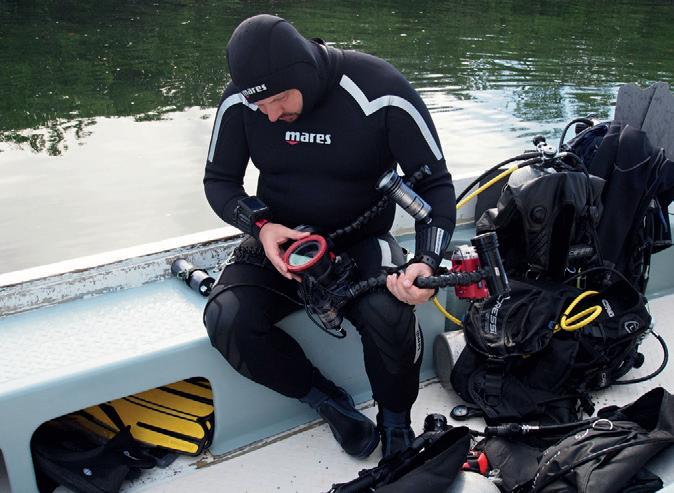
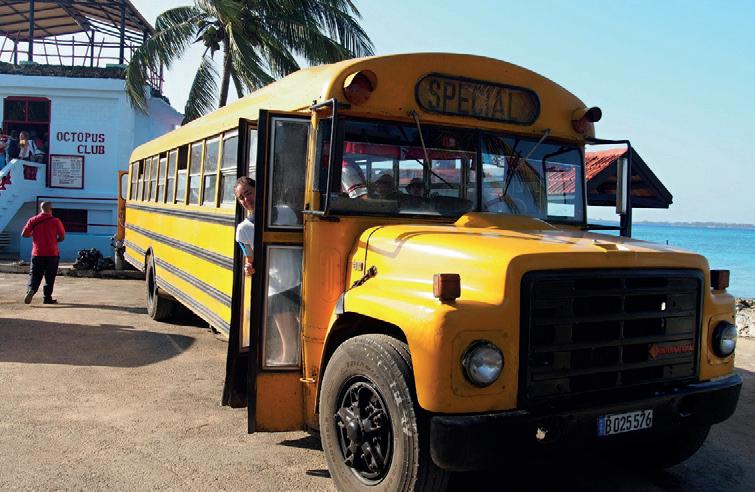
can easily rent such a car for the whole day or just for a ride around the main attractions of Havana.
By far the best place for diving in Cuba is the Jardines de la Reina archipelago, which consists of over 400 coral islands and is located in the Caribbean Sea south of the main island. The archipelago was named by Christopher Columbus in honour of Queen Isabel of Castile, and in the translation the name means Queen's Gardens. The archipelago has been declared a national park, and diving and fishing have their own strict rules. Fishing is allowed here only with the use of the sport system of catching, biting and releasing. The Cuban government only issues around 1,000 permits a year to visit the park, most of which are bought by fishermen, so divers only reach this beautiful place in an amount of around 400 times a year. According to the indications, however, it can be assumed that this number will increase significantly in the coming years. Diving and fishing are done here in the form of a weekly safari,
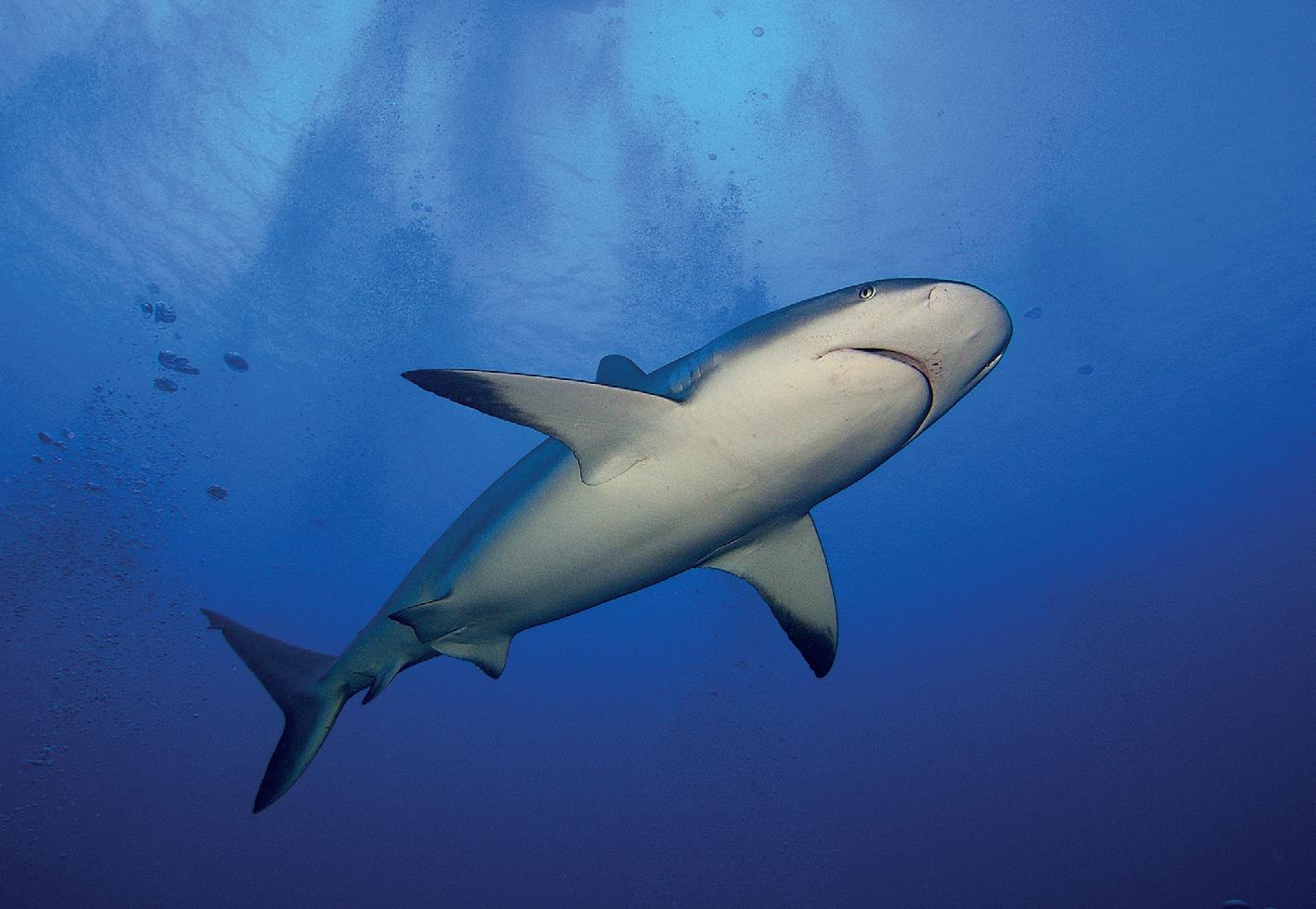
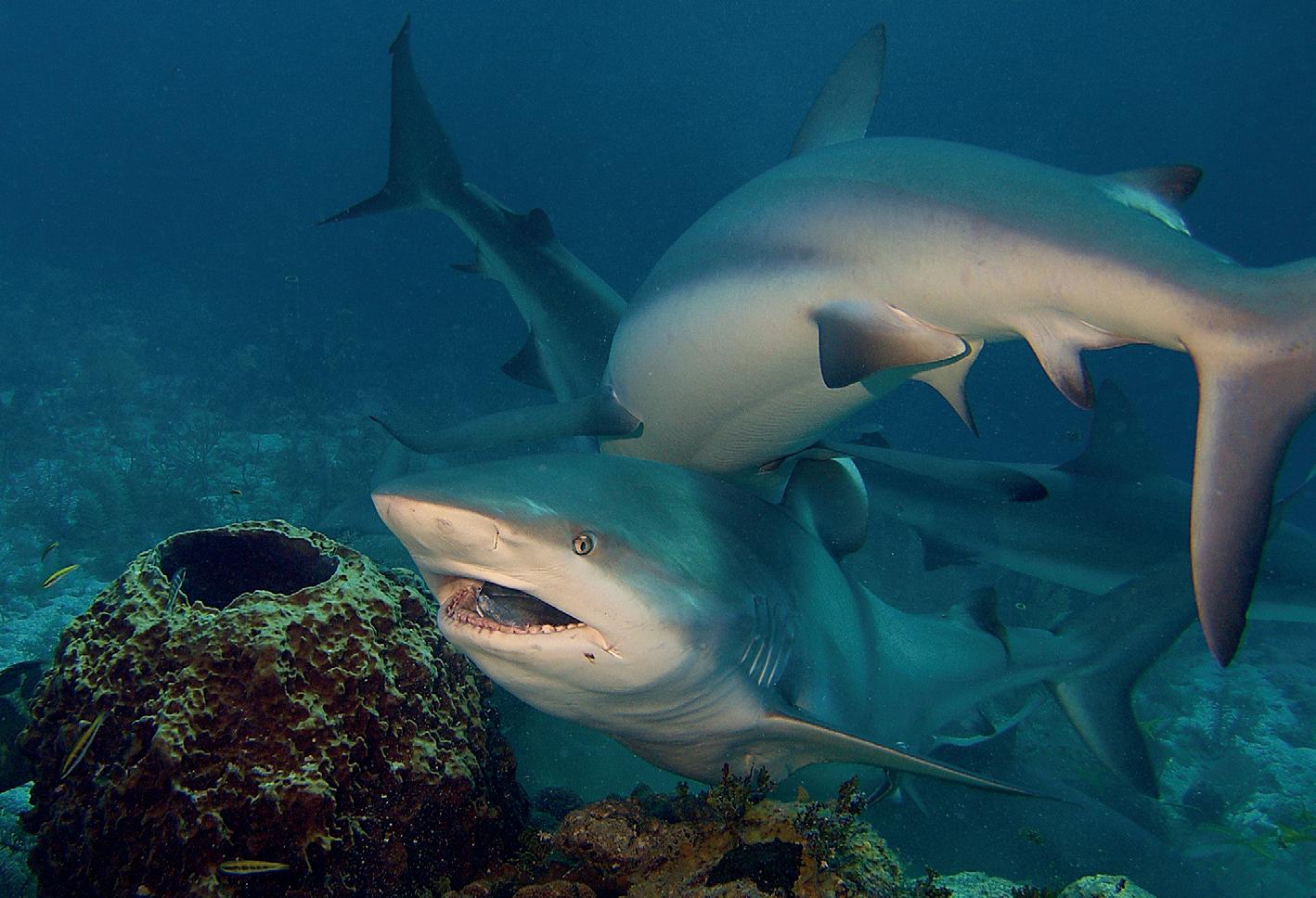
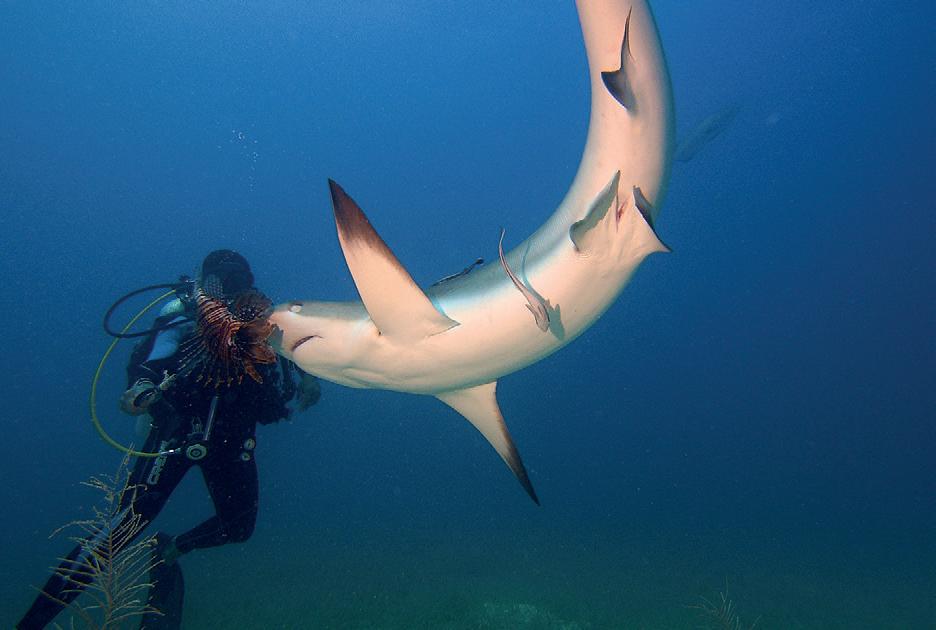
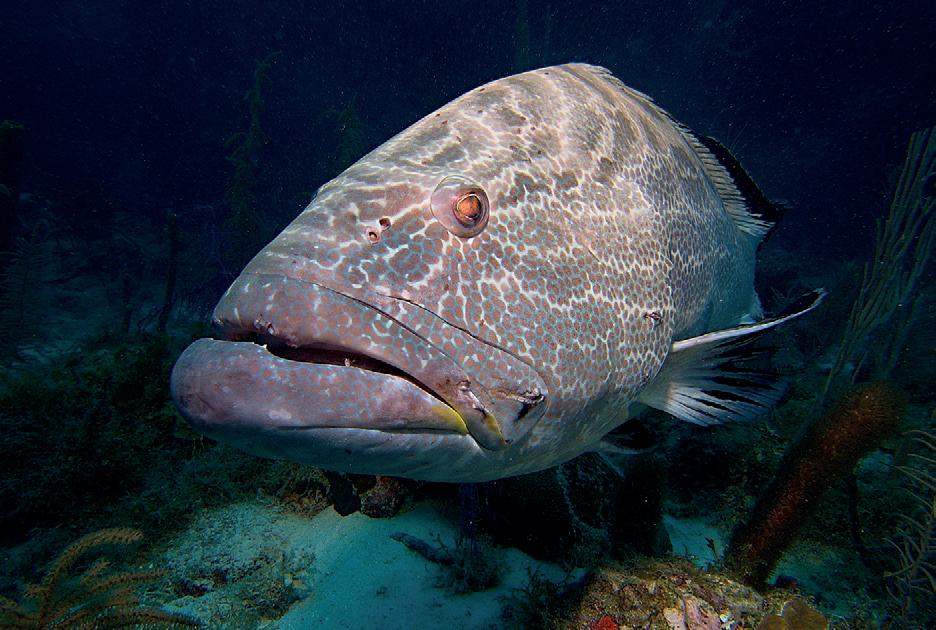
with boats departing from the small port of Jucaro. The safari boat is then moored among the mangrove forests and individual dives take place from smaller boats. There is also snorkelling gear on these boats and the staff is always taking care of changing the cylinders, making the diving very comfortable. The dives always take place three times a day and there is really a lot to look at.
The main attraction for diving here are sharks, they can be found during practically every dive, and thanks to a bait you can get close to them. The most popular species is the perez shark,
i.e. the Caribbean reef shark, on each dive we saw from 10 to 20 of them, the largest of which was up to three meters long. This species of shark lives mainly at the bottom at a depth of about twenty meters, where it usually waits at the place where the bait is placed, after feeding it emerges with the divers to the surface and waits for getting something else. Another popular species of shark is the silky shark, which moves in open water on the surface and grows up to three and a half meters, thanks to a bait you can approach these beauties up to several meters. If you are lucky, you will also see a reef shark, lemon shark, and even a whale shark.
The lionfish is also a bit related to sharks, as you probably know, this is a non-native species in the Caribbean that has no natural enemy here, and therefore it breeds here and causes considerable damage to native species of fish. That is why, local divers usually dive with a small harpoon and if they come across a lionfish they shoot it mercilessly and after that some sharks appear. All you have to do is wave over your head a blade on which the lionfish is stabbed, and in a moment a shark will come and pull it out of the harpoon and "go mad".
Sharks are the main reason for diving in the Jardines de la Reina and there
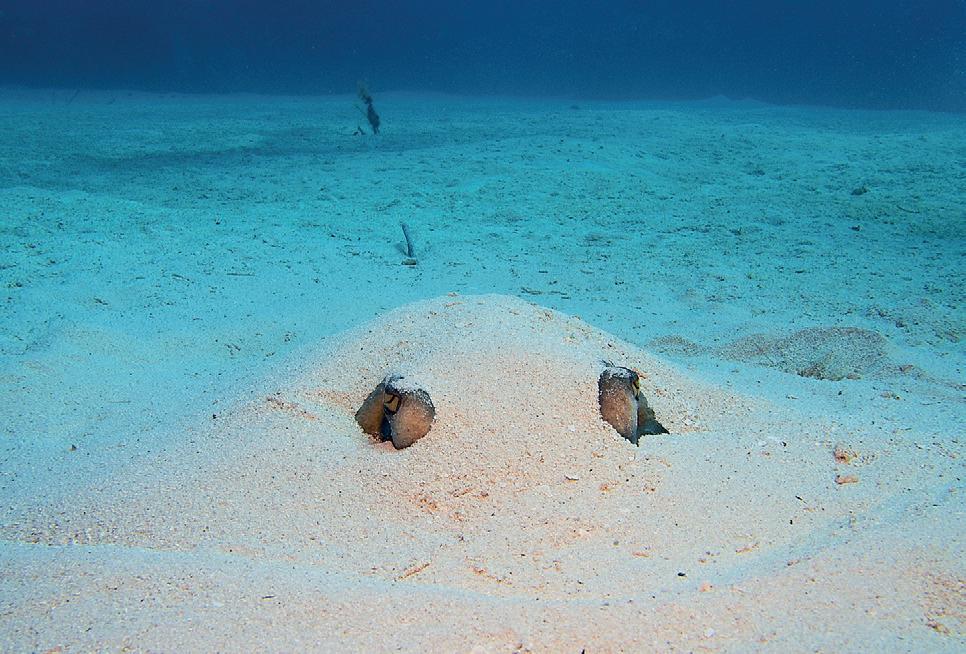
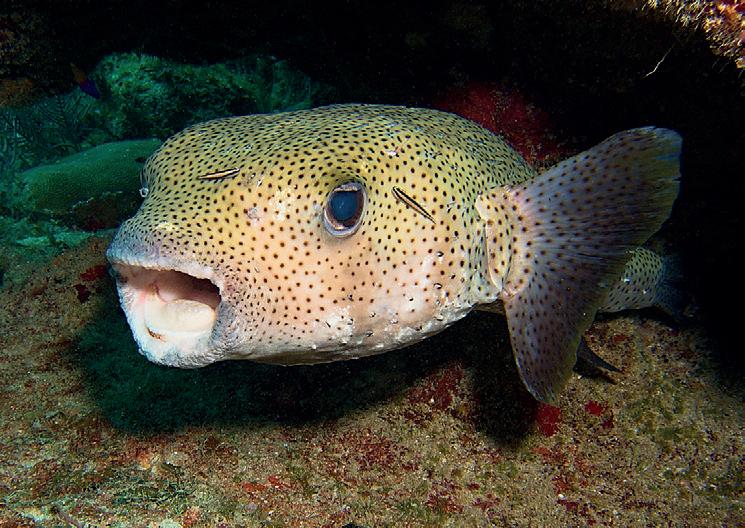
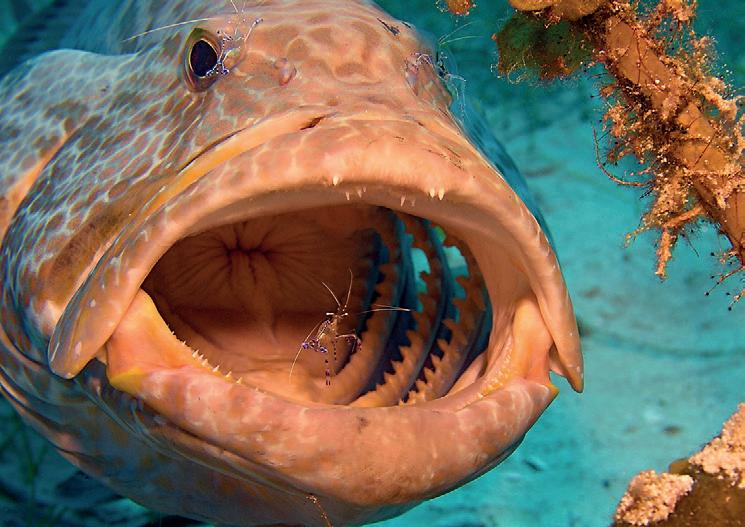
are not many other animals here. There are several species of groupers, including the largest giant grouper, which grows up to three meters long and weighs 300 kilograms. Another majestic and large fish to be found here is the Atlantic tarpon, usually a little larger than a meter, but their silver bodies reflect flash light very strongly, so taking pictures of them is not easy. The American stingrays can also be found among large fish, which bury themselves on the sandy bottom. And of course, you will also find shoals of smaller fish here, we can mention, for example, rattlesnakes, snappers, rays, jack mackerel, stargazer fish.
Among other animals, you can find the largest sea slug, protected by a queen conch. If you are lucky, you may have a very unusual experience between dives – snorkelling with a crocodile, specifically an American crocodile. If the crocodile is smaller than a human, there is nothing to be afraid of and you can easily go into the water, but if it is larger, it can attack
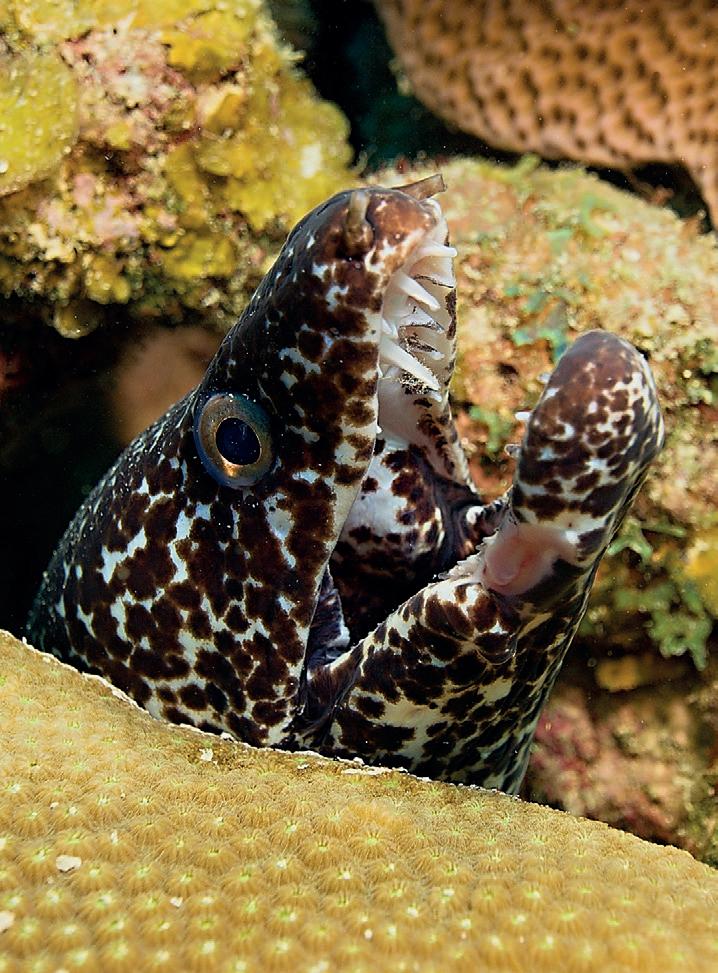
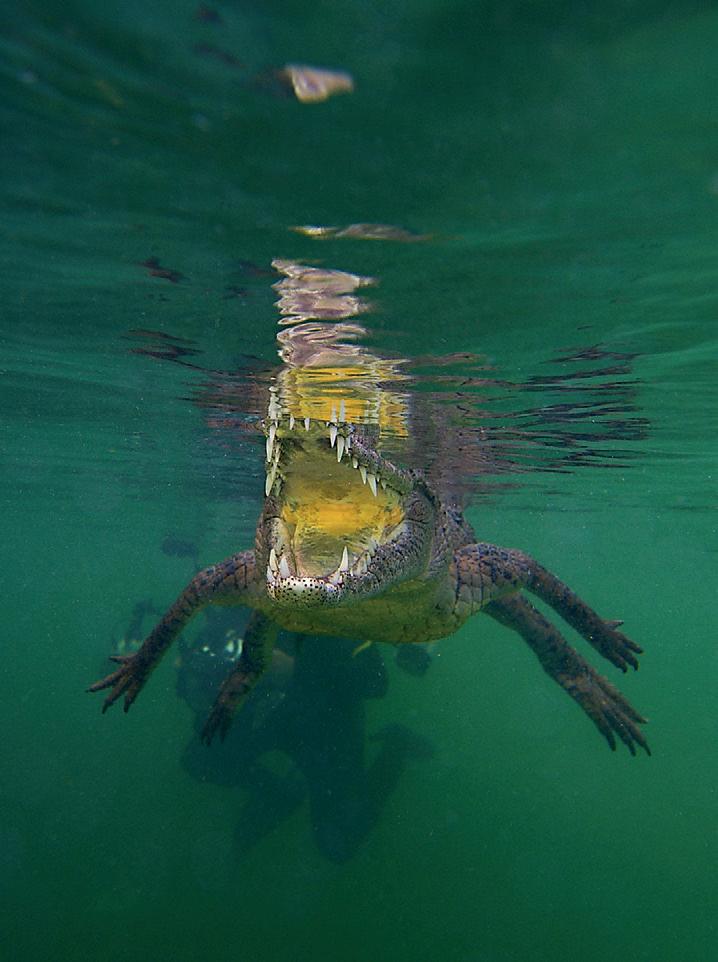
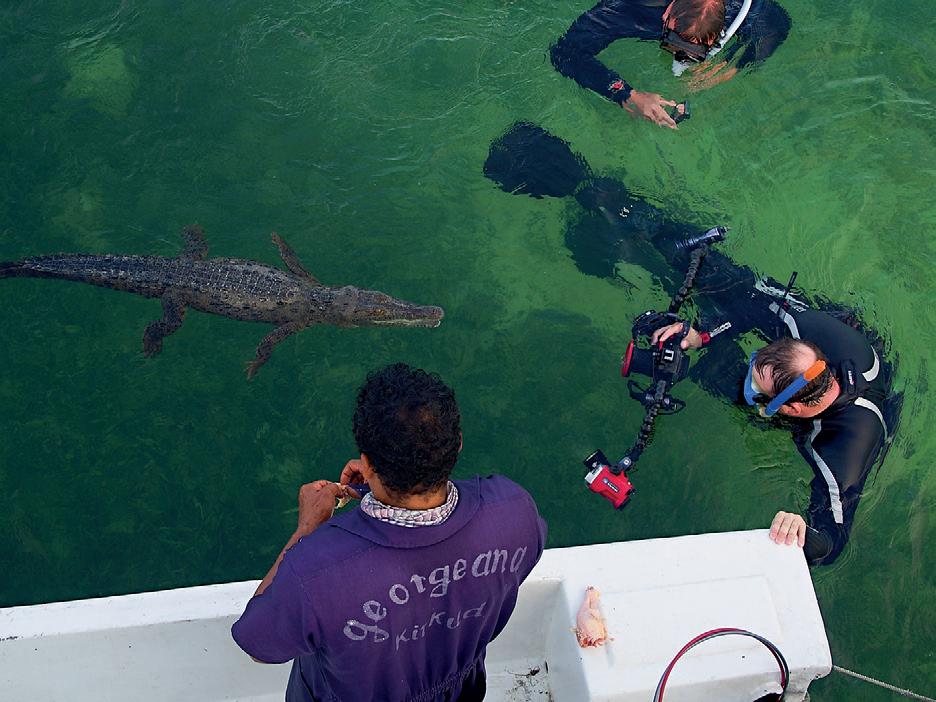
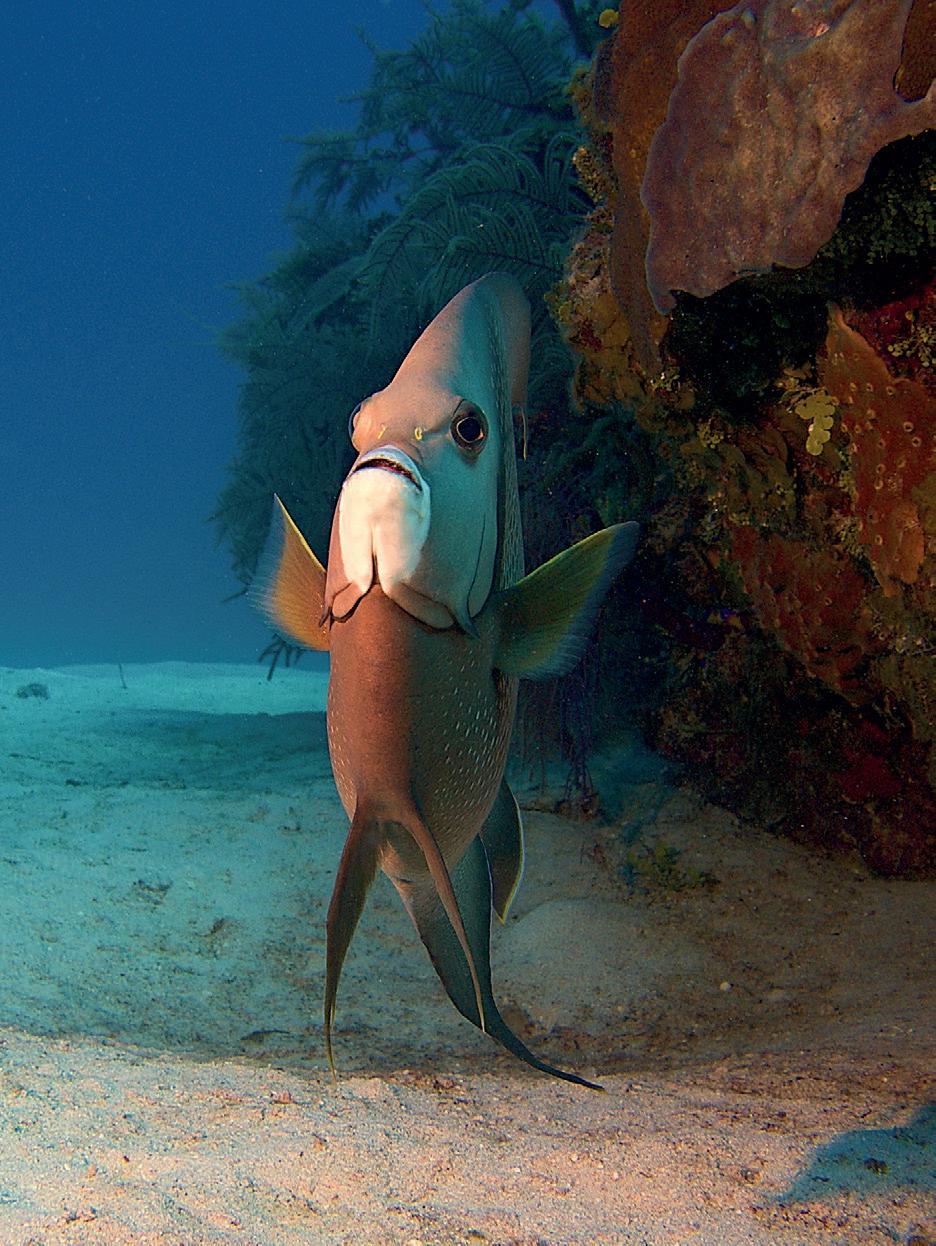
you. We were lucky to meet an individual which was less than 1.5 meters long, one of the crew members tied a piece of chicken thigh to the rope so that the crocodile would have more motivation to stay with our boat and we could have this unique experience. I must admit that I was a little sweating during this snorkelling, sometimes only a few dozen centimetres separated us from the pointed teeth of this crocodile, what is more, the view of this animal is completely different compared to the view of a shark.
Another place where we dived in Cuba was the Santa Lucia resort in the north of Cuba, i.e. in the Atlantic. We chose this place for two reasons, on the one hand interesting shipwrecks, and on the other hand, there is a chance to meet bull shark. When we started our first dive on a smaller artificially sunken wreck, we still looked for where the sharks were, but these are not Jardines de la Reina,

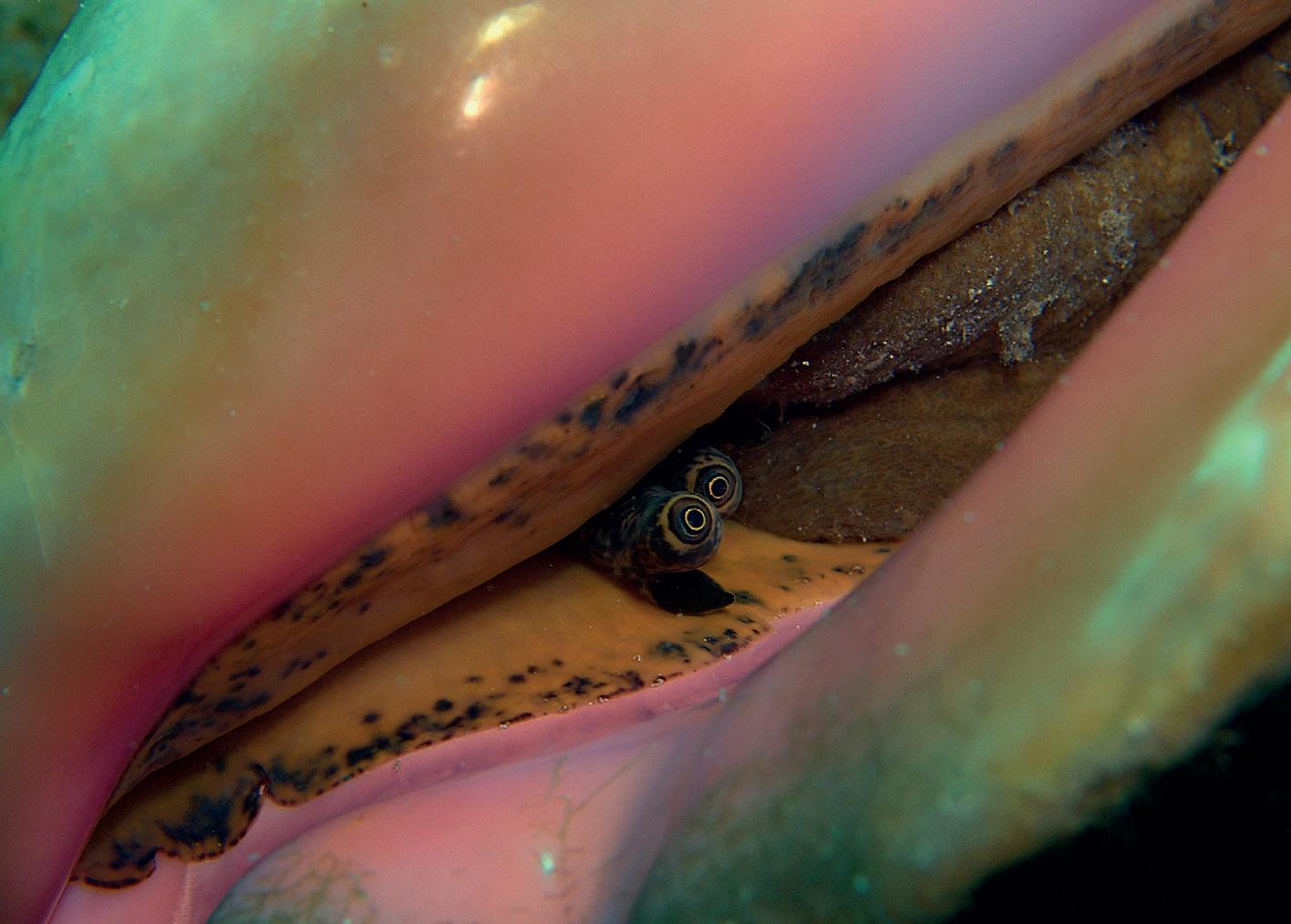
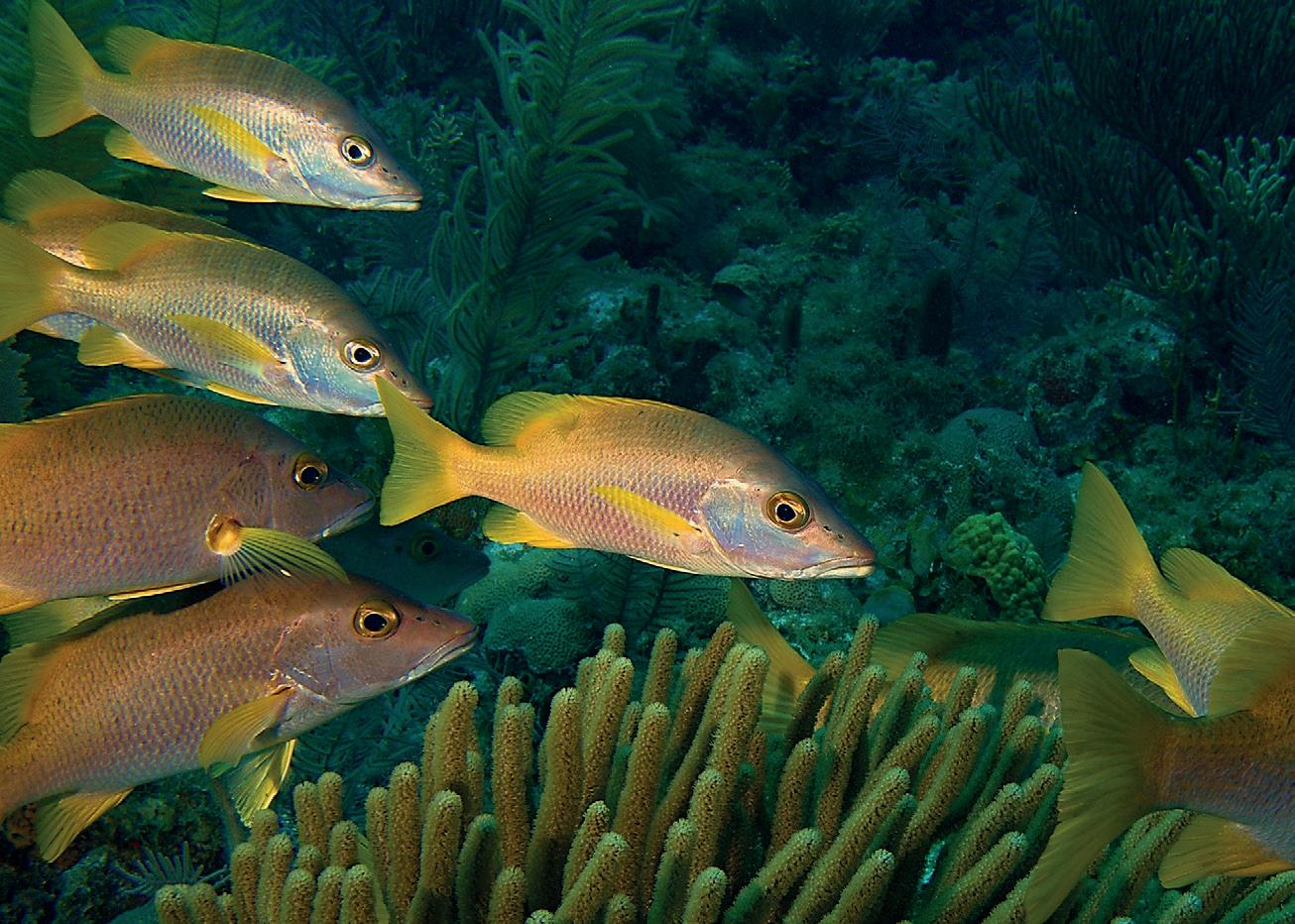
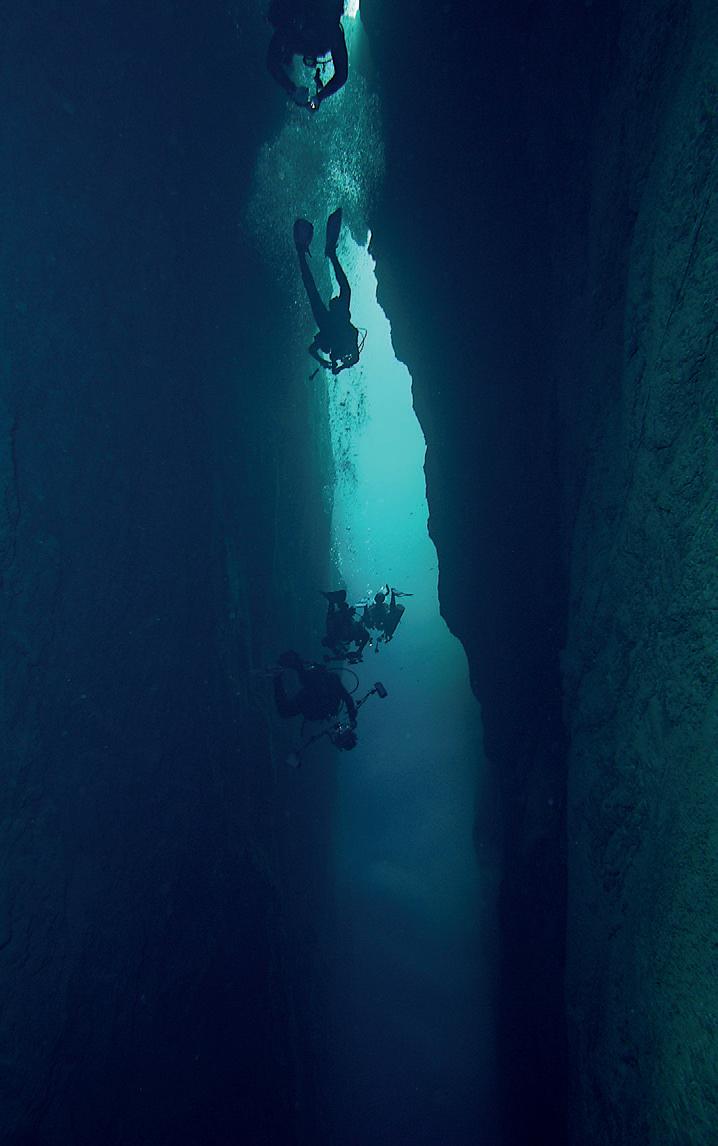
there is simply no guarantee of meeting sharks, the sea is generally poorer to live in, but there is also a lot to see. Bull sharks dive to a special place where local divers invite them and feed them directly from the hand, but the chance of sharks appearing is 40 %. Unfortunately we were unlucky, the sharks just did not make it that day. But we were rewarded by meeting a little hornbill, which we discovered at a shallow depth just before the end of the dive
Another interesting place for diving is the Bay of Pigs in the southwest of the island; The bay is mainly known for the landings of Cuban counter-revolutionaries (supported by the US), whose attempt to overthrow Fidel Castro failed. In the town of Playa Girón you can also visit the Museum of Invasion – and in it, among others, you can see the Czech weapons used in defence of the revolution. You can, of course, dive in several places in the sea, but we chose the second option, diving in
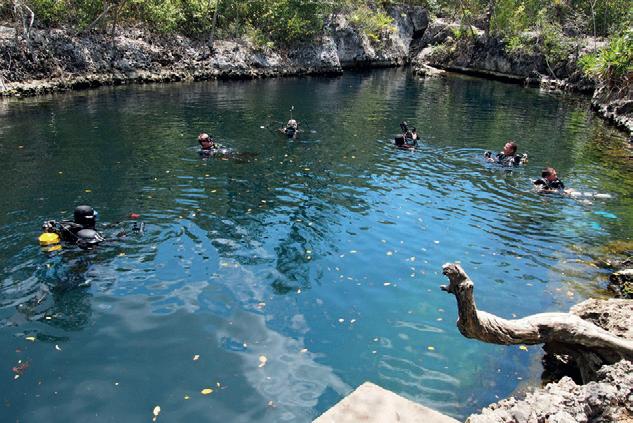
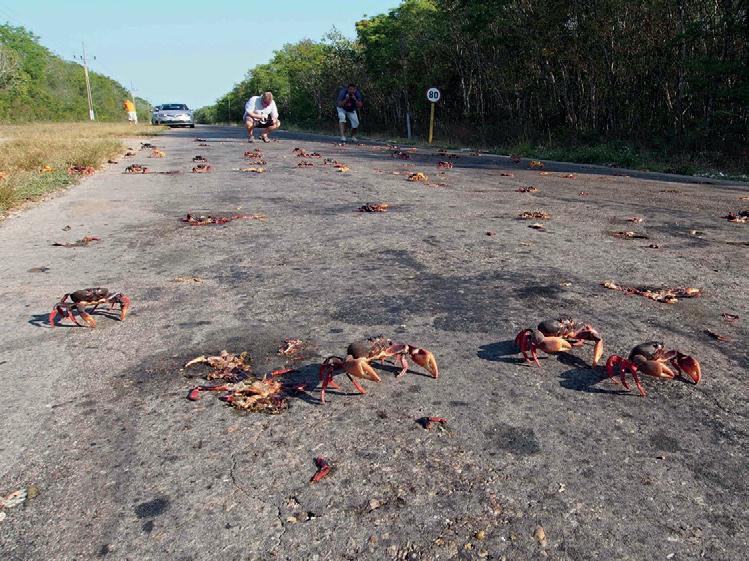
caves – here called casimbas – where fresh and salt water mix. The first few meters is freshwater, then there is a zone with brackish water (a place where fresh and salt water mix) and salt water. In one dive, you may encounter fish that you have seen before in the sea, and at the same time you may encounter freshwater animals such as freshwater prawns. The caves also have a nice dripstone decoration. Of course, an experienced local divemaster will accompany you on all dives and take you to a cave dozens of meters from the entrance lake, but never so far that daylight or sunrise is not seen. During the socialist era, several Czech divers took part in the discovery and exploration of these caves. Today you can dive here, for example, in the Casimba Ilona cave.
You can also see a large crab migration on the road that runs along the bay. Crabs cross the road as they come out of the bush to lay their eggs in the sea. Fortunately, traffic is not heavy yet, but thousands of crabs do not reach their destination every day. Drivers do not care too much about them and even though the crabs tighten their shells when they meet a car, they have no chance. If you are interested in Cuba and diving and are considering going there, do not hesitate too long to taste the true taste of Cuba.
ANNA SOŁODUCHA
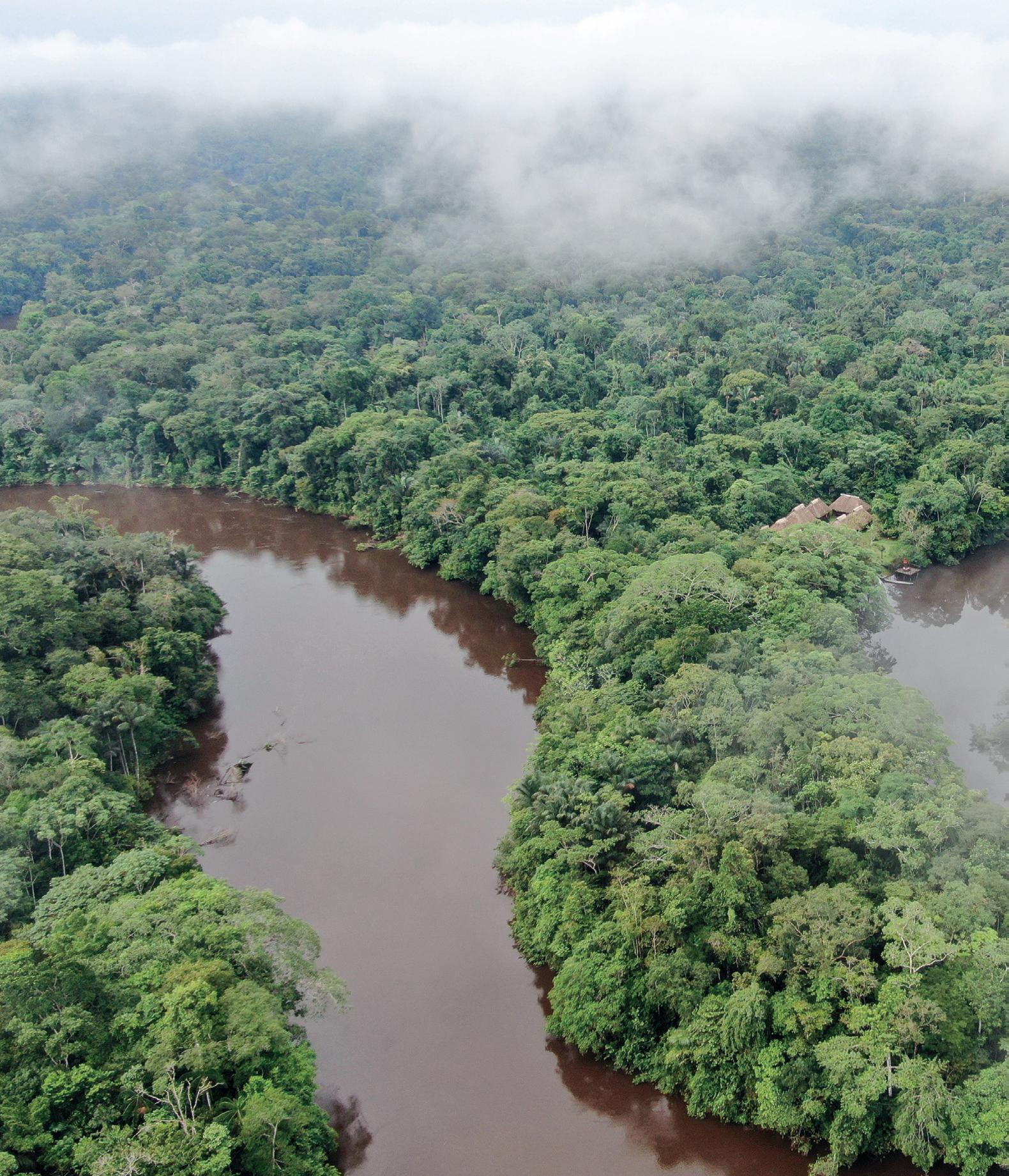
The Galápagos Islands is a dream of every diver. It is an obligatory item if we consider the top diving destinations in the world.
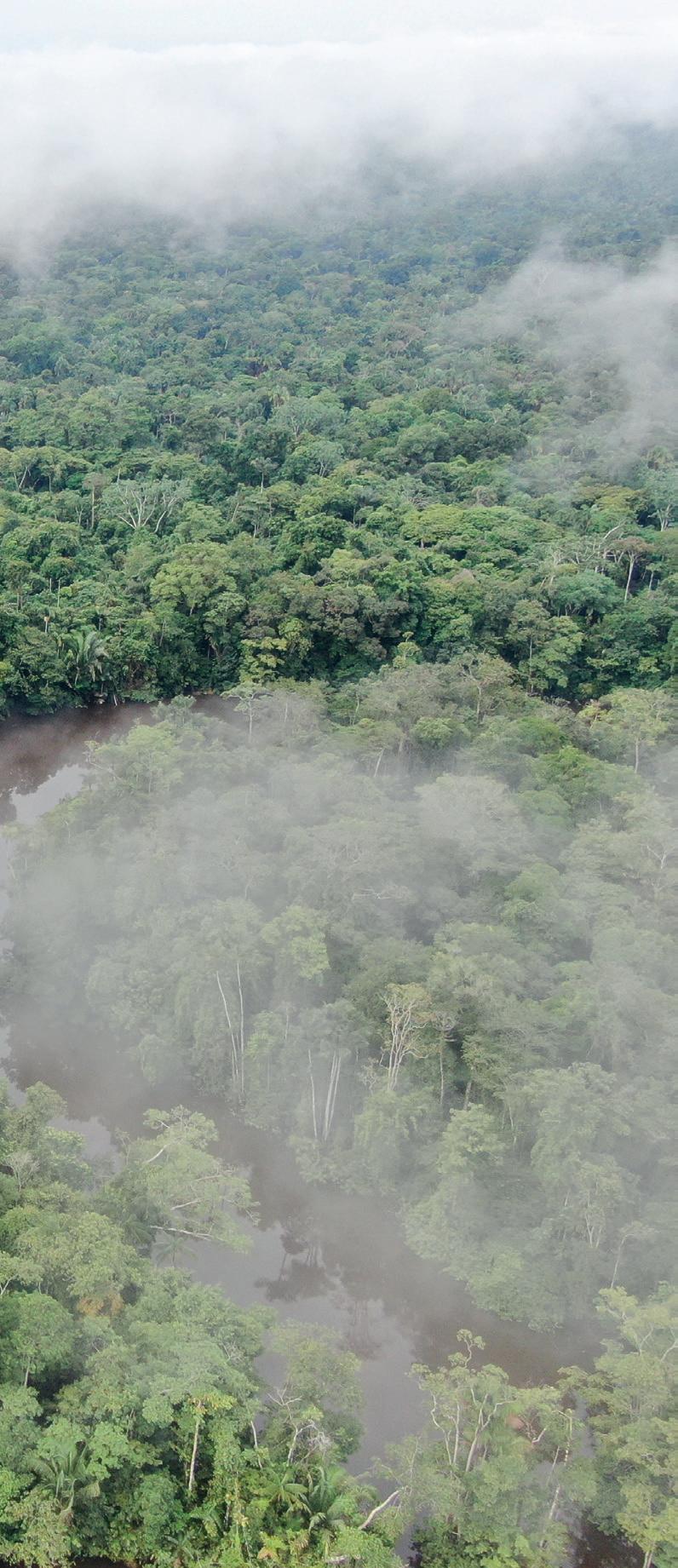

However, in order to reach these islands which are 1000 km away from the mainland, we have to reach the smallest Andean country in South America, which despite being tiny, can enchant even the most demanding tourist... Buenos dias Ecuador!
Ecuador – a lifeline. On May 24th 1822, on the slopes of a volcano on the outskirts of Quito, a battle between Spanish royalists and Ecuadorian insurgents took place, who after a colonial era finally gained independence. The country became part of the Great Colombia, a geopolitical project that collapsed in 1831. The new independent country needed a name. The traditional name "Quito" kept by the colonisers provoked opposition from two important centres – Guayaquil and Cuenca. Eventually a more "neutral" name was chosen, referring to the country's location on the equator. The very idea of calling these lands "Ecuador" came from French scholars who years earlier had explored these lands and the equator itself.
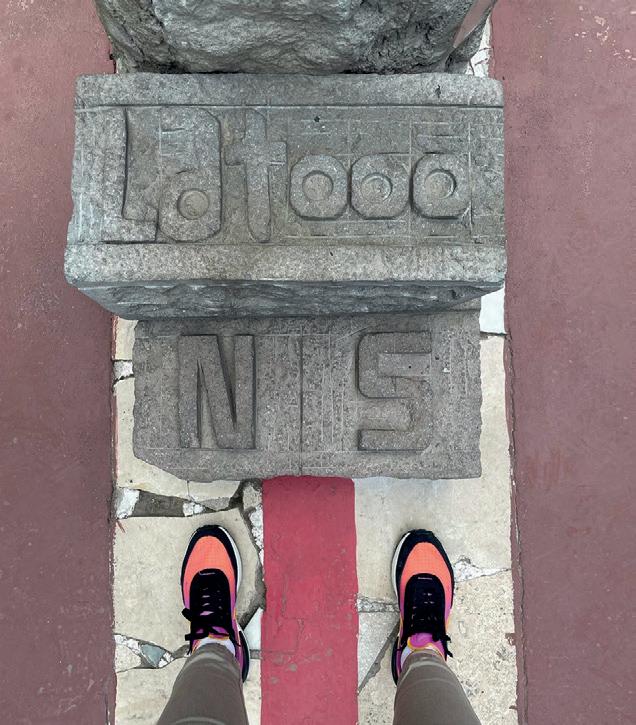
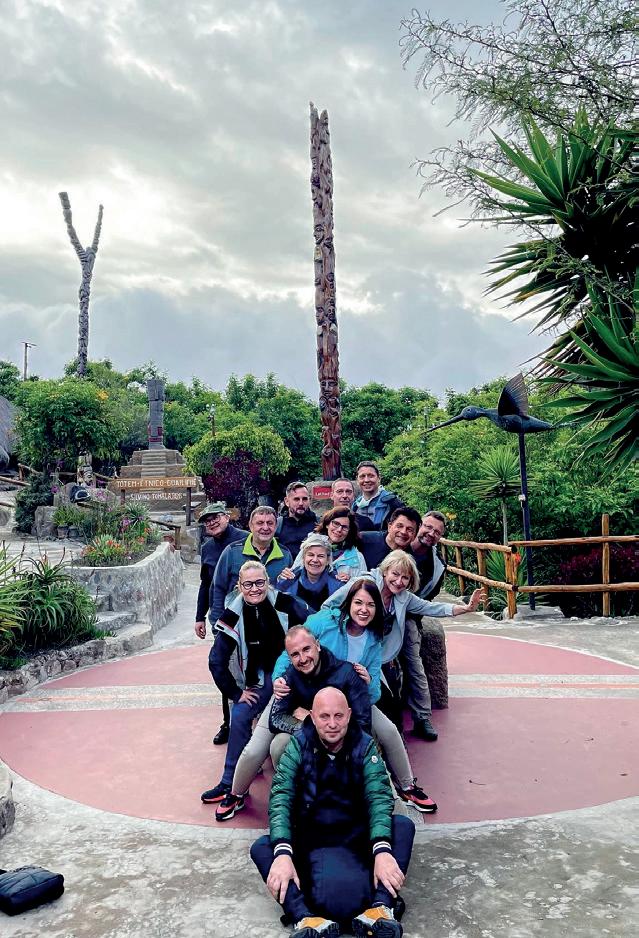
The longest parallel wraps the entire Earth in a ribbon of sunshine, abundant life and extraordinary wildlife. Climate change makes the hottest places on the planet even hotter, although this unique country located on the equator has surprised me more than once with its weather variations. A perfect example of this is the country's capital, Quito. It is considered by Ecuadorians to be the highest located capital city in the world (2,800 metres above sea level), while by Bolivians – second only to La Paz (the capital of Bolivia, although located higher – is not the constitutional capital of the country!) Due
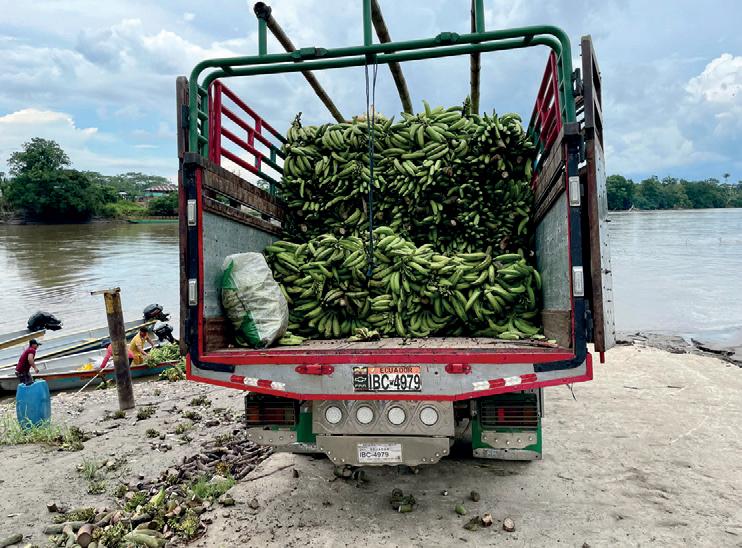
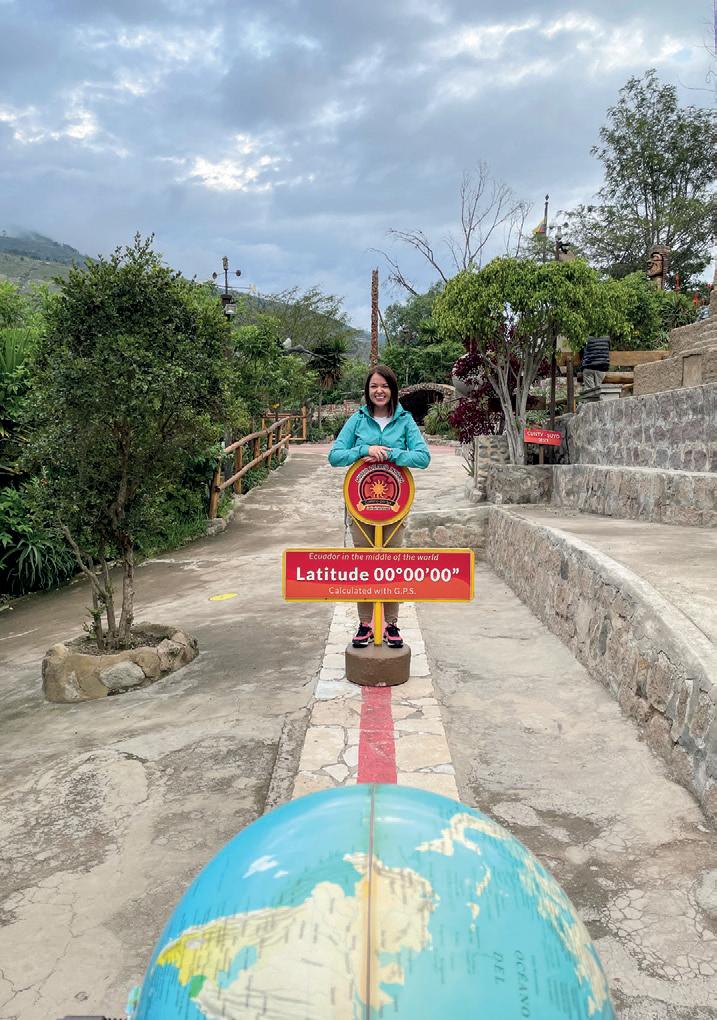
to the geographical configuration – the proximity of the ocean and mountains, in Quito there is a constant air temperature of about 18°C, and what is interesting – the first half of the day is usually dry and sunny, while in the afternoon it almost always rains. This, however, makes it possible to plan a good sightseeing :) It is also worth remembering that at such an altitude a sickness may occur (or rather does occur;)) and if we plan to dive during the trip (and we surely do ;)), it is worth spending a few days on the mainland to let our body acclimatize. Situated at the foot of the Pichincha volcano, the city impresses with its colonial infrastructure. Eclecticism – the combination of styles from different eras is manifested here at every turn – churches and cathedrals are characterised by neo-gothic arches, baroque interiors, Moorish ornamentation and classicist porticoes. In addition, the beautiful urban ensemble of Quito's historic city centre is on the UNESCO list of World Hertiage Sites. It is even more interesting when you consider the fact that it was entered on the list in the same year as Krakow (1978), and to be more precise, one month after it :) This unique city also has a specific, elongated shape – at its widest point it does not exceed 8 km, while its length is as long as 50 km! The streets of Quito are full of colours – Indian music can be heard at every corner, there is a smell of freshly ground coffee everywhere (Ecuadorian coffee is exported


to more than 50 countries in the world and is consumed by locals regardless of the time of day or night – it is not only a drink, but also a part of their culture!), and the markets are abundant with fruit not encountered anywhere else, such as pitaya, rambutan, tomate de árbol (a relative of tomato), prickly pear or my favourite, naranjilla. The undisputed king of Ecuadorian fruit is of course the banana, here called platano. Ecuador is the largest producer and distributor of bananas in the world. Ecuadorian banana exports cover more than 26% of the world demand for this fruit. There are more than a dozen varieties of banana: yellow, green, pink, red, potato-flavoured, apple – and pear-flavoured bananas. Finally, there are large green bananas, which are only eaten hot, or used for frying banana chips ;) It is also impossible not to mention the famous "panama" hats. The most expensive ones can cost over 10 thousand dollars, and it takes 0.5–1 year to weave one! These hats have been

made by the indigenous Ecuadorian people for generations. The scorching sun, as it is on the equator, somehow forced people to invent something to protect their heads from the heat. The leaves of the palmate spoonbill, found on the coast, were ideal for this. In 1849, a Spanish merchant, Manuel Alfaro, transported around 220,000 hats to Panama. When construction of the Panama Canal began in December 1879, the builders needed hats to protect them from the terrible heat in Panama. Light and airy hats from Ecuador had another advantage – they could be bent and put in pockets without losing their cut. Workers were immediately attracted to this headgear and it became widely used. Hence the name Panama. However, the greatest promotion of these hats was a photo of president of the USA – Theodore Roosevelt wearing one, taken during his visit on the construction of the Panama Canal. Then, cinema stars in the 20s of the 20th century were fond of wearing Panama hats... and so are we during our visit to Ecuador;)
Quito is also the only capital city in the world which is directly threatened by an active volcano. During past eruptions, the city was covered in ash, but it was never destroyed. I mentioned the volcano for a reason. In the Andes range called the Avenue of Volcanoes in Ecuador we can find 29 active and several dozen extinct volcanoes. Ecuadorians used to call them "nevado" – snow-white. It is not difficult to guess why ;) Most of them are massive, ice-covered peaks. However, most volcanoes do not pose much of a threat – the peaks and beautiful caldera lakes are among the country's flagship tourist attrac-
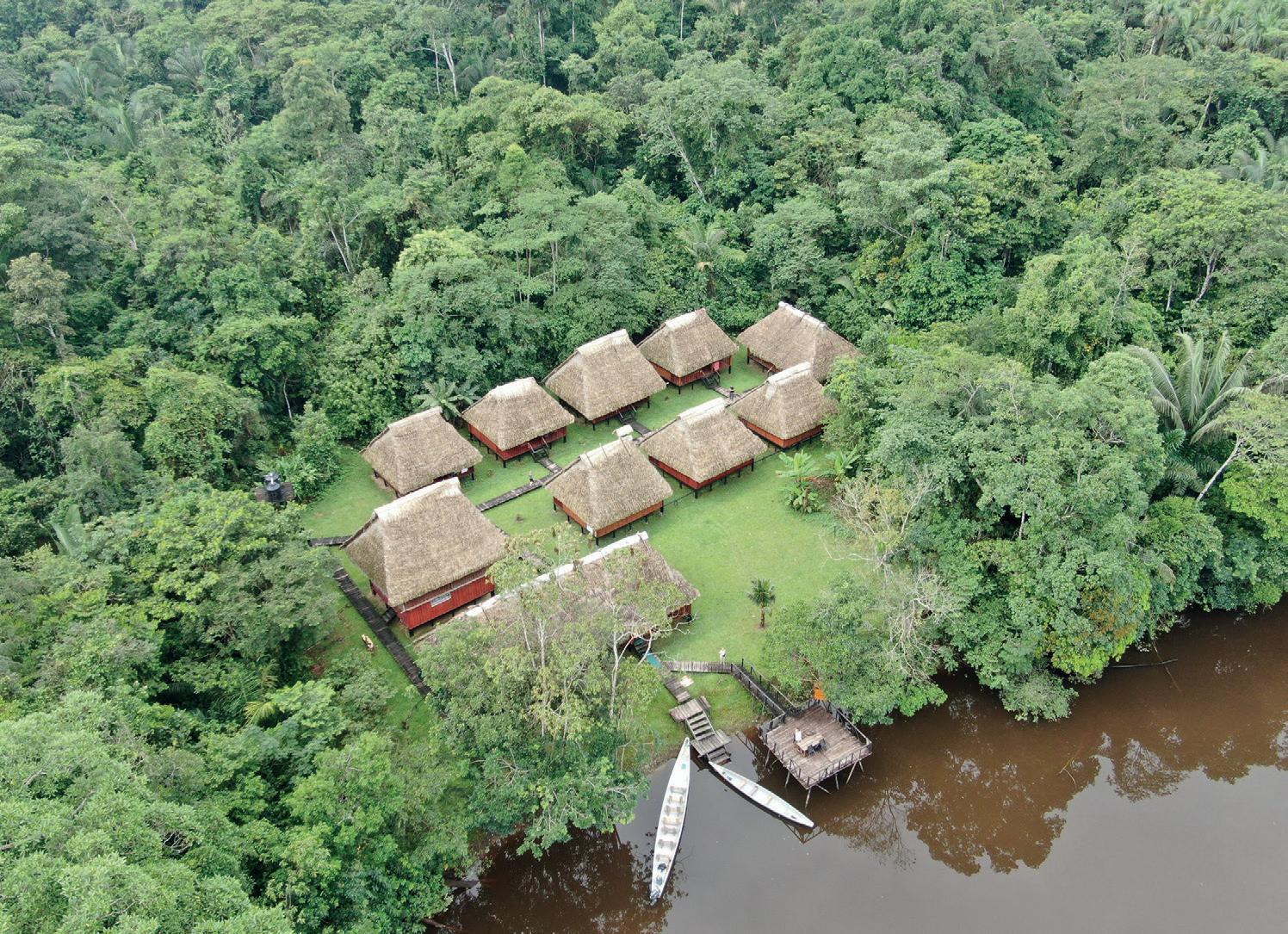
tions. The highest peak of Ecuador, and at the same time an extinct volcano – Chimborazo (6263m) is the most distant point from the Earth's core on its surface (!) This is conditioned by its considerable height and proximity to the equator. Areas located on the equator are the farthest from the centre of the Earth, this distance decreases with increasing latitude and is the shortest at the poles
Speaking of the equator again... 20 km from Quito there is a place where you simply have to be. La Mitad el Mundo in Spanish means "the centre of the world". This is probably the country's most emblematic tourist attraction! Ecuador is one of the 15 countries on Earth crossed by the equator. Already in the 18th century, French surveyors tried to determine the centre of the Earth. During one of the expeditions, a monument was built at the very base of which a line was drawn, according to the knowledge of that time, this line coincided with the line of the equator. Unfortunately, as it turned out at the end of the century, thanks to the GPS technology, the real equator is 240 m north of the determined line... ;) This fact does not take anything away from this place! The place is absolutely
amazing. In the area around the symbolic "lifeline" dividing the globe into the southern and northern hemispheres there is an interactive museum called Intiñan, where accompanied by a guide you can participate in various experiments showing the unusual properties of the Earth resulting from its rotation (for example, see with your own eyes the effect of the Coriolis force co-responsible, inter alia, for the direction of rotation of cyclones and... "twist" of the water released from the sink –the opposite for the northern and southern hemispheres). For patient and skilful tourists there is a competition of setting an egg on a nail... I recommend this one!
Before the conquest of South America by the Spanish, Ecuador belonged to the Inca Empire. In the 21st century, one might wonder, is there a chance to meet real Indians, descendants of the Incas? Is it possible to have a look at their everyday activities and take a piece of Indian handicraft as a souvenir? It seems impossible... Just 110 km north of Quito, at the altitude of 2500 m, there is a wonderful valley called Valle del Amanecer (Valley of the Dawn), and in it – Otavalo, an Indian market, the largest of its kind in the whole South America! The
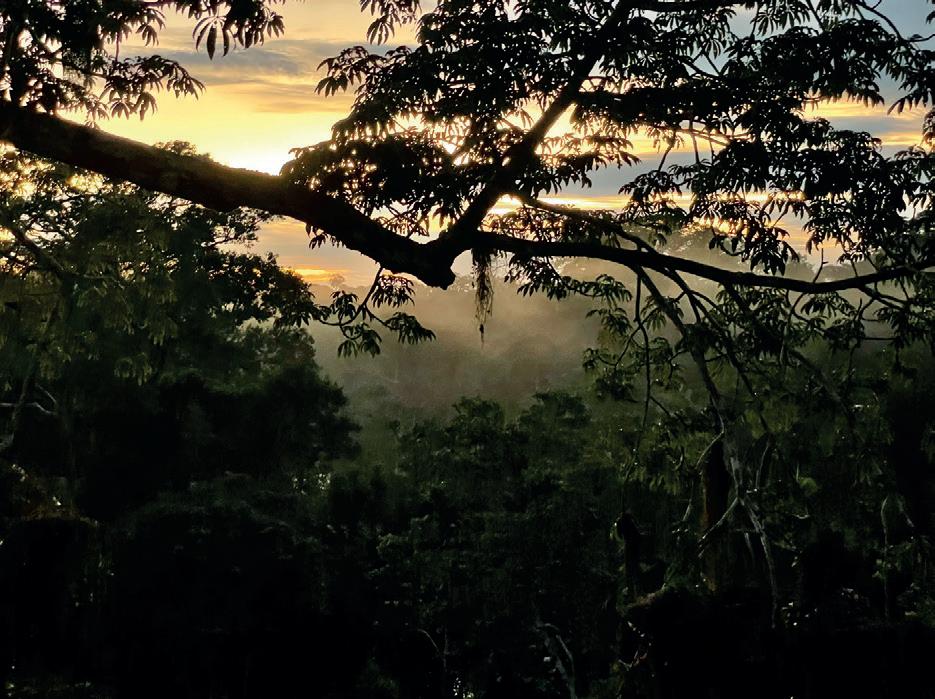
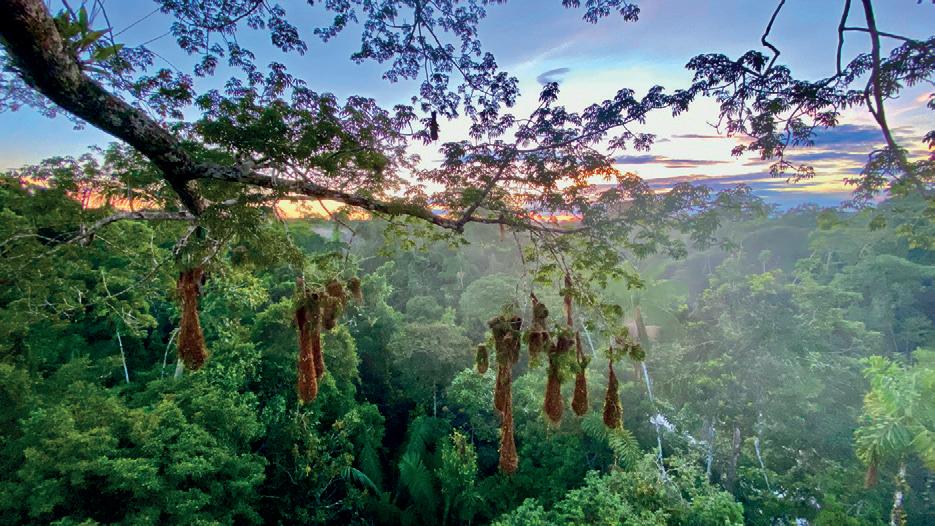
still living culture and presence of the Kichwa Indians makes this place extraordinary. Otavalo is a beautiful and energetic city, home to a large number of indigenous people, known for their handicrafts. Surrounded by the Imbabura, Cotacachi and Mojanda volcanoes, there are over 21,000 Indians, the indigenous people of this land. Every Saturday (but not only) some of them come down to Otavalo, where they sell various items: ponchos, jumpers, hats, jewellery, ceramics and other local wonders. Beautifully embroidered shirts, slippers, leather bags – these are real treasures of this place! In Otavalo you can also buy scarves made of alpaca wool or ethnic jewellery made by Indians. Really worth it! :)
"The backbone" of Ecuador are the Andes – which, thanks to their southerly location, constitute a separate climatic zone of the country. The Sierra – the mountainous area – separates
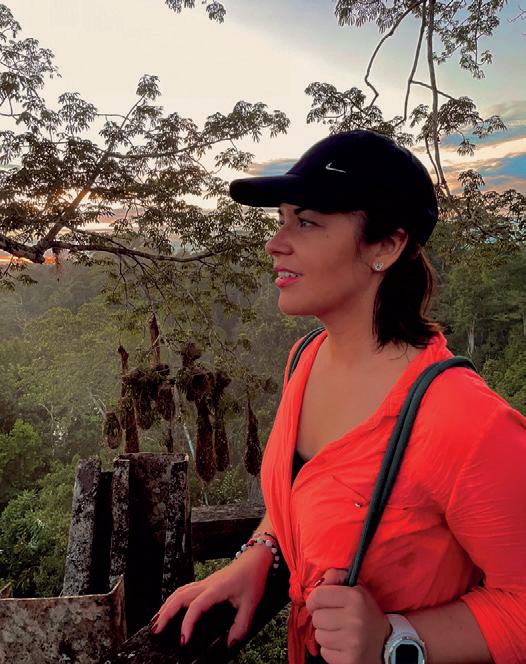
Costa (the coast) from Oriente – Amazonia. This is probably the most mysterious part of the country, located in the Amazon basin. Although the river does not flow through Ecuador, it was from the present-day territory of this country that its explorers set out. The flora and fauna of this area fascinate, and it was Oriente – or Amazonia – that impressed me the most... Staying here allows you to immerse yourself in a world completely different from anything you can see even in Europe. Ecuador is considered one of the 17 countries with the greatest biodiversity in relation to surface area. It is also the first country to include the rights of nature in its constitution!
There are more than 17,000 plant species. Orchids are particularly rich here; over 4000 varieties can be found throughout the country, 1714 of which are endemic! Most of them grow on the eastern slopes of the Andes, right in the Amazon basin.
Travelling from the capital, where the perceptible temperature is around 23°C, we ascend to an altitude of 4,500 m crossing the West and East Cordillera, where the cold air pierces our skin to the core. We head to the western part of Oriente, which is a unique combination of humid equatorial forest ecosystem and mountains. Cuyabeno Wildlife Reserve is the goal of our expedition. Spoilt by the hot sun, which has accompanied us since we crossed the Andes, we boarded traditional canoe boats, where we had to cross the Río Aguarico and Cuyabeno
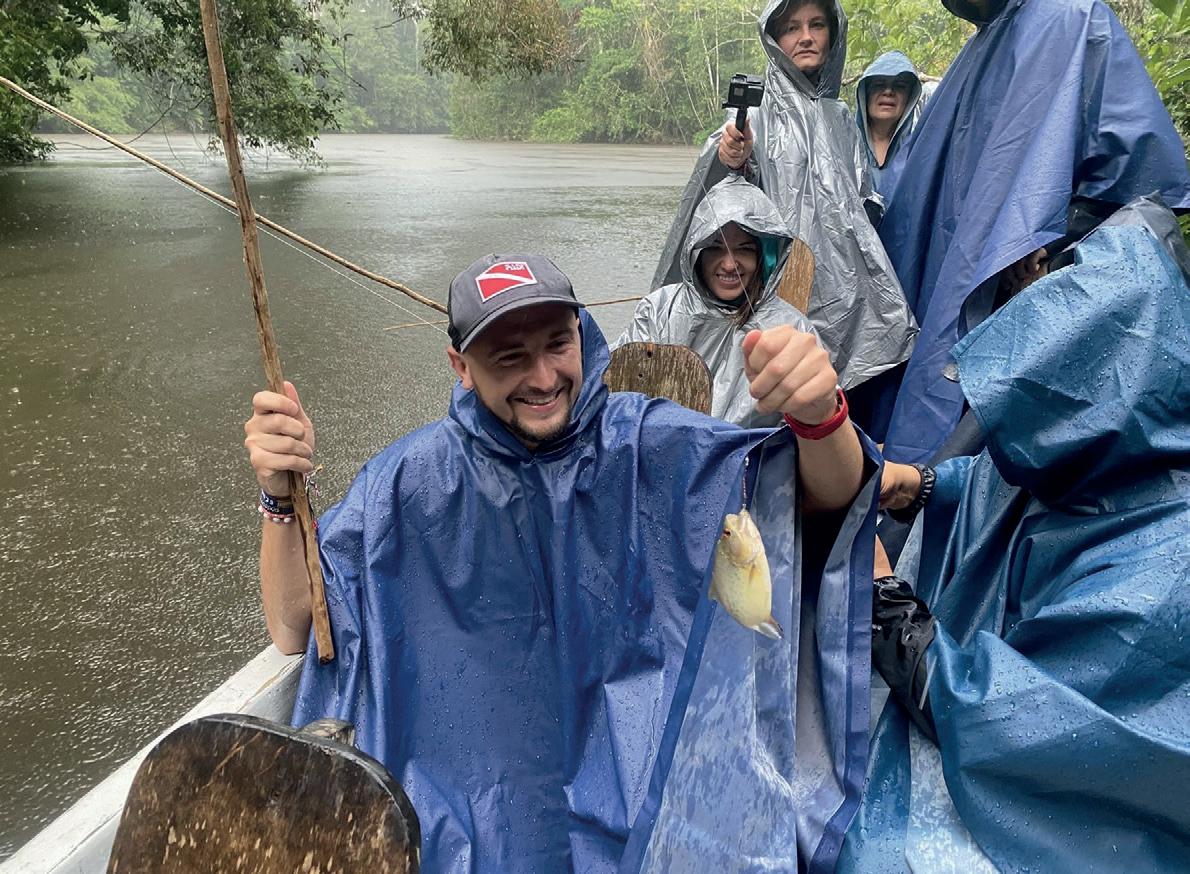
rivers for 4 hours, and suddenly... the "Ecuadorian sky" reminded us where we were... on the equator, because it was pouring down!
Lodges hidden in the depths of the jungle seem to be places at the end of the world. We can completely forget about the telephone signal. The electricity generated by solar panels is switched on only for a few hours a day, the water under the shower is... cold, and at night it is louder than during the day ;) At night the animals come to life and are a great substitute for mobile phone music. The beautiful wooden huts situated on stilts are modestly but cosily furnished. Despite the fact that malaria does not occur in this part of the equatorial forest – each bed is surrounded by a sizeable mosquito net to minimise biting insects and other encounters with exotic fauna...
More than 12,000 species of plants and around 1,320 species of animals can be observed on over 600,000 hectares of protected land. There are 165 species of mammals in the park, including bats, peccaries, armadillos, sloths and various species of monkeys! Cuyabeno is also a paradise for ornithology lovers – more than 500 species of birds can be observed here: over a dozen species of parrots, including macaws, toucans, harpy eagles (predators!), umbrellabirds, hoatzins and jacamars.
Each day of our stay included several hours of walks deep into the rainforest or river cruises. Clad in wellies and cloaks, we quickly adapted to the hot and humid climate (the air here
is humid and heavy, with temperatures ranging from 20°C to as much as 40°C!).
On each hike deep into the rainforest, the guide would tell us about each plant, tree and leaf we encountered. Almost every element of the local flora has a function – it soothes wounds and burns, the stems accumulate considerable water resources, other plants help to unblock sinuses, regulate the menstrual cycle of women, and even – fight COVID-19 (!). The leaves, seeds and also the fruit are natural antibiotics, medicines and vitamins, still used by the tribes inhabiting Cuyabeno – Siona, Cofan and Seciya. The tasting of larvae and lemon ants was quite an experience ;) The night hikes were also unforgettable – spiders, caimans, lizards and boa snakes accompanied us every night... and piranha fishing. All you need is a piece of raw red meat and a handmade fishing rod. Catching piranhas is not an easy task, but the joy of a successful catch was unparalleled (remember, though, that piranhas' triangular teeth are razor sharp;))
Leaving the Amazon we experienced one more encounter – we were bid farewell by real "river spirits" – Amazon river dolphins. These mammals are not as eager to play as the dolphins we know from various other diving sites around the world, but with their pink colour – they are unique. A surprisingly long and narrow snout, disproportionately tiny eyes and grey or pink skin are the main characteristics of the creature which is found in the South American river system. They weigh up
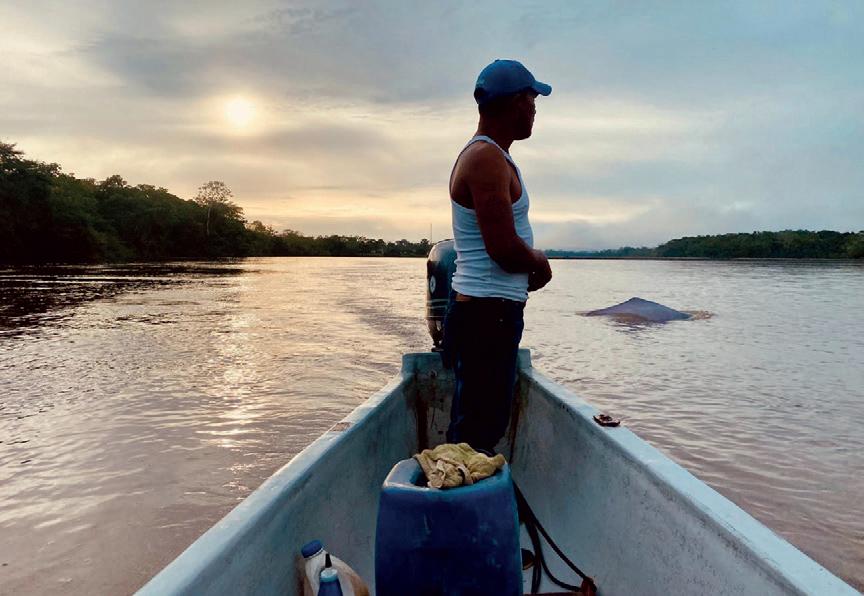

to 200 kg and measure up to 2.5 m in length, making them the largest of the four river dolphin species. The others live in the Ganges and Indus (India and Pakistan), the Yangtze (China) and the La Plata (Argentina and Uruguay). Their most striking feature is their bright pink skin colour, which can vary in shade. The animals are grey when they are born and throughout adolescence, then the colour changes over time as they grow up. In addition, males are often more pink than females, but this all depends on the clarity, temperature and location of the waters in which they live...
The Amazon is an extraordinary place. Evenings are spent in a hammock with a book, fishing or trying your hand at paddle boarding. In this land time stands still. Ecuador as a whole is a real melting pot of diversity which you take in wholeheartedly. So before you go to the Galapagos – stop for a moment on the mainland. Take a breath, close your eyes, stand on the equator, lose yourself in the abundance of Ecuadorian nature and don't wait – there will never be a perfect moment.

Text and photos KURT STORMS
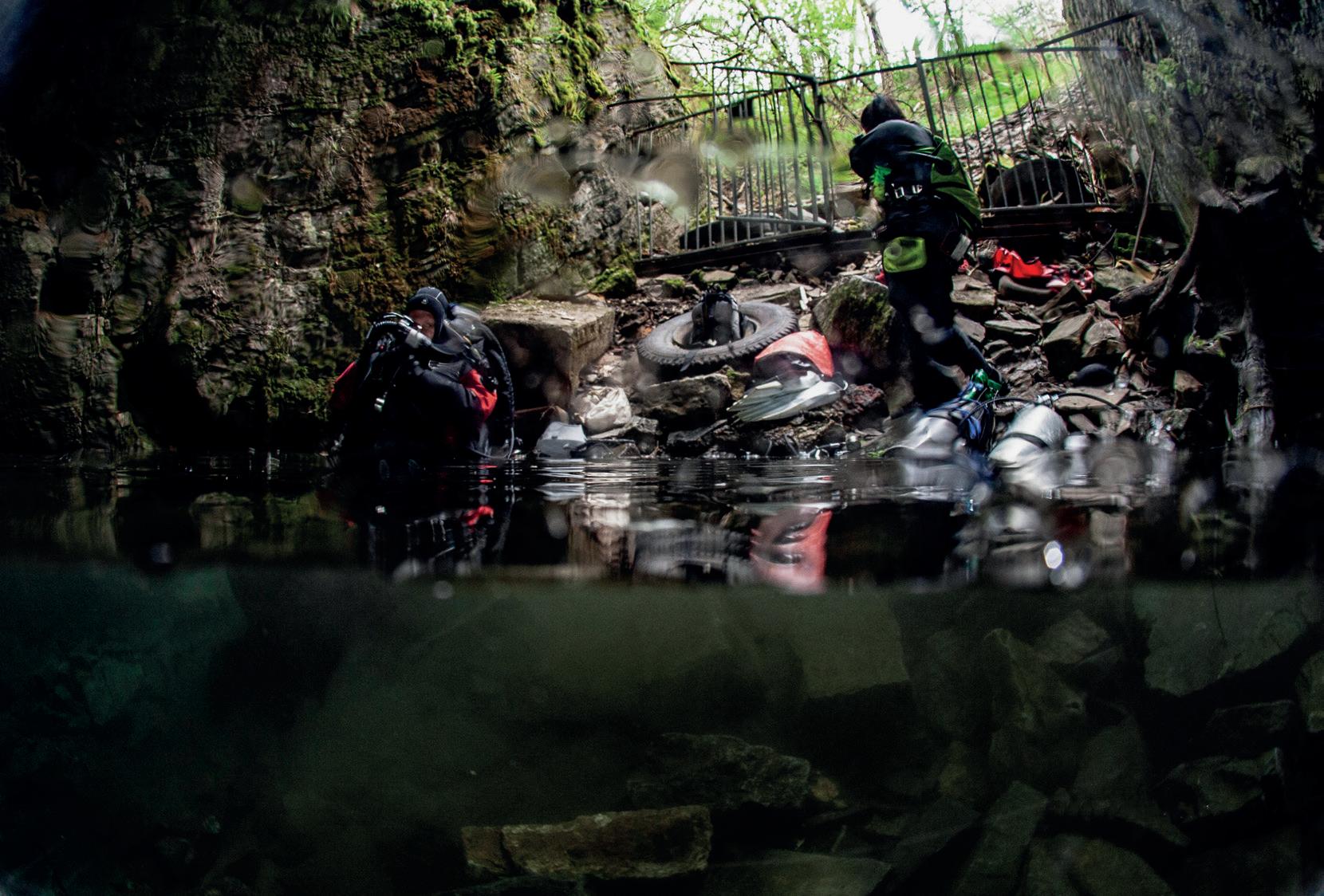
In the past, a lot of black marble was mined in Belgium, especially on the Namur side. The mining industry was an important pillar in the past. The black marble was spread worldwide.
One of these mining sites was the black marble mine Denée. Denée is a Belgian village which has been part of the municipality of Anhée in the province of Namur since 1977. The abbey of Maredsous is nearby.
The Carriere is a well-known mine among Belgian/Dutch cave divers. Once I also took my first steps in cave diving here. This mine is an hour's drive from my house, so I regularly spend some time there with my buddy Willem Verrycken. However, the mine is closed off with a fence. To get access you have to be a member of the VVS or UBS, I am a member of the VVS (Flemish Association of Speleologists) through my speleoclub Sience Explorers.
Today it is time to take my wife Caroline and former student Nico into this beautiful underwater world. Both have recently become members of the VVS but have never dived here before. And at their request, we went for a one-day trip today. I agreed with Nico that he will pick up a key so that we could go in. The key would be in a locker at the VVS office. I used to be the key manager, but due to changes in the regulations this was no longer possible.
We arrived at 10 o'clock, and as usual Nico is right on time and eager to get to the car park. We drive into the narrow corridor so that we can park close by. Before I give the briefing on what we might encounter, I laughingly show them the descent we must take to access the mine. I can already hear sighing voices, do we have to go down here, and up again later? That is going to be a struggle.
After the briefing, we load everything with speleo bags to make the transport easier. Access to the mine is via a steep descent, for which we use a rope to keep us stable, it is sporty, especially later when we have to go back up. There is a lot of rubbish down there, even though two years ago they removed two containers of rubbish, but you can still see the remains like
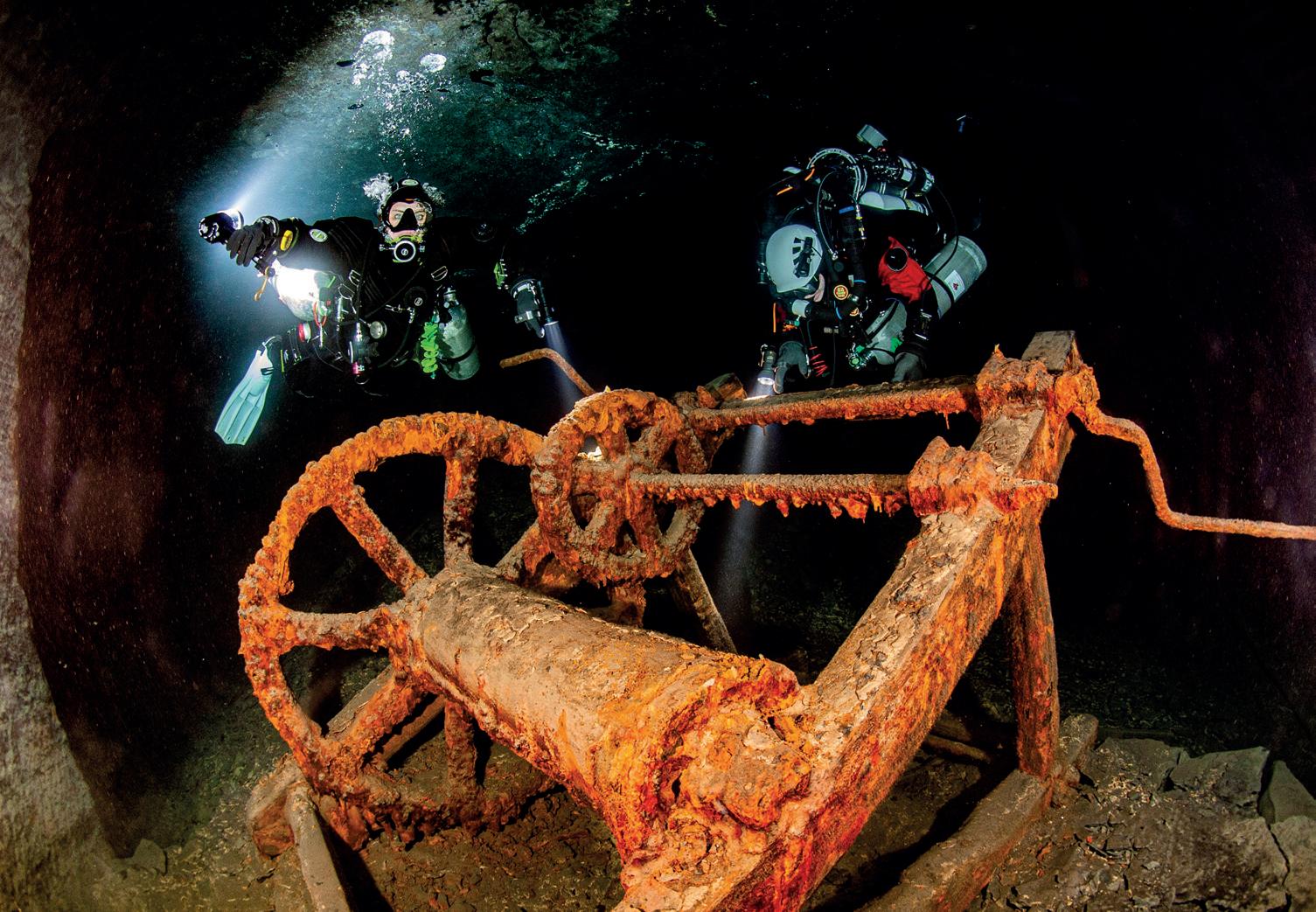

car tyres or fridges that were dumped here in the past. Even a small car wreck was once brought down here. After a few trips up and down the hill, we are ready to change and put on our dry suits.
Once ready and at the water's edge, we get prepared to dive. S-drill, go over our dive, and our heads disappear underwater for the bubble check. We dive in 1 team of 3 divers.
The corridors are large, and the water is very clear, so the visibility is enormous. After about 50 metres we come to a fork, here I take the right side.
We pass some remains such as a large wheel. I sign to pose here for a moment so that I can take some photos. Then we continue down the corridor and here and there I turn around to take a photo and check that everything is OK with the team, especially since they are here for the first time. We stop at a familiar pulley hanging from the ceiling. It's unimaginable how people used to get the slate up here.
After about 30 minutes, we return to the exit. Here I am overwhelmed by the beautiful words and wonder. After a short break of about 5 minutes, we leave again and take the left passage, which leads to a large room, from where you can go up a ladder through a chasm and out into another part of the mine. We don't take the choke today because Nico is with the rebreather. I let them look around the room and make a sign to them, showing them a bubble in which we can put our heads a bit. I can see from their eyes that they both love it. After a minute or so, we disappear completely underwater again, and I give the sign to go to the exit. After the dive, everyone is satisfied, and we start the journey up. We pull ourselves up with the rope, blow out briefly on the way up and then, panting, we reach the cars. We have to do this several times. But the satisfaction of our dive eases the pain.
Denée is a very beautiful mine, but very sporty when it comes to the transport to and from the water's edge. It is also the ideal place to train all your skills and moods. Because you don't do cave diving in one day. This is a process of years, and a lot of training. But for me, diving under a ceiling remains the most beautiful thing there is.
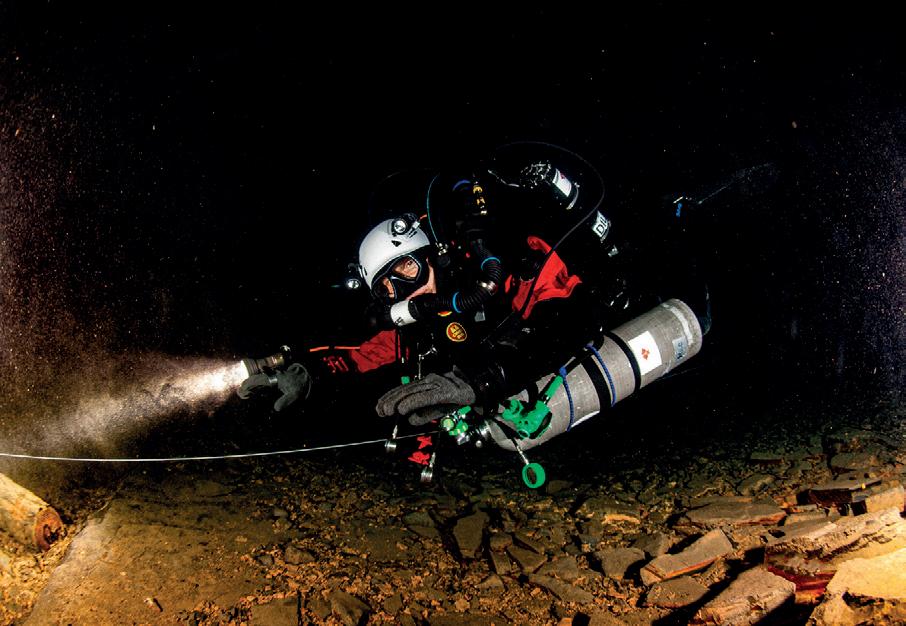
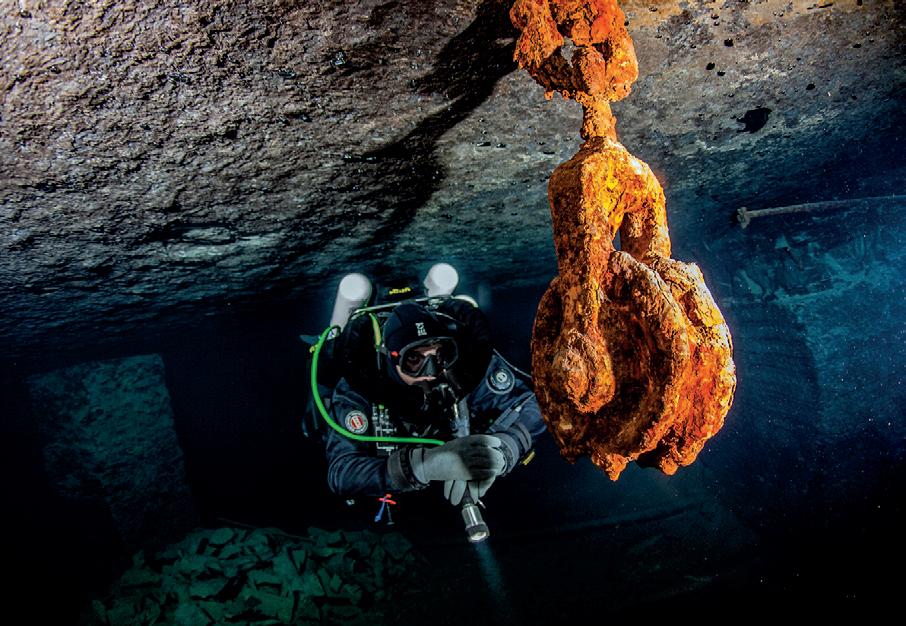
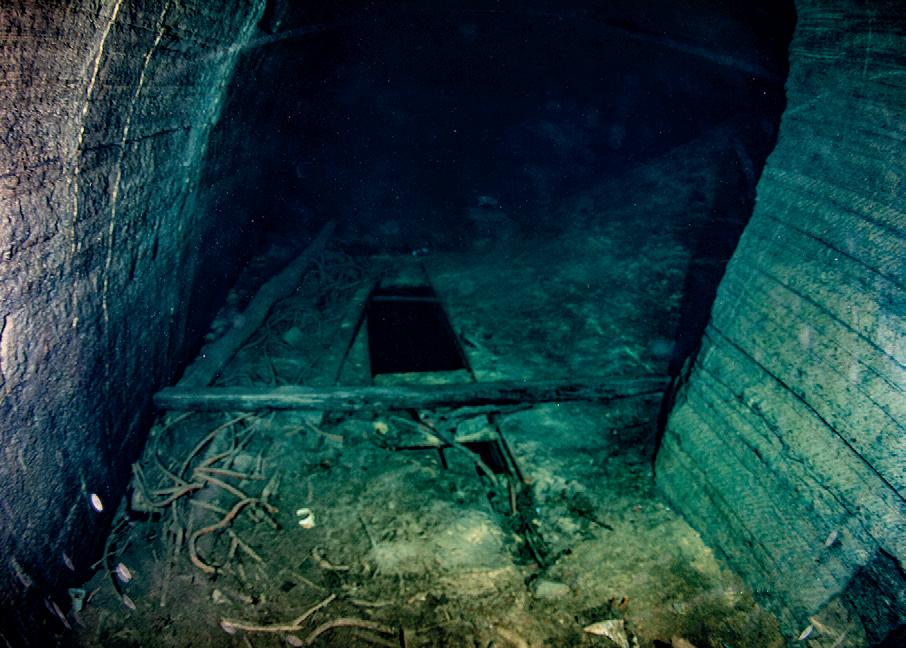


Willingen and surroundings. Although the area is mostly known for skiing and ski jumping, there are other reasons for trips there! For several years I have been visiting the mines in West Germany in the autumn.
It started modestly, I don't remember exactly when. Grześ said: come, it's not deep, but it's fun. He wasn't wrong. This time the goal was four mines. Three I already knew, the fourth, deepest was a new item on our agenda.
The first mine we visited was Schwalefeld. Authorizations of IANTD, GUE, NSS-CDS and NACD organizations are accepted here. Having others you have to reckon with verification diving. The maximum depth in this beautiful and probably the most
difficult mine is 70 meters. There are three entrances to the water, but reaching the maximum level is optimal from the first one. From the others it is best to aim for the shallower levels. Schwalefeld is quite a complicated system, where we will definitely meet with crossings, do some traverses. It is definitely recommended for full cave divers and those with higher skills. We entered in three teams for two reasons. First of all, the space in open water is comfortable for only two divers, with
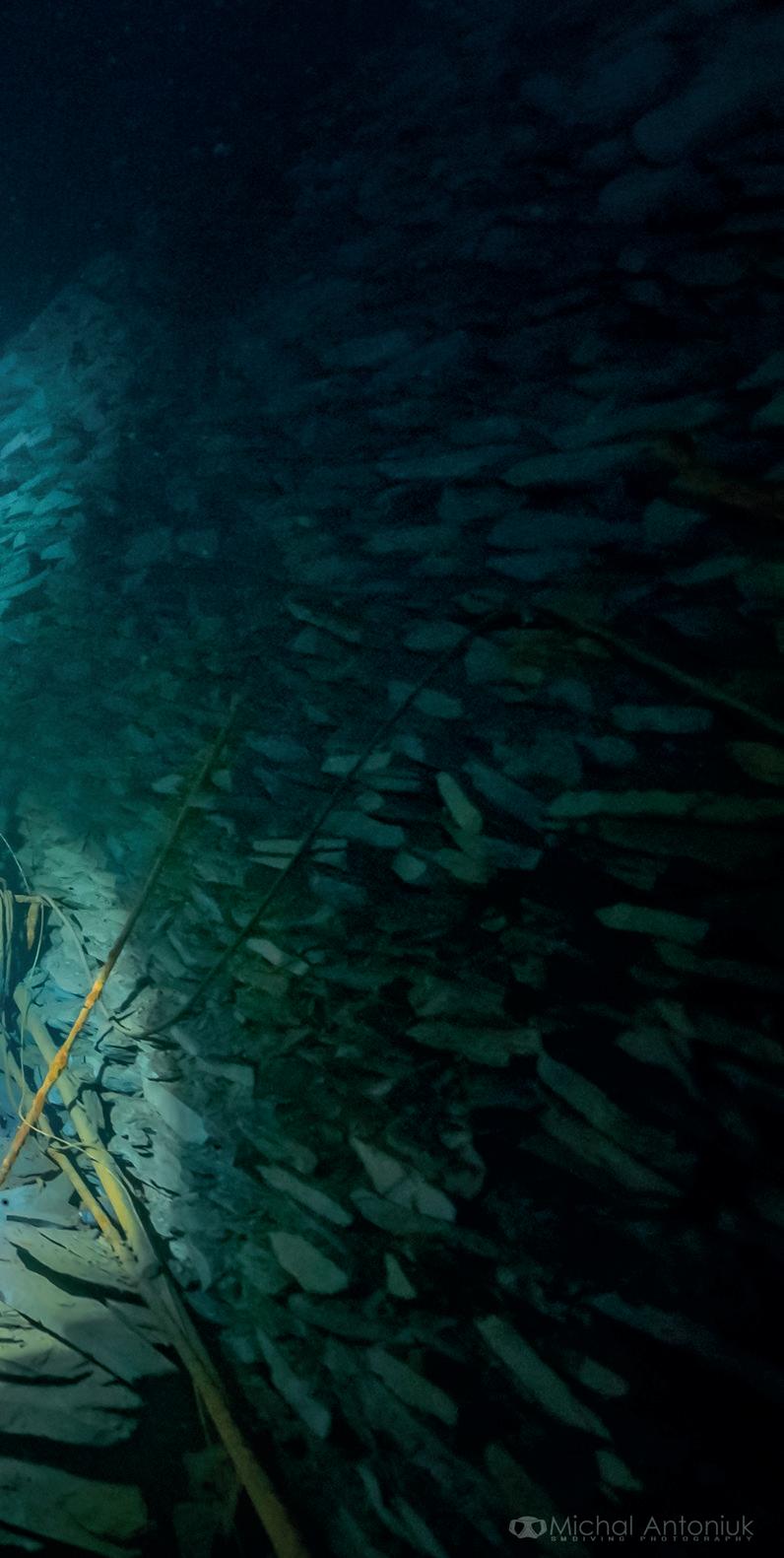
three it gets cramped, which requires some empathy from the team. Four people is already an extreme, but it's also doable. We had different plans. My team focused on the 20 m and 37 m levels, the others decided to go down to 70 m. Visibility is an important aspect for a diver. At the 20 m level it is usually good or very good. And this time it was so, the halcyon lights proved their power by illuminating the entire chamber. Visibility at a level of 37 m is unfortunately not so kind to divers.

One can often encounter the so called "cappuccino", i.e. about 1 m of visibility. This time it was quite clear, as for this place it was about 3 m. The best visibility is at the level of 70 m, where the water seems to disappear, of course not literally. The site has great potential, certainly not just for one dive but for many more.
The next day we went to Christine. Authorizations are the same as at Schwalefeld. The galleries in this mine are on the level of 25 and 50 m. The place is a little different than all the mines we have visited. Navigation at level 25 m is easy, but difficult at the same time, because during the dive, if we want to see not only the corridors, but also the spaces from where the slate was extracted, we have to reckon with the saw-type profile. Our ears were exposed to great strain. None of the chambers, despite the fact that some go to the surface, allow
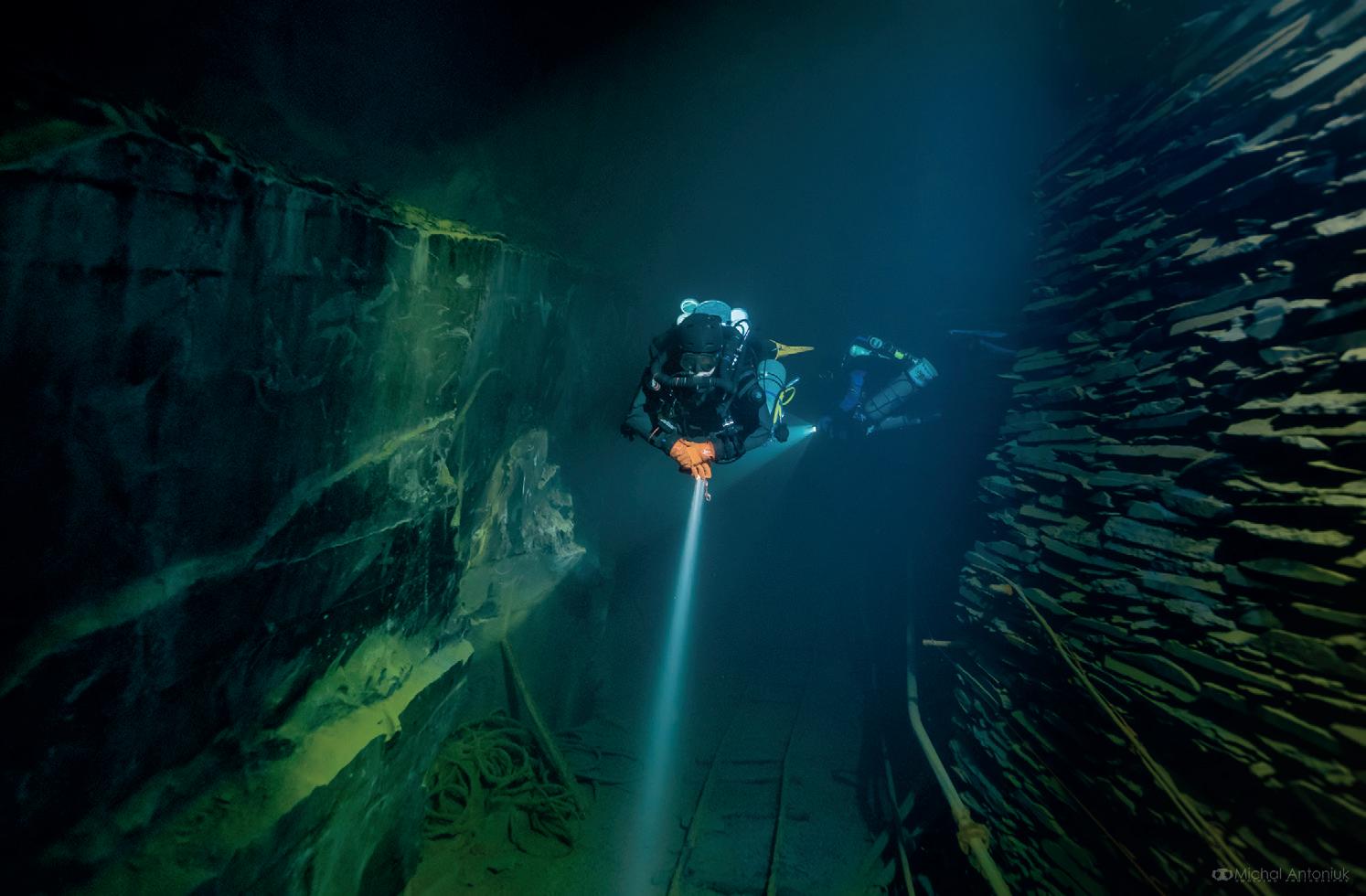
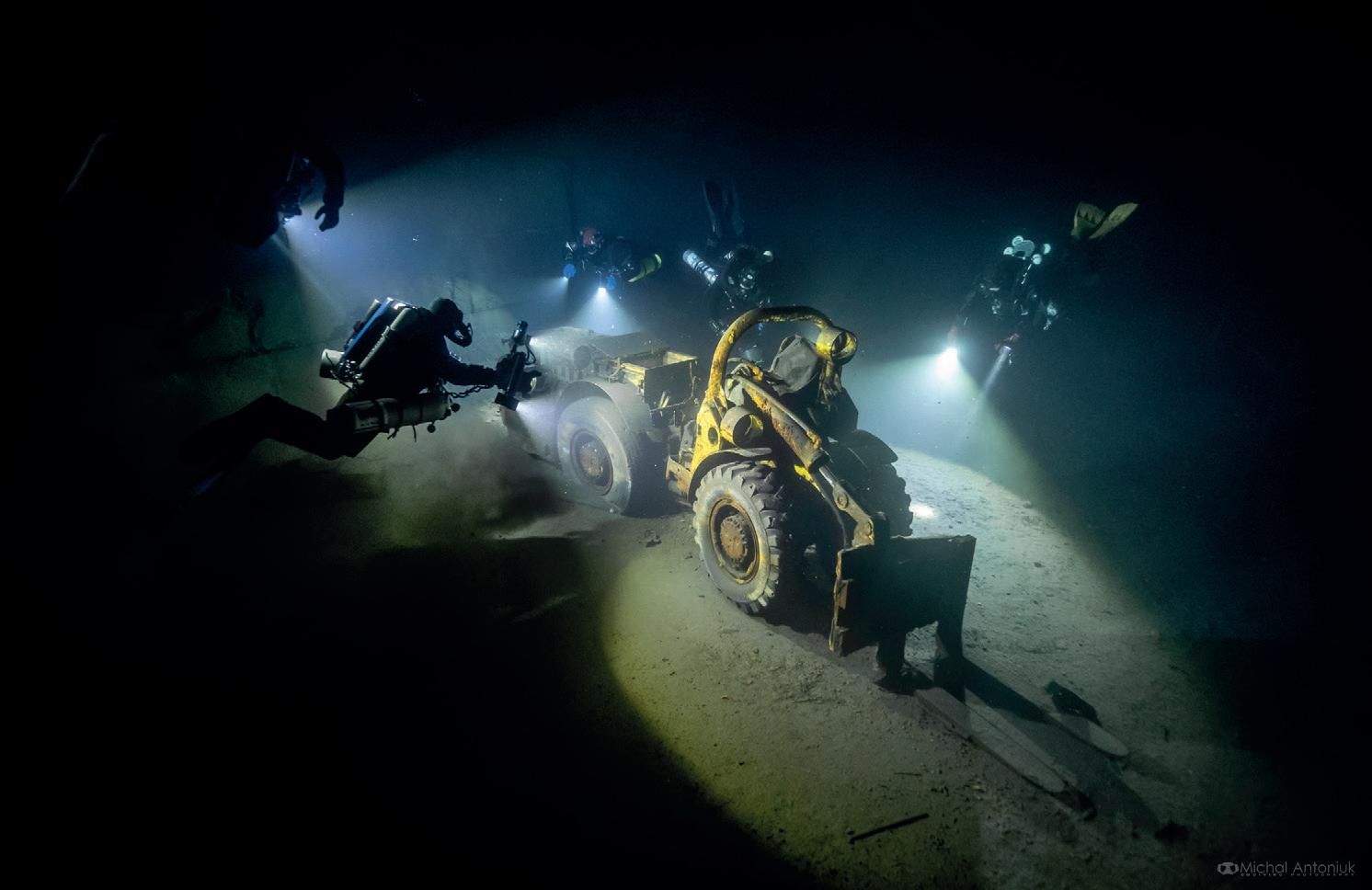

us to go outside. Keep this in mind when planning the route you want to take and don't overestimate your ears. I left level 43–50 for another visit. It is different from the shallower ones and resembles caves. Another advantage of this place is the visibility, if not for the walls it would be over 30 m. Christine is the smallest facility, but you can still spend a lot of time there.
Felicitas, you hear about it and you can already imagine the machinery there. First, however, you have to cross the "milky way" in the descent shaft, which this time stretched for about 15 m. The main gallery was located at 30 m depth. However, it is worth checking beforehand, because the water level changes depending on rainfall, and this is important for OC divers, so they could choose the optimal gas. The mine is divided into two parts, the left one, where we find machines and evenly drilled chambers, and the right one, which was exploited by blasting. This one looks like a cave in places, but of course is not devoid of traces of the infrastructure from years of exploitation. Visibility in the corridors is usually good, reaching about 10-15 meters. Navigation is not really complicated here, the ropes are placed in a very orderly manner. We can do some small traverses. The place is good for both mastering the skills of diving in the overhead environments, as well as for diving tourism. Felicitas has a very well organized infrastructure, and a full "blender room" provides filling of any gas we need.
Finally, our last stop was Nuttlar. This is a multi-level mine with various routes, where you can spend a lot of time exploring the corridors and passages between them. The entrance, like Christine and Schwalefeld, is a real gateway to Narnia. Outside we have a yellow shipping container with tables for equipment, and then the actual entrance to the mine. It is spacious and gives an idea of what we can expect from the dive. In the water there is a platform that makes it easier to attach additional cylinders. A narrow tunnel leads from the large space into the mine, which at about the 13th meter ends with a fork to the different routes. The mine is characterized by wide and high corridors. If you deviate a bit from the rope while diving, you can see objects left behind by the miners. In many places the walls are stacked with mined stone, which looks very nice. There are several places in the mine where we can emerge, but none of them are exits. However, there are at least two places on the red line for emergency exits closed during normal dives, so it is important to sign in on the information board.
Willingen and the surrounding mines were generous with good visibility to us. The water temperature was more pleasant than most lakes at this time of year in our latitude, ranging between 8–10 degrees Celsius. Although for most of the participants of the expedition it was not the first time in these mines, we will certainly be back. These are places with potential, where there is still much to discover.
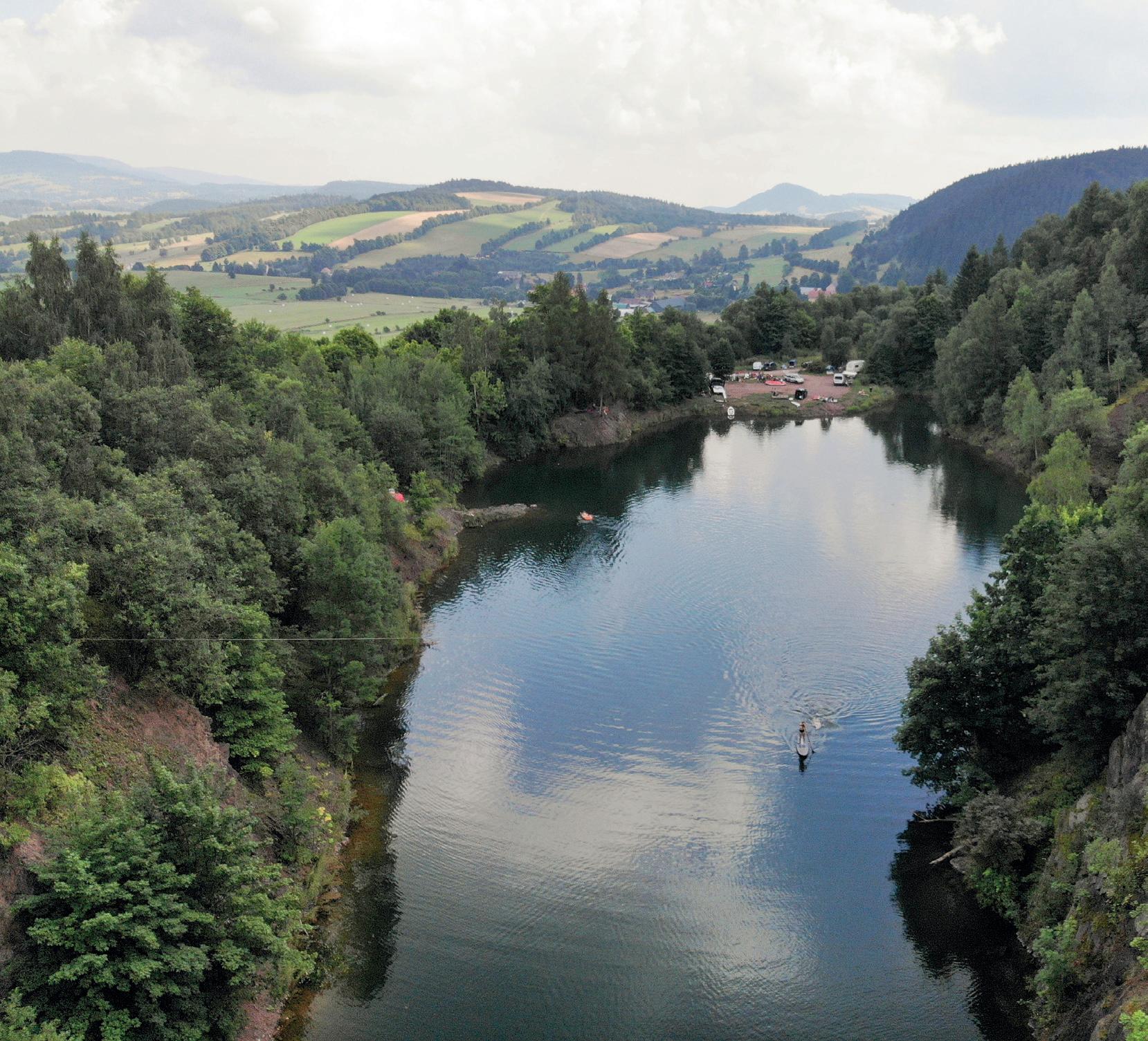

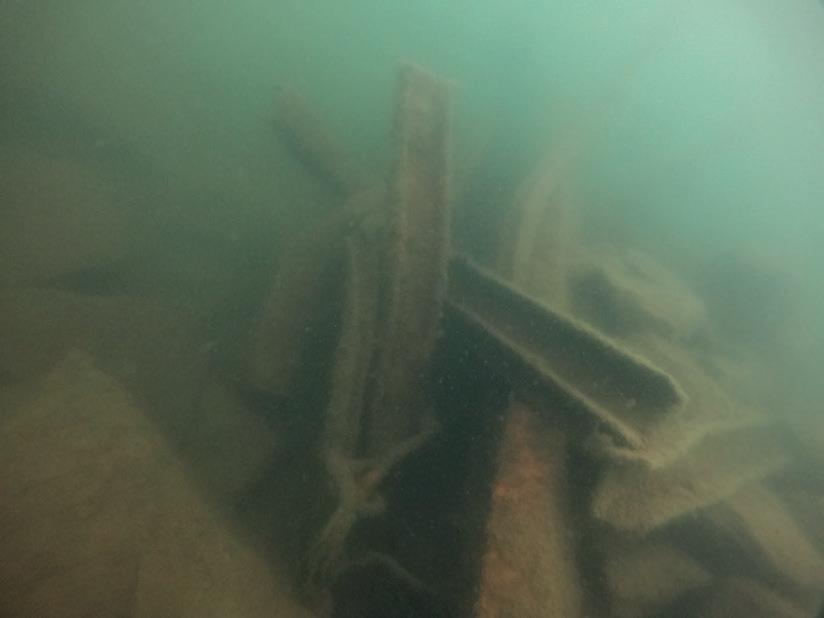
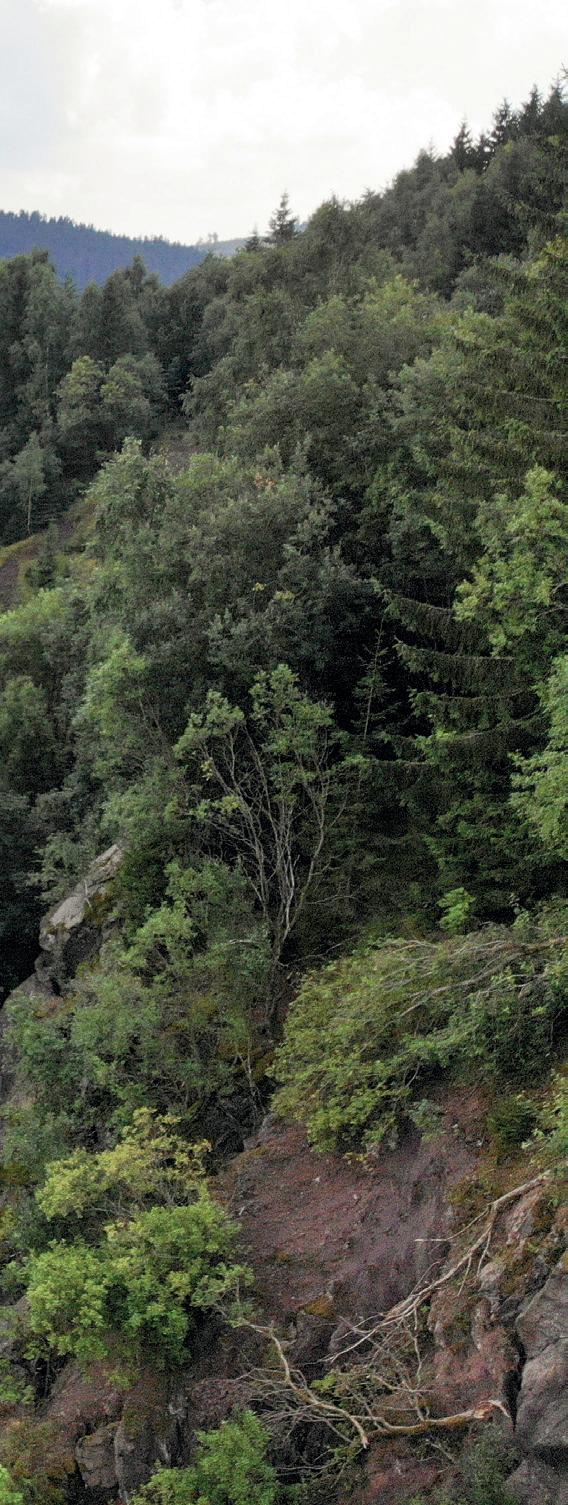
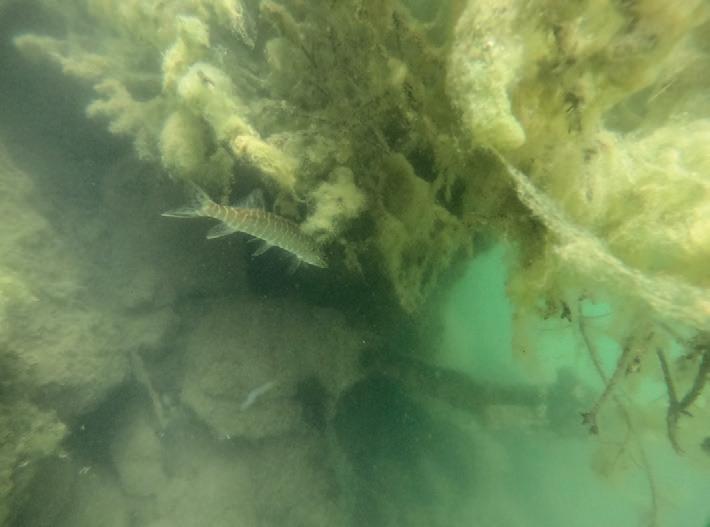
its closure is given as the 70s, twentieth century.
Access to the reservoir itself is not difficult, the narrow asphalt road leads directly to the shore.
The descent to the water is quite steep, covered with boulders and stones. In the coastal zone it is quite shallow so you can easily put on your fins, mask and check your equipment before diving.
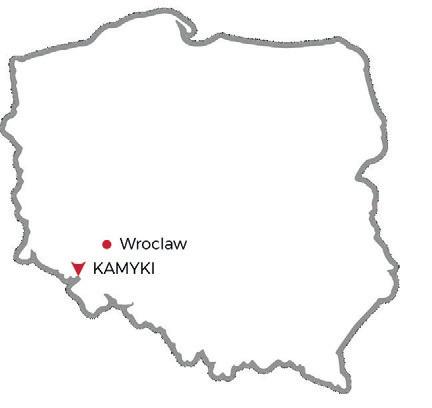
The visibility leaves a lot to be desired, it ranged from a meter to four. The quarry is surrounded by several hundred meters long walls which are used by climbing enthusiasts in summer, and in winter turn into picturesque icefalls.
FROM THE EDITORS
Together with Damian, we decided to visit another less known water reservoir. The fins carried us towards Głuszyca Górna (Poland), to the old melaphyre quarry.
'Kamyki', as that is the name of the quarry, began to operate most likely at the beginning of the 20th century under the name of Krause & Co. It is located at 585 m above sea level and the date of
Sailing on the right side, right next to the shore, we come across the cobbled remains of a building or a bridge, and on the left side, undoubtedly, the greatest attraction awaits us, namely the remains of a metal structure, the foundations of which are located below three meters under the water. The whole thing is noticeable at the surface of the water reservoir, its elements practically stick out above the water (they are marked with a plastic bottle). At the bottom, you can find the remains of machinery used to extract ore, such as metal parts of machines, sections of tracks several meters long or huge loading buckets.
In the coastal zone of around the reservoir there are sunken trees that have been decorated over time with water vegetation and serve as a home for local fish.
The mine is quite a shallow reservoir, only about six meters in the deepest place.
Melaphyre, or palaeobazalt, is an igneous rock with porphyry structure from the Palaeozoic. It has an almond texture and a grey-purple, red-brown or greenish-black tint. It is a Young Paleozoic equivalent of basalt.
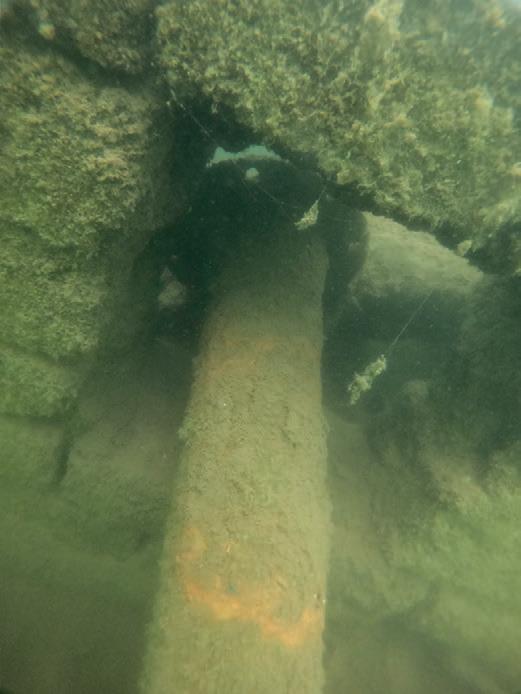
Text MATEUSZ POPEK Photos WIKIMEDIA COMMONS

On August 10, 1628, the Stockholm harbour was crowded with people whose eyes were focused on one place, where King Gustav II Adolf himself was standing.
Proud of his work, baptised his greatest ship, giving it the name "Vasa" to emphasise the greatness of his dynasty. After a while, the ship was proudly leaving the port setting the topsails and the crowd cheered. As an unexpected gust of wind filled the sails, the ship leaned over, the king paled and the crowd fell silent.
In the 17th century, the Baltic Sea was an arena of constant fights. The
Baltic states clashed, both on land and at sea. Galleon flotillas participated in spectacular battles. Among these troubled times one man stood out – commander, strategist, reformer, warrior, "Lion of the North", Gustav II Adolf, king of Sweden. He waged wars with Russia and Germany, reformed the army and made Sweden the hegemon of the Baltic Sea. However, he was most in conflict with the Republic of Poland, where his great-uncle, Sigismund III Vasa, was on the throne. Their conflict was not only political or family, but also symbolic. Such a symbol of victory and domination was to be the greatest warship of all time, which Gustaw Adolf had built. Its splendor was supposed to outshine all the ships sailing on the Baltic Sea. The keel was laid in 1626 and the works lasted for two years. At that time, a huge ship was built, 61 meters long and more than 11 meters wide. Its buoyancy was
1,210 tons, and the crew consisted of 437 sailors. The ship was equipped with 64, guns, which was a formidable firepower at that time. The king personally supervised the construction and equipment of the ship, so that it would be second to none.
The entire ship was to be a floating declaration of the power of the Swedish king. The deck was decorated with sculptures referring to the Bible or Greek heroes. There are also sculptures of the king's worst enemies, i.e. Poles, placed in the bow of the ship. These figures were huddled under the benches, which was supposed to refer to the habit of "barking back" (the habit of making a slanderer back his or her wrong words). These sculptures were placed in such a way so that the sailors relieving themselves in the latrines could see them perfectly, knowing how to treat the enemies of the crown.

The main builder was a boatbuilder of Dutch origin Henrik Hybertsson, who died during the works. This caused some confusion in the construction, which was deepened by the constant changes made by the king iny. This one wanted the ship to be slender, but the largest, as well as the richly decorated superstructures to look great.
On the fateful day of August 16, 1628, the king, his court and all his subjects, gathered on the Stockholm quay, waited for the sail to be luffed. As the wind blew and the ship tilted, the crowd froze and the king paled. When the tilt persisted and water began to pour through the open dividing gates, Gustaw Adolf already knew that it would be a spectacular… catastrophe. After a while, the ship capsised and sank, dragging more than 30 sailors to the bottom.
Immediately after the disaster, a commission investigating the matter was established. The committee members accused Polish spies of sabotaging the project. They were accused of introducing technical sketches, changes that made the vessel unstable, which resulted in its sinking. The spies were never caught. However, it was implicitly known that the king's whims and his constant changes to the original design made the ship out of balance and unstable.

After the catastrophe, Vasa was not immediately erased from memory. In the 60s of the 17th century, the operation of extracting some cannons from the wreckage was carried out. A bell was used for this dive and it is one of the oldest operations of this type.
Time, however, passed inexorably and the position of the wreckage was forgotten, and the object itself became a legend. It was not until 1956 that the amateur archaeologist Anders Franzén found the wreckage. Quite quickly, a committee was formed to raise funds and equipment to recover the historic wreckage.
Five Swedish Navy divers under the command of Per Edvin Falting were commissioned to recover the huge wreckage. Their aim was to dig 6 tunnels under the unit through which the ropes needed to extract the object were pulled. Everything happened at a depth of 32 meters, with absolutely zero visibility. An amazing number of 1,300 dives was made during the Vasa extraction operation without any serious accident. After that, the wreck, attached to two pontoons, was excavated and transported to a dry dock.
The work of the divers during the extraction operation was immense and admirable. It is worth mentioning the

professionalism and courage of these people, because at that time diving was not a hobby, but hard and extremely dangerous work. The dives took place in heavy classic equipment. The divers, who often were undersestimated, did a key job in the extraction. It should be remembered that it is still one of the largest and most spectacular wooden wreck extraction operations in the history of underwater diving and archeology. Currently, the wreck can be seen in the Vasa Museum in Stockholm, where it is presented. It may be a chuckle of fate, but over 300 years after the disaster, the Vasa ship has become the largest and most spectacular wreck you can see. I wonder if Gustav II Adolf would like it…
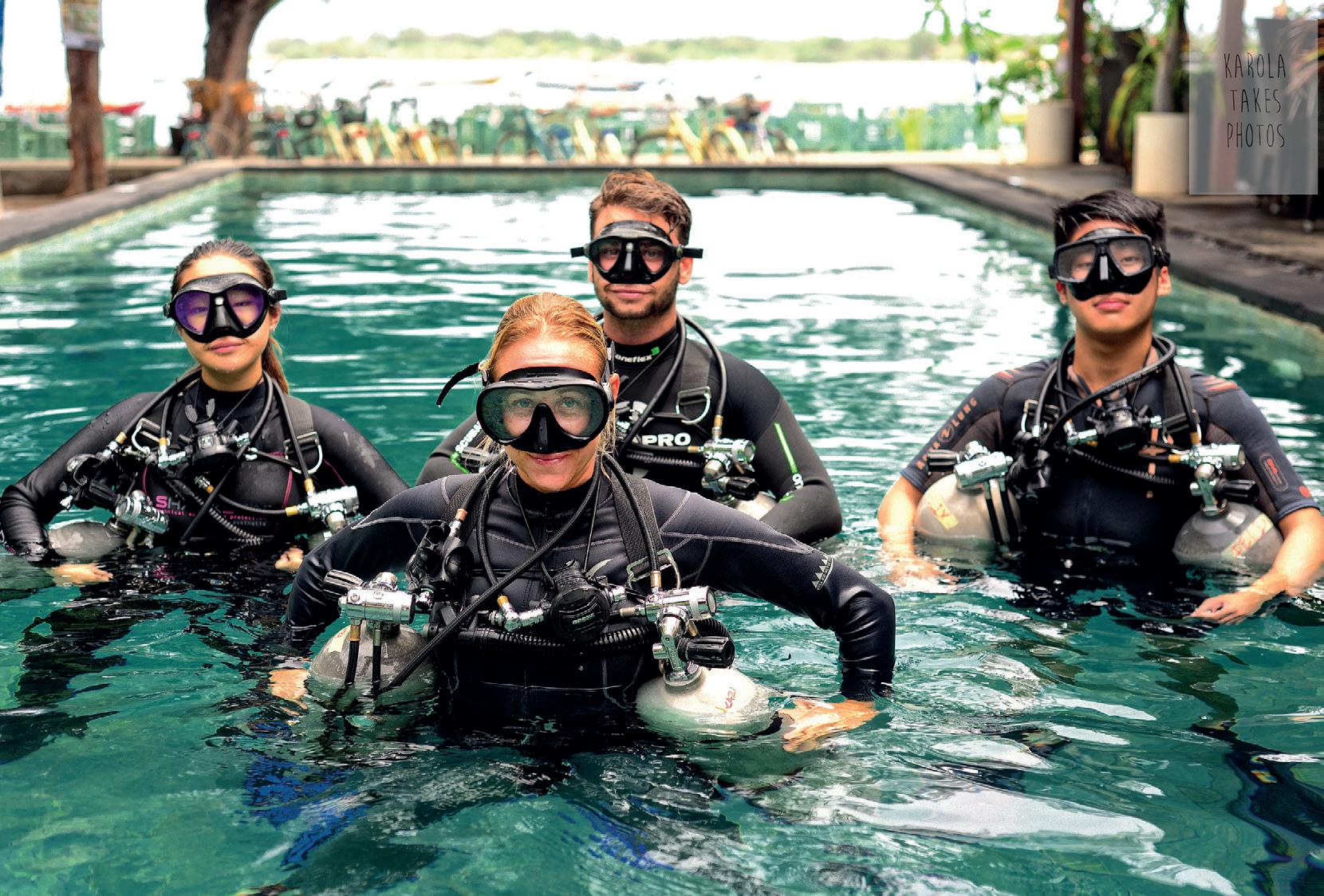
Text LAURA KAZIMIERSKA
Photos KAROLA TAKES PHOTOS
Christmas and New Year's Eve are behind us and ahead of us are months of gray weather and temperature fluctuations. Oh, and the New Year's resolutions, which must be fulfilled.
How about this year we choose something that will give us great joy, and in addition raise our physical fitness and qualifications or help our planet? Of course, I'm talking about diving New Year's goals here. After all, they're so easy to fall under the standard resolutions that virtually everyone has before midnight, hoping for better to come. Where is it worth to go, and above all, where can you go, what courses to take to diversify your underwater expeditions, how to take care of the marine environment, sometimes even being away from the water.
RESOLUTION #1: I will learn something new!
Sidemount course, as two cylinders are better than one.
Sidemount is a configuration where the cylinders are mounted on the sides, along the body instead of traditionally on the back. This style originates from cave diving, but in the last decade is gaining popularity among recreational divers. This is due to: double the amount of gas you can take with you under the water, increased safety in case of failure of one of the breathing apparatus, more streamlined position during the dive, which reduces energy consumption, and at the same time we gain convenience with diving equipment because of the packability. The advantages and the applications are numerous. From diving in wrecks and caves, to deeper descents in open water, and besides, in this configuration you look quite impressive, kind of like James Bond.
The basic course consists of about four to five hours of theory and familiarization with the new setup, a session in a pool or a pool-like area and a minimum of three dives, although
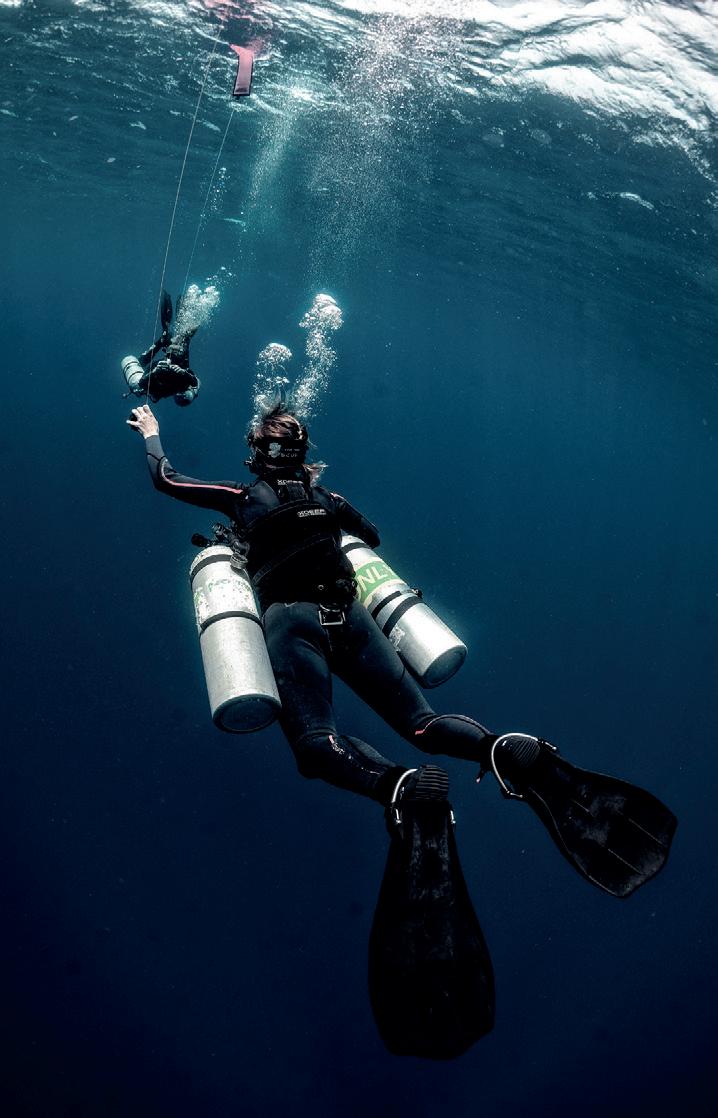
you may be tempted to do more. You don't need a lot of experience, just a basic OWD course and a minimum age of 15. Personally, I recommend that those joining the course have a minimum of twenty dives (however this is not a standard prerequisite) or feel fairly confident underwater and have excellent buoyancy.
Sidemount is a great intermediate course between recreational and technical diving. Here we start to get into the tec setup at recreational depth and time limits. So it is a good test to see if technical diving is something you would like to get into.
Try it quietly. CCR adventure.
The Closed Circuit Rebreater (CCR) is more advanced and quite an expensive piece of equipment, but it is worth trying out at least once.
Rebreather is a device that allows you to use the same breathing mixture repeatedly. Among others, we use it in medicine and diving. The concept of the machine appeared already in the 17th century thanks to Giovanni Borelli. The ma-
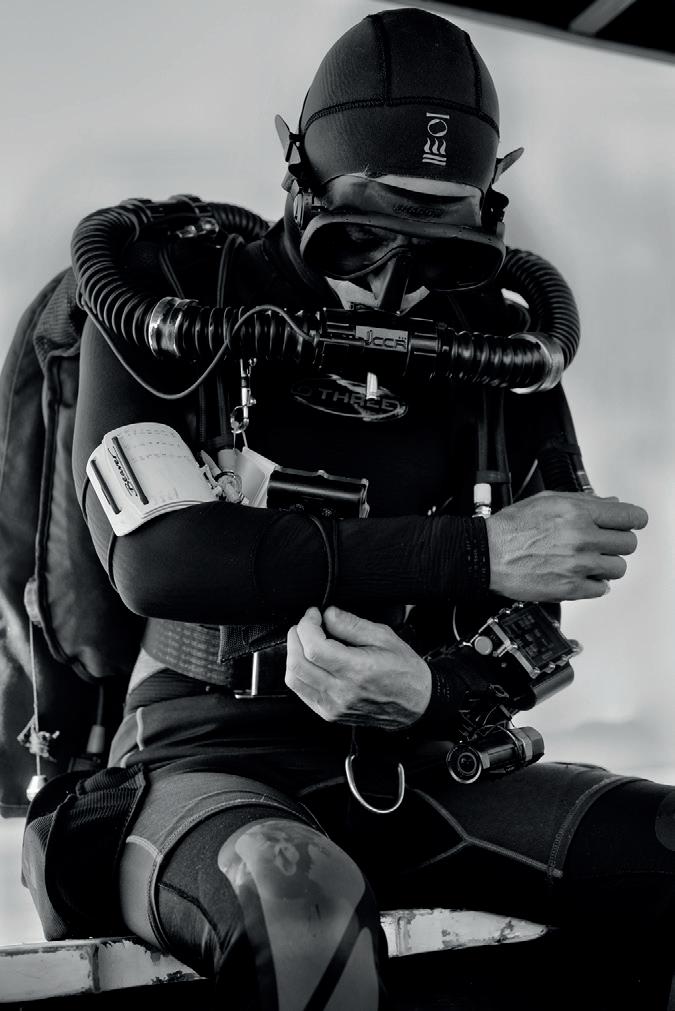
chines we use today began to be improved and produced on a larger scale during World War II, and then by trial and error new models were created and the electronics were improved to increase their reliability and safety.
Now, more and more often we see CCR on the backs of technical and deep-sea divers. Because of the fact that their functionality, performance and technology can make underwater exploration easier and largely reduce the cost. The only thing that limits your time underwater is the carbon dioxide absorbing substance that allows you to dive for up to 6 hours.
Contrary to popular belief, CCR is not intended only for deep-sea divers. It is a great equipment if you want to get closer to the underwater fauna. When you don’t exhale bubbles from the rebreather, you truly become part of the underwater world. This is great for photographers and videographers, and you don't even have to go deep. What's more, on shallower descents, our no-decompression time limit (NDL) compared to the open circuit is significantly increased.
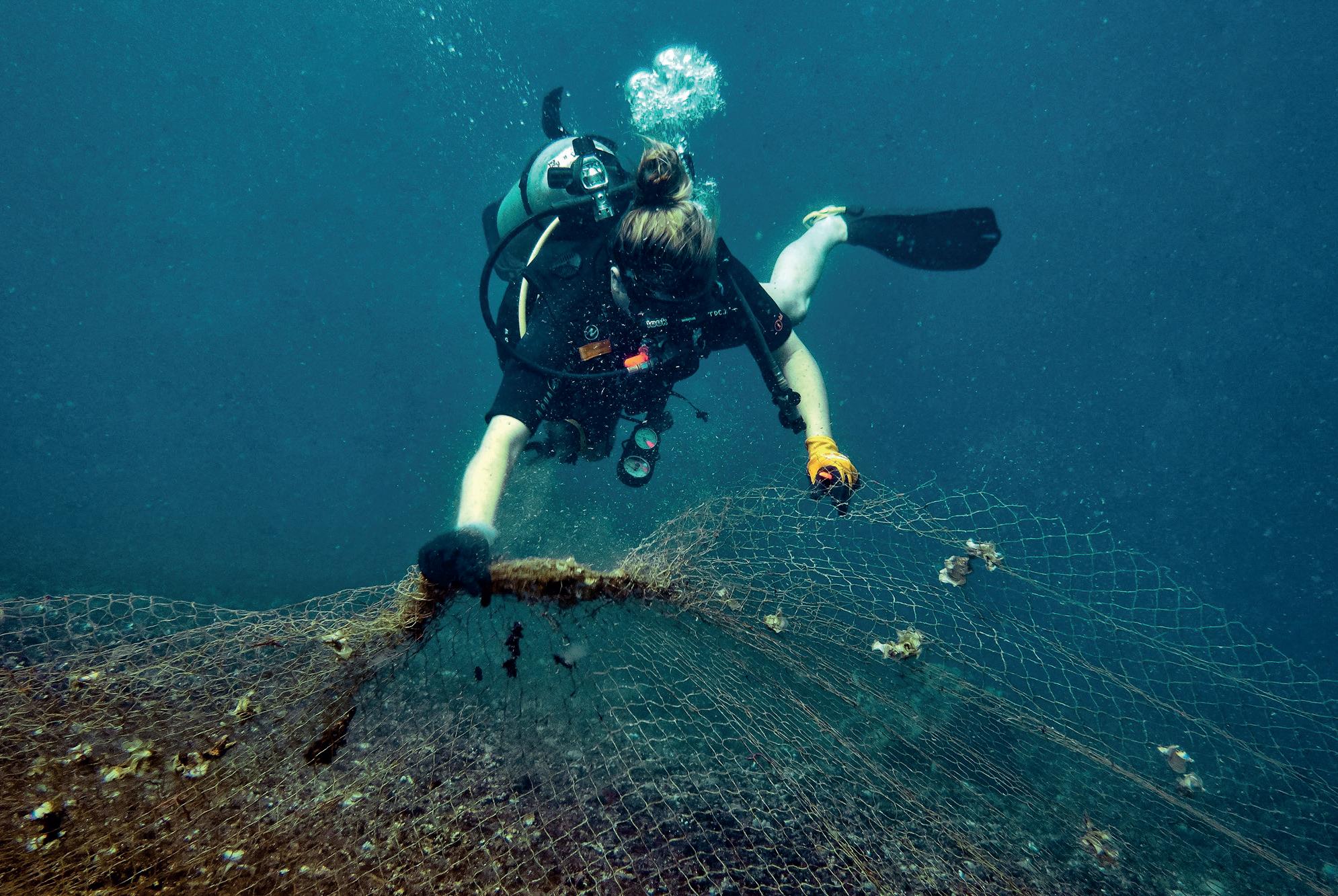
To start your closed circuit adventure you don't need to have any technical diving experience, just to be at least 18 years old and certified as a Nitrox and deep-sea diver. So called "Try CCR" can be done in one day. First you learn the theory and basic principles of diving with this type of equipment, then the instructor takes you for a shallow dive in the open waters.
How about learning more about the equipment.
Diving equipment and additional accessories can give us a headache. Currently on the market we have an extensive range of options, and manufacturers are competing in terms of colours, quality and functionality to enhance our underwater expeditions. How to choose the right, functional configuration, that will allow us to develop skills and diving experience at a low cost? How does a rebreather work and what should we pay attention to when choosing fins, a mask or a surface marker buoy? The TecLine Academy answers these and many other questions in each issue of Perfect Diver. You can also make an appointment with them. Two days spent in an authorised diving salon under the supervision of professionals will allow you to delve into the world of new diving equipment solutions and technologies. This option is available to diving instructors of any diving organisation.
RESOLUTION #2
I will take care of my health (my own and our planet's)
Get involved in protecting what you love.
With the New Year it is great to give something back, and there are many ways to do so. It's fun to get a mesh bag or the TRSHBG gadget to take with you underwater. When you spot debris on the reef during your dive, you can pack it in and then log your findings on the ProjectAWARE app, Dive Against Debris. All information from this app is fed into a larger database that monitors the category and amount of debris found underwater from different parts of the world. The database is used to understand the extent of pollution in our waters and take appropriate action to protect the environment.
Another way is to organise clean-ups. Whether it will take place underwater or in the nearby forest, it does not matter. As we all know – what we find on land, at some point we will see in water. You can register such an action on the PlanetHeroes platform and earn money. You can use the fund to finance equipment, similar events, donate to a foundation working for sharks or coral reefs, or simply keep it for yourself as a reward
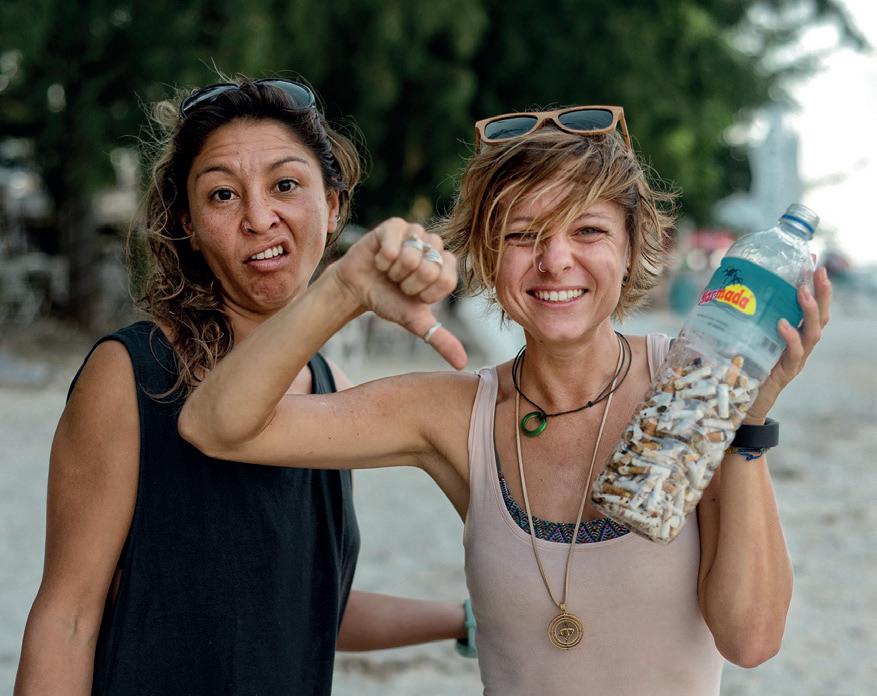
for a great deed. (Or join the Clean Up the World campaign organised in Poland by the Our Earth Foundation – see editor's note).
Another resolution idea is to limit the consumption of fish and seafood or avoid dietary supplements such as shark liver oil, which can easily be replaced by a plant-based equivalent.
Overfishing is a huge problem affecting our ocean and fishing communities. This is due to the lack of clear regulations and controls on fishing, the use of environmentally destructive fishing gear, commercial fishing and the huge demand for seafood products. Studies show that the European Union is the largest importer of fish and seafood in the world. "It is us, EU citizens, who by making consumer decisions influence what happens in the world" says Anna Sosnowska of WWF. When ordering another plate of sushi, it is worth considering where the fish we eat comes from and what impact it has on the coral reefs we admire so much.
RESOLUTION #3:
I will read more!
This resolution was on the third place of the most popular New Year's resolutions in 2021. No wonder – reading is worth it. Especially if it is to deepen our knowledge of diving and the underwater world. I particularly recommend these three books. I couldn't stop myself from reading them:
"Into the Planet: My Life as a Cave Diver" a book written by one of the most famous cave divers Jill Heinerth. It describes, step by step, her path to exploring the underground world. Here you will find a good piece of history about how cave diving developed and a bit about the evolution of diving equipment, interesting anecdotes, as well as an attempt of explaining what

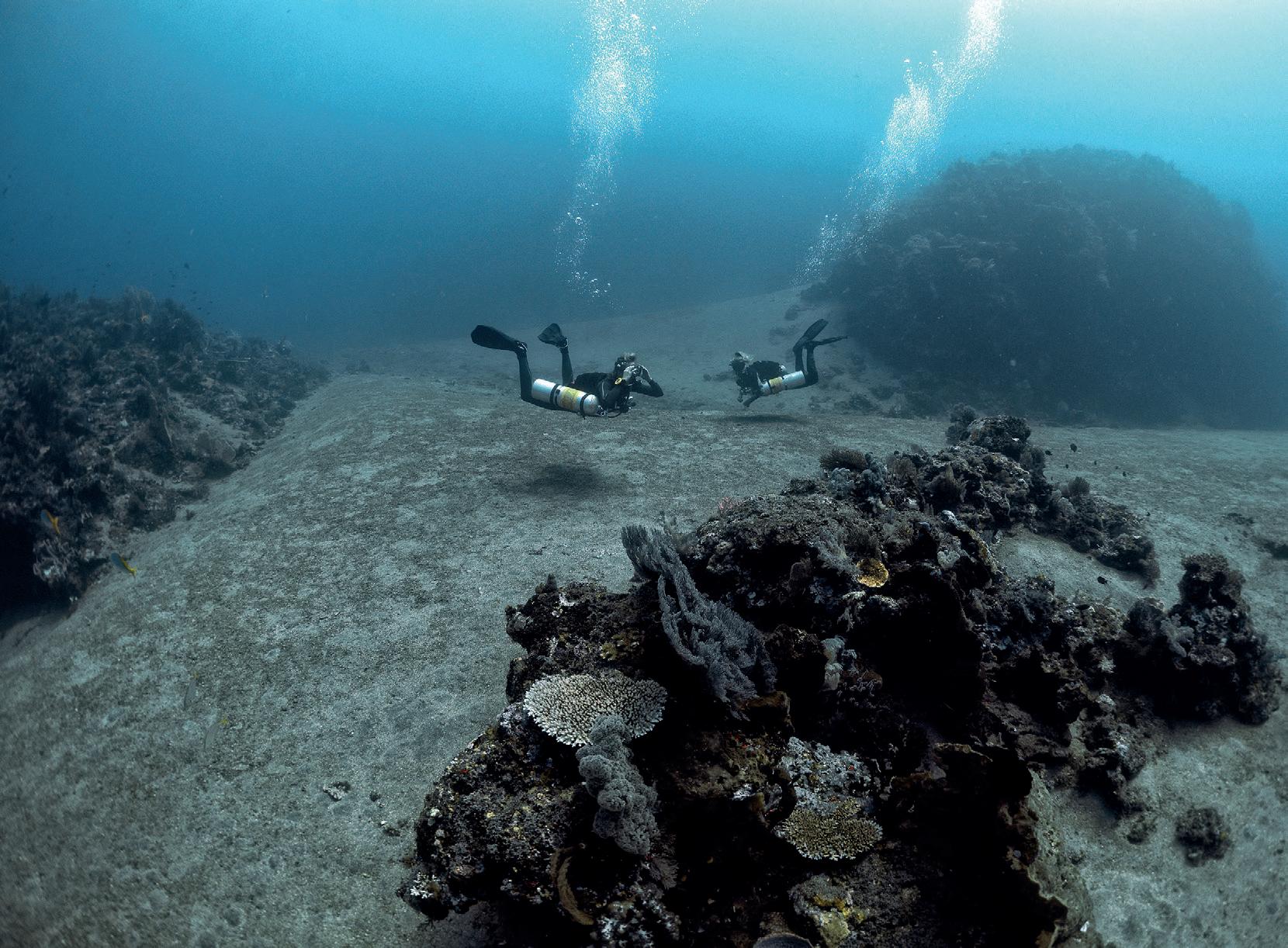
drives us to this hostile for man environment, where even the smallest mistake threatens with loss of life.
"Shadow Divers" by Robert Kurson is one of the first diving books I ever picked up. It was published almost twenty years ago and is based on actual events. Kurson tells the story of finding and trying to identify a German submarine sunk to a depth of seventy metres off the coast of New Jersey. The story is set in the early 1990s. It describes the challenges of avid wreck searchers and their mission to identify the mysterious boat, which is not mentioned in historical documents. In those years technical diving equipment, gas mixtures and procedures were still in development and new and better methods of decompression diving were being discovered. The present day is intertwined with the history of World War II and fragments of lives of the officers who rest at the bottom with the wreck.
"The Brilliant Abyss" is written by Helen Scales who is a marine biologist, author of many books and radio journalist. Here we delve into the extraordinary and very alien world of the deep ocean. We discover organisms living in highly extreme conditions and look at their existence in this underwater world thousands of metres away. Even today, we know less about the depths of the ocean than we do about the outer space, and almost every organism or phenomenon is a new and fascinating discovery. The author raises the issue of this world being extremely endangered, even though we know so little about it. Deep-sea excavations and the extraction of raw materials from the bottom of the ocean, which are planned for the next few years, may seriously damage this fragile ecosystem and have disastrous consequences for the ocean. The book prompts the question: is modern eco-technology really as renewable as we think it is? What effects will the extraction of raw materials have on our planet.

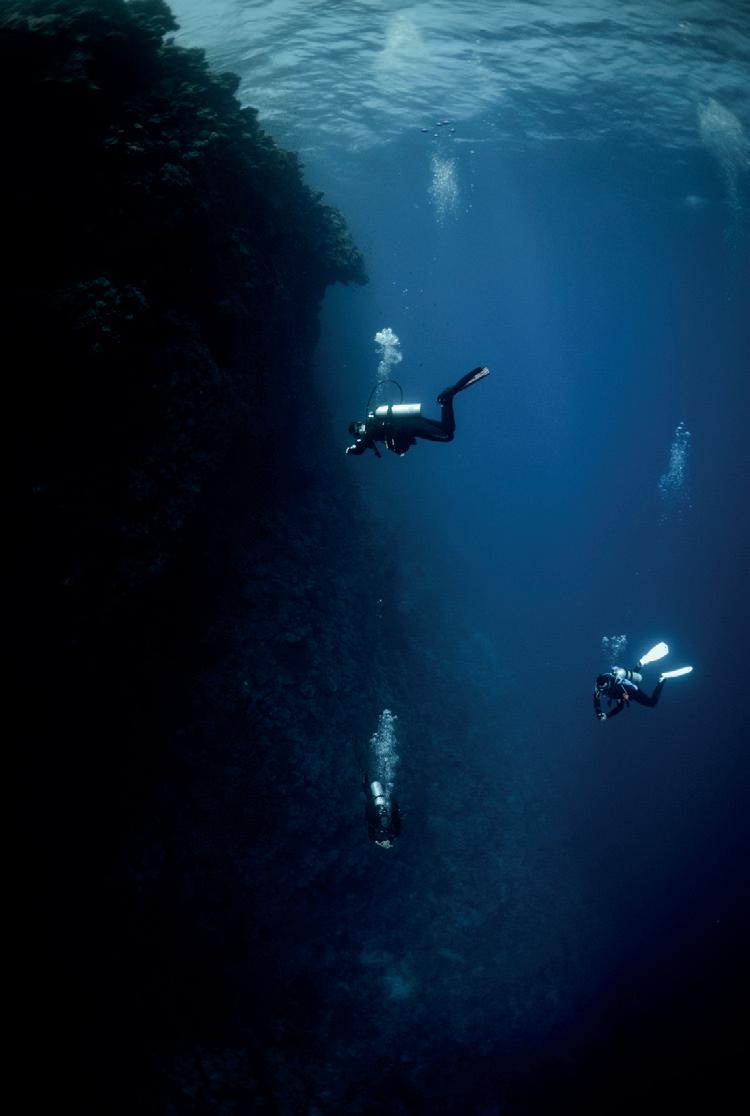
RESOLUTION #4: I will travel more
Mexico during the pandemic period was one of the few places with fantastic diving sites that remained open to foreign tourists and it seems like the new wave isn't going to change anything. From east to west, from cave diving to swimming with whales. Mexico has everything a diving soul could desire.
If you are interested in caves (cenotes), it is best to stay near Tulum or Playa del Carmen, although cenotes can also be found in many other places on the Yucatan peninsula. There are many operators, including some from Poland, offering cave diving which does not actually require any additional qualifications apart from OWD and good buoyancy. The play of light in the cenotes is breathtaking, and the surrounding stalactites, stalagmites and fossils take us back to prehistoric times.

If diving in small spaces and darkness is not for you, go to Cozumel island, forty minutes by ferry from Playa del Carmen. The current dives there will provide plenty of excitement. The reef that you can see there is the second largest in the world. The dramatic topography, passages and caves, through which every diver can easily pass, will delight you every time you go underwater. Stingrays, turtles, bottlenose sharks and a magnificently preserved shipwreck are a fantastic addition.
For fans of fauna, I recommend diving into the Sea of Cortez in the Baja California area on the west coast (We wrote about this in the previous issue – see editor's note). A popular and expensive option is a diving safari to Socorro Island or Guadalupe Island, which surely will knock your socks off. You can also choose a cheaper option, such as day dives around La Paz or Cabo San Lucas. These too will provide great experiences and encounters with underwater nature. Depending on the season and the diving site, you can meet eye to eye with seals, see hammerhead sharks, whales, manta rays, bull sharks and silky sharks gathering in large groups. This region is definitely one of the best diving destinations in the world.
...or maybe Egypt this year.
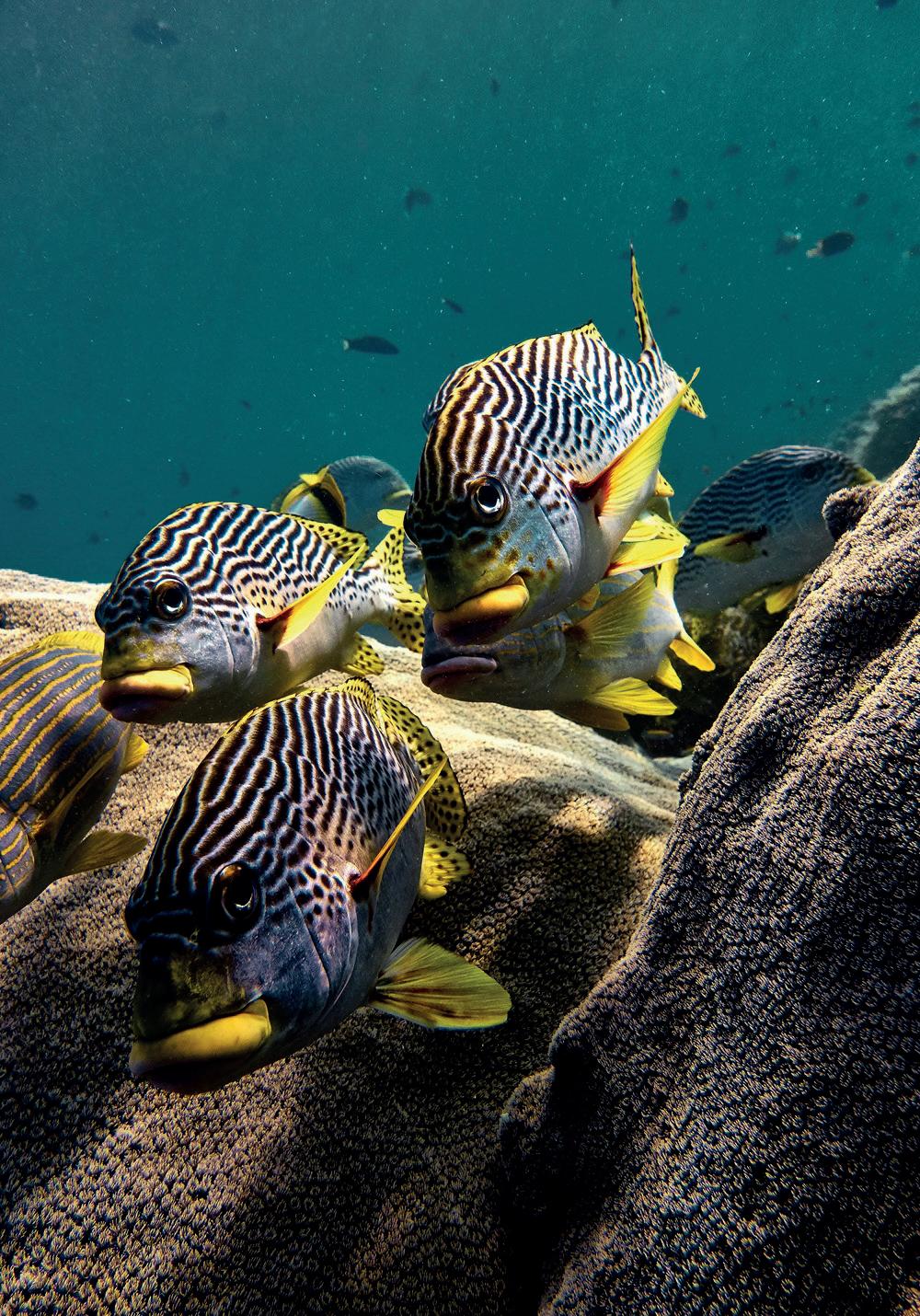
After all, Egypt also counts among the diving hot spots. Colourful coral reefs, sharks, stingrays and dolphins will make
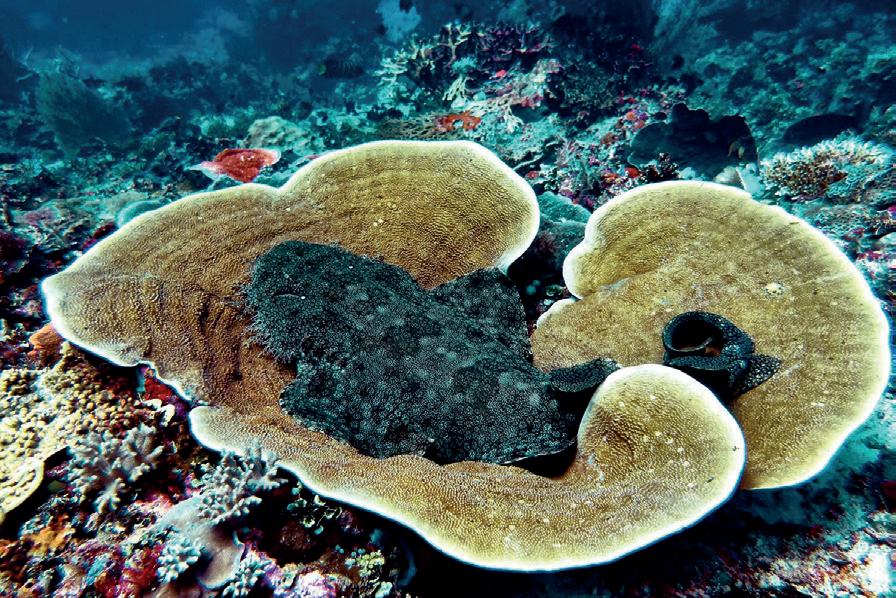
underwater escapades very enjoyable. It is also worth going on safari and spending some time in good company crossing the Red Sea. This is a perfect place for underwater photography because of the variety of marine life found in this region, where visibility ranges from twenty metres upwards. Those who love underwater landscapes will definitely find something for themselves. Dramatic walls covered with tons of coral, caves and isthmuses will create an amazing scenery.
The diving season lasts virtually all year round, so it's a great way to forget about the dullness for a while and feel the warming rays of the sun on your skin while sipping drinks after an exciting day spent under the azure surface of the water.
No matter which of these options you choose, each will ensure that you spend New Year 2022 in a truly diving mood, which is, after all, what we're all about.


Text JAKUB BANASIAK
Photos SERGIO DAVID HERNANDEZ HERRERA
MOST OF US HAVE HEARD OF THE DRAMA OF LONG-FINNED PILOT WHALES BEING KILLED EN MASSE IN THE FAROE ISLANDS. IN "PERFECT DIVER" NO. 18 IN THE ARTICLE BY HANNA MAMZER ENTITLED: "RITUAL SLAUGHTER" WE COULD READ ABOUT THE TRADITION OF HUNTING THESE ANIMALS.

Five thousand km south of the Faroe Islands, off the coast of Tenerife, there is a population of short-finned pilot whales, whose safety and well-being seem to be diametrically superior.
Pilot whales, belonging to the delphinidae, are generally much less known than their cousins – bottlenose, common or spotted dolphins, and finally the
largest dolphins – killer whales. Which is a pity, because these massively built cetaceans with bulbous heads and rounded dorsal fins are an extremely interesting species, especially in terms of behaviour and family life.
Unlike their long-finned cousins, the short-finned pilot whales prefer warmer waters. Their main foraging habitat is squid-rich areas. The reservoir in the
vicinity of Tenerife and La Gomera in the Canaries provides them with great living conditions.
These animals, sociable and accustomed to the presence of humans, are concentrated here in the strait separating the southern coast of Tenerife from the neighbouring island of La Gomera, and their observation is possible at any time of the year.

These cetaceans are called "pilot whales" in English. This name probably comes from the fact that it was once believed that stocks of these animals were led by pilots. In addition to the rounded head, pilot whales can also be identified by their distinctive back curved, rounded dorsal fin at the front of their body. In males, the base of the dorsal fin is longer and generally larger.
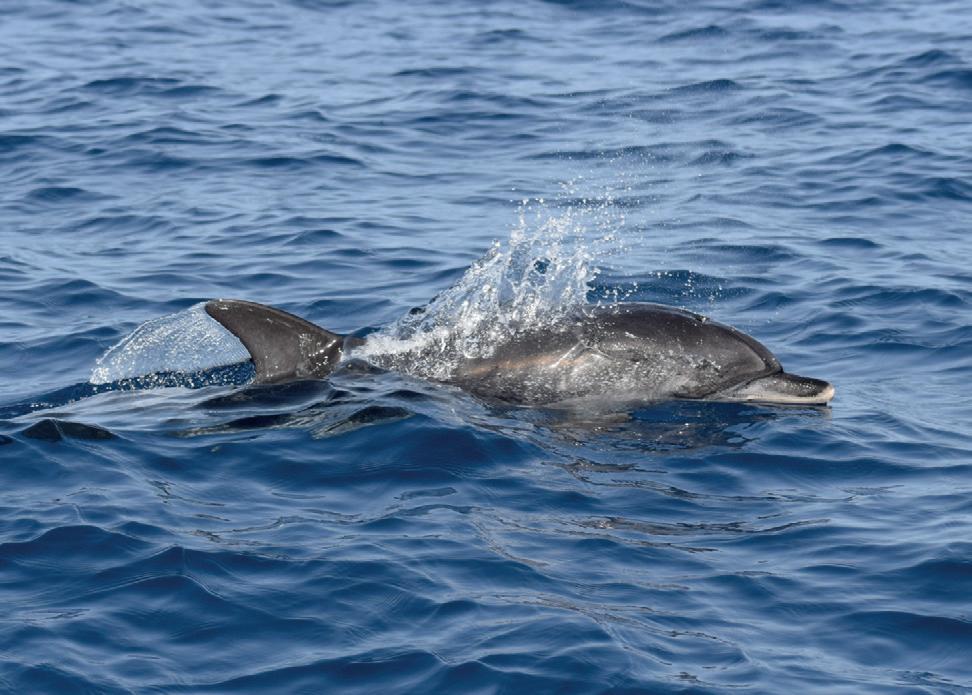
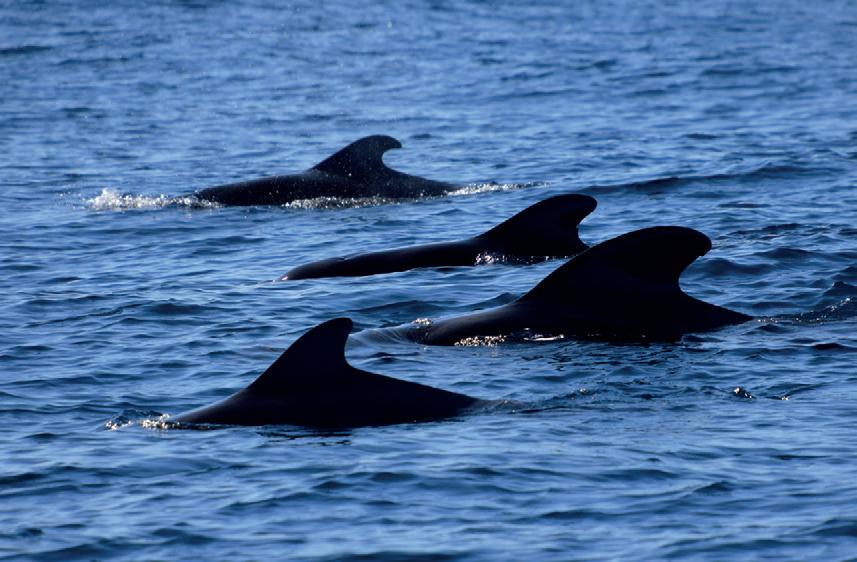
Pilot whale calves have a poorly developed beak and their dorsal fin is more pointed, more upright and more similar in shape to the dorsal fin of smaller dolphins, such as bottlenose dolphins. The latter are also often found southwest of Tenerife.
The body of the pilot whales is black or black-brown, with a large gray saddle behind the dorsal fin. Pilot whales,
together with oceanic killer whales, false killer whales and the pygmy killer whales, as well as melon-headed whales, belong to the group of dolphins known as "blackfish".
The short-finned pilot whales feed almost exclusively on squids and octopuses, sometimes only on small shoals (e.g. cod, herring, mackerel). They eat up to 45 kg of food daily.
Females reach sexual maturity at the age of 6–10 years, and males at the age of 12–15 years. Gestation lasts approximately 15 months and occurs every 3 to 5 years. Most births take place in summer. At birth, the calves are approximately 1.8 meters long. The young are fed with their mother's milk for 2 to 4 years.
Thanks to the photo-identification technique of individuals, we know that short-finned pilot whales live in stable social groups and form matrilineal kinship groups. In such groups, all individuals are genetically related to the oldest
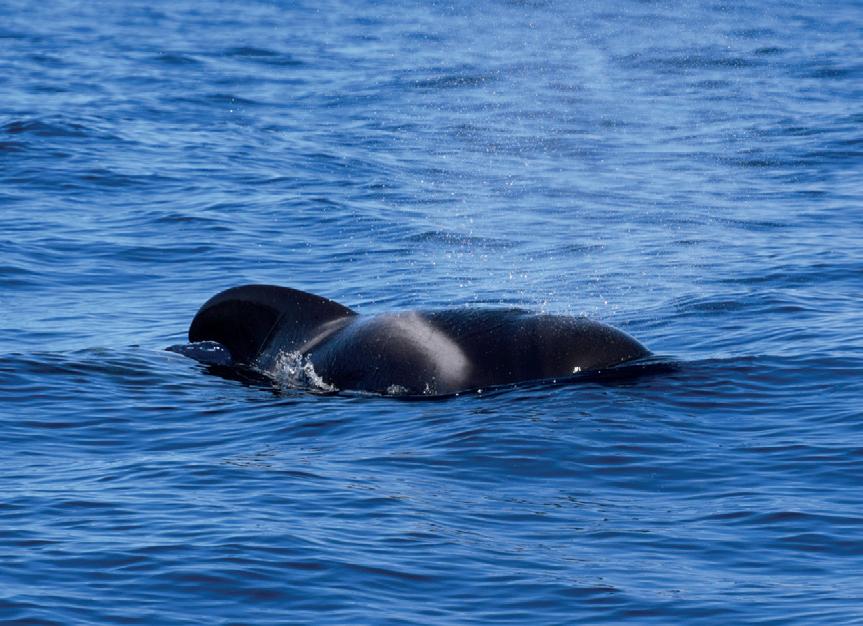

female, and mating takes place between individuals from different groups.
Between 1991 and 1992, Jim Boran and Sara Heimlich identified 495 shortfinned pilot whales in 46 flocks southwest of Tenerife. Based on the patterns of occurrence, we know that groups that come here for a short time and residents, i.e. groups of permanent residents of this area, appear in this area. Research shows that mating takes place between individuals of different stock. Researchers also found similarities between them and the social structure of
the matrilineal stocks of killer whales living here.
On the other hand, research on long-finned grids confirmed that in this species all-parental care ("foster" care for offspring that are not the offspring of the caregivers) is common, and that even more than half of the calves are cared for by non-parents. Both sexes look after the calves and the caretakers and calves can come from different groups. Alloparental care also occurs in short-finned pilot whales, but is less researched. It is believed that among the
short-finned pilot whales only females care for their calves.
Research on short-finned whales in Hawaii, USA shows that males have more than one partner – typically there is one sexually mature male in every eight mature females in the group. Males generally leave the family group, while females can stay there for life, attending the calves and youngs. Probably the same pattern is in Tenerife.
The maximum life expectancy is considered to be 45 years for males and an average of 60 years for females.
Calves (less than half the length of adults) usually swim close to the mother, and newborns (with lighter lines visible on the body – a remnant of wrinkles in the prenatal period) do not move away from her at all. At this age, the risk of being attacked by a shark or killer whale is very high.
Usually individual animals in a family group or the whole group dive together. Juveniles often emerge earlier or sometimes remain completely afloat. Often, so-called "preschool groups" can be observed with a few adults and a few young animals – walking together or resting together on the surface of the sea.
Jumps above the water are much less frequent in pilot whales than, for exam-
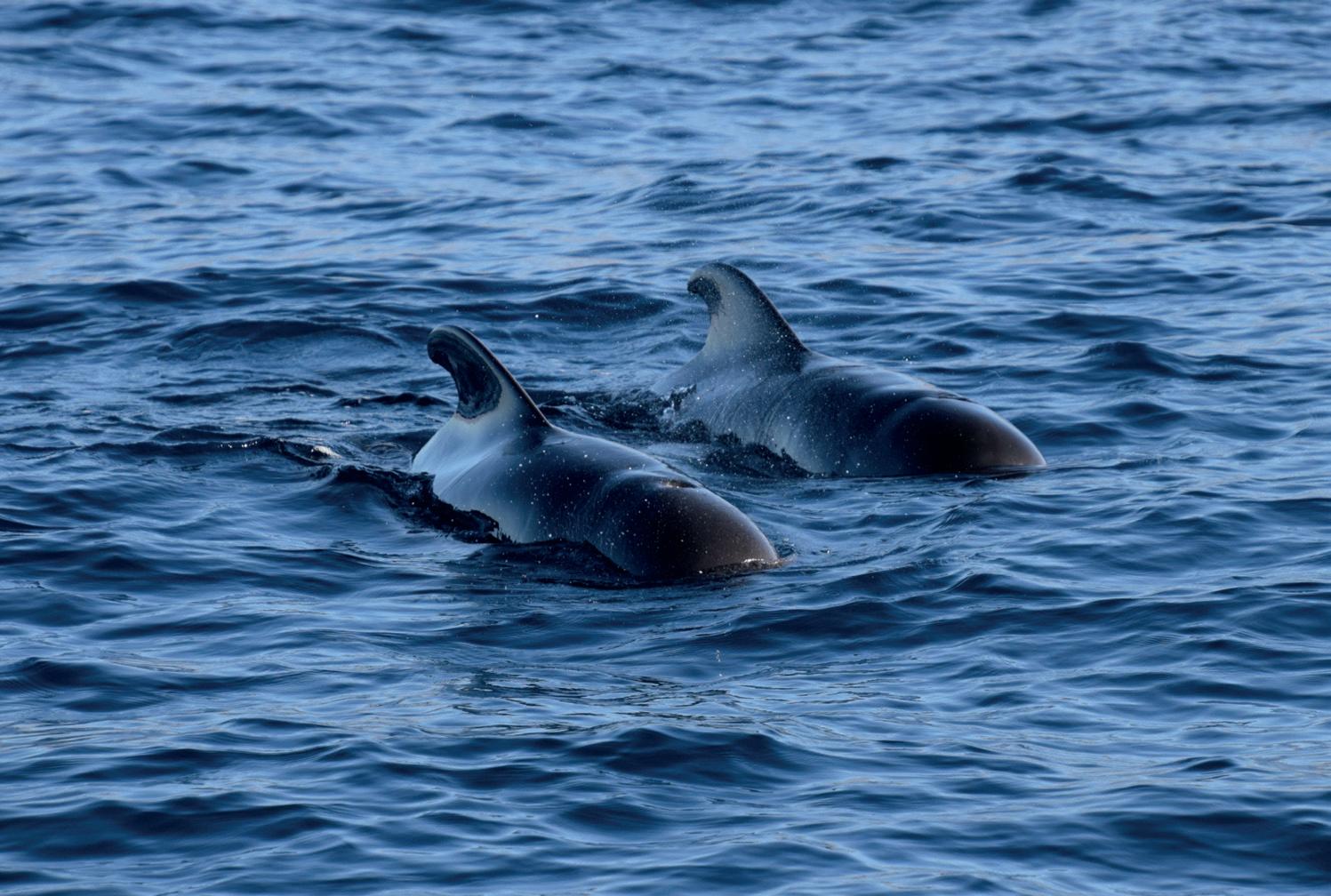
ple, in the case of bottlenose dolphins living nearby.
Pilot whales are amazing freedivers. They dive at a speed of about 2–5 meters per second to a depth of 500–600 meters. There, they slow down, use echolocation to orientate themselves in the field and start fast hunting at a speed of 25–30 km / h, to an average depth of 700 m.
If we compare this with the diving speeds of other species (2 m/s for sperm whales, 1.5 m/s for beaked whales), it turns out that the pilot whales that we often see lying motionless in the water are not slow or lazy at all. They are downright professionals! During the research conducted by SECAC (Sociedad para el Estudio de los Cetáceos en el Archipiélago Canario), a male was observed, who made 17 consecutive dives at a depth of over 700 m between 9.00 am and 4.00 pm! Even a calf less
than a year and a half with a body length of 2.20 m dived 10 times to an average depth of 100 m, also descending on the same day to a depth of 370 m. Research has also shown that night dives are definitely shallower, reaching approx. 100–300 m, because squid at night are active at shallower depths. Short-finned
pilot whales have been nicknamed as the “cheetahs of the deep sea” for their deep, high-speed, sprint-dives to chase and capture large squid.
When we understand how dynamically and deeply pilot whales dive, it is easier to understand their regenerative behaviour on the surface. These
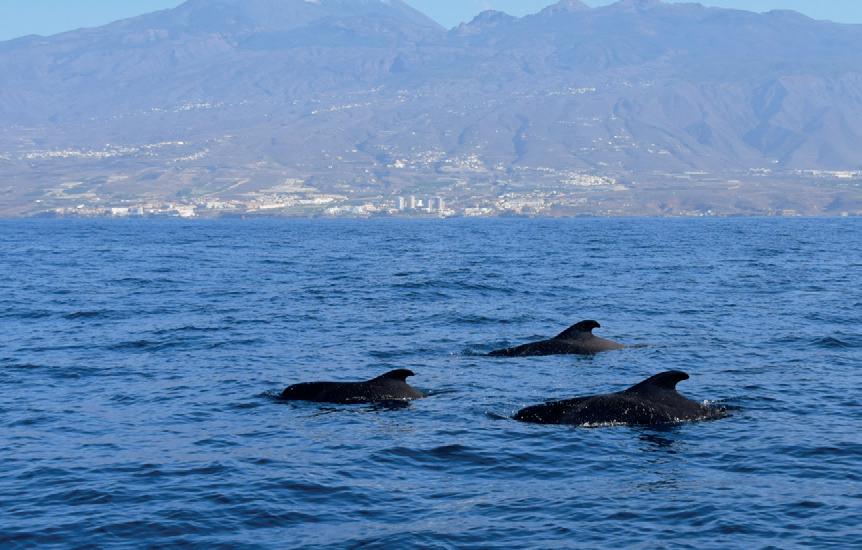
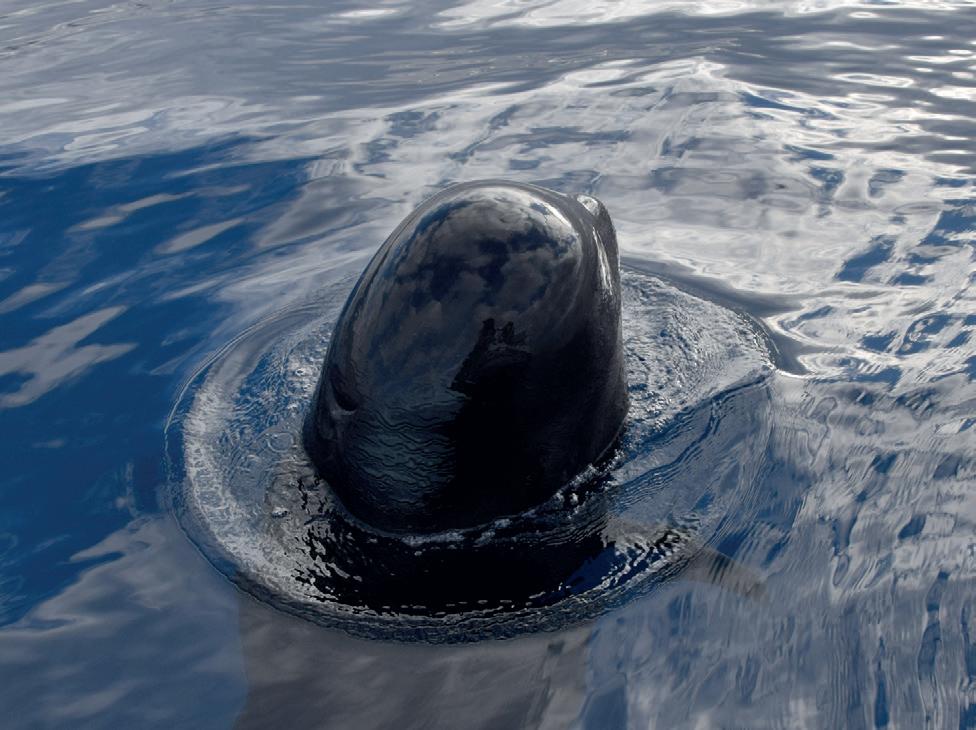

dolphins spend long periods of rest, almost like logs on the surface of the water, to prepare and oxygenate before the next great-depth hunt for squid and fish. This makes them easy to observe, as long as we don't bother them.
In the resting phase, they breathe gently for a few minutes and replenish
their oxygen supply. When observing pilot whales, it often seems that the proximity of the boat does not bother them. However, it should be taken into account that animals may be too tired to move away or dive.
It happens that the youngs come to the boat and "play". They show one
or both pectoral fins or raise their heads out of the water to peek around. Such "spy hopping" can also be observed in the performance of adult individuals. In some cases, when boats get too close or go too fast, pilot whales begin to move, dive or move away.
When animals rest or sleep on the surface of the water, they usually do not make sounds that could be heard using a hydrophone. But when they "socialise" with each other, dive or hunt, you can hear many different clicks and whistles. Short-finned whales have a wide vocal repertoire, including whistling, chirping, buzzing and other hoarse sounds used in social interactions. Clicks are also used for echolocation.
Herd communication, social life, interpersonal relationships, and perhaps also emotional issues, are very important to pilot whales. Researchers have repeatedly documented how pilot whales mourn the death of a calf. A mother can keep a dead newborn baby with her for many days, not wanting to part with it.

Similar situations have also been observed in the Strait of Gibraltar. One day a family group headed by a female with a dead calf came to the whale watching boat. She stayed by the boat for several minutes, keeping the little pilot whale's carcass afloat. Perhaps it would be an anthropocentric abuse, but it looked like she was asking people for help, helpless in her pain.
Can these social, intelligent, empathetic, but also powerful animals pose a threat to swimmers or divers? In 2004,
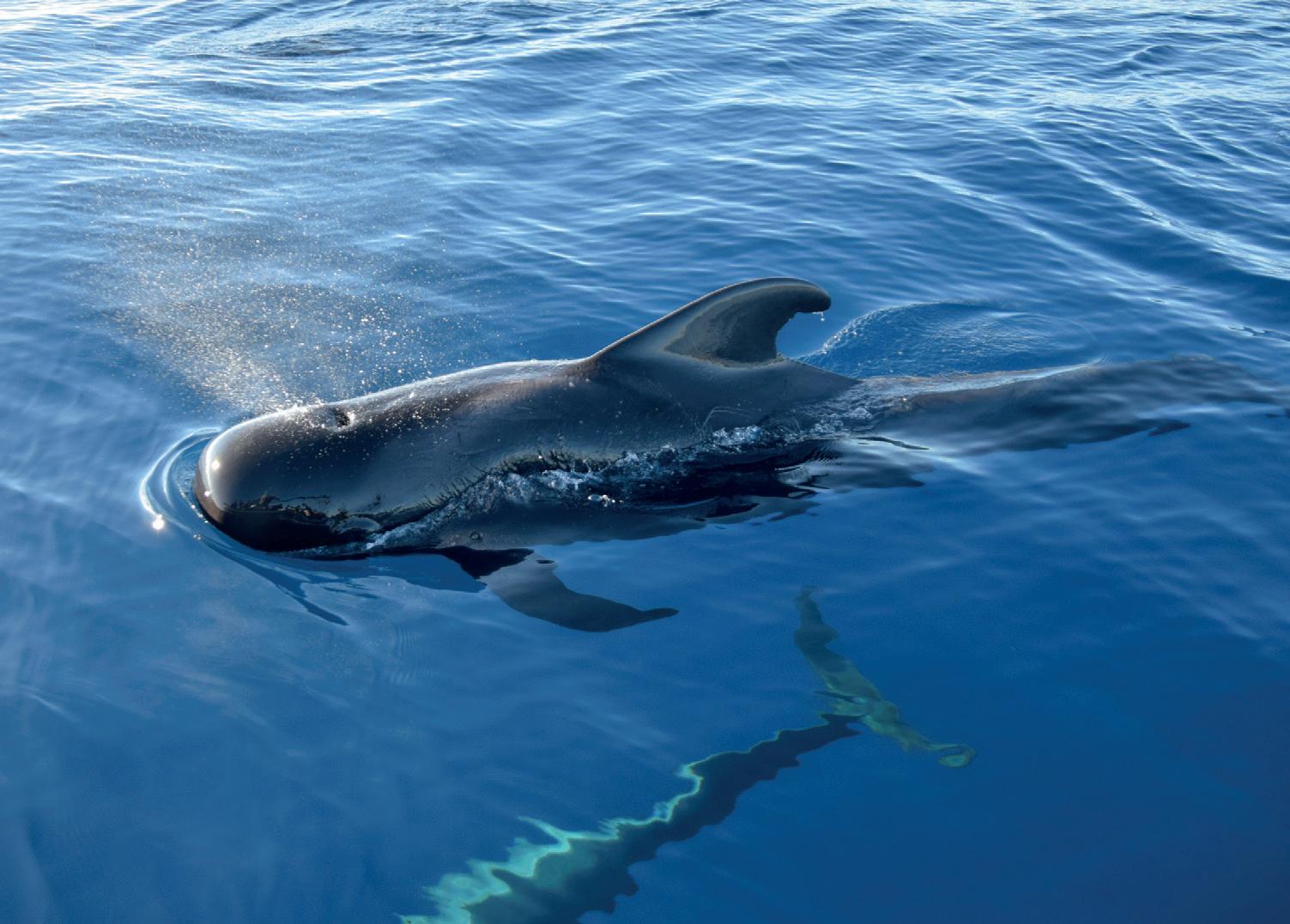
Michael Scheer, Bianka Hofmann, Itay P.Behr published the results of their 1996 and 2001 field research on the interaction of short-finned whale with swimmers in the ocean off the southwestern coast of Tenerife. They described the pilot whale behaviour repertoire from 11 interactions with humans, and compared it with previously described pilot whale behaviours reported in the scientific literature.
Researchers observed only the affiliate and exploratory behavior of pilot whales, primarily marked by curiosity. These were: repeatedly swimming around a person in the water at a distance of 5–20 m, swimming frontally to the swimmer at a distance of up
to 2 m, scanning a person with echolocation and swimming left or right while maintaining eye contact, approaching a person at a distance of less than 2 m, scanning by echolocation in the belly-up position and maintaining stereoscopic eye contact.
The only well-documented case of aggressive behaviour by wild pilot whales towards humans was in 1992 in Kealakakua Bay in Hawaii, when photographer Lee Tepley and his friend Lisa Costello swam very close to a group of pilot whales on a high-speed motorboat. They entered the water with a group of pilot whales about 8 miles offshore. Lisa swam very close to the animals and started petting the curious big male.
Shortly thereafter, Lisa was dragged down by the same pilot whale and nearly drowned. The animal grabbed her leg several times and let her go for a moment, only to pull the woman several meters under the water in a moment. Lee Tepley recorded most of the incident so that the entire incident can be closely analysed.


On the other hand, in the study "Delphinids on Display: the Capture, Care, and Exhibition of Cetaceans at Marineland of the Pacific, 1954–1967" describing the situation of cetaceans held in captivity in Marineland, we find numerous references to the threats posed by pilot whales there to aquarium workers. Due to their size and strength, pilot whales
have often endangered or harmed divers and their caretakers in the water. This frightened the public and prompted the owners of Marineland to sedate pilot whales with psychotropic drugs. Particularly known for attacks on employees and film crews was the female pilot whale – Bubbles, which led to several serious accidents. Bimbo was also
known for his aggressive behaviour. In 1965, local newspapers called the male Bimbo a "psychotic" when a doctor called by Marineland diagnosed the animal with a manic depressive disorder after he had refused to perform for two years, lost weight, had "violent tantrums" and killed several other cetaceans in the reservoir where they lived.
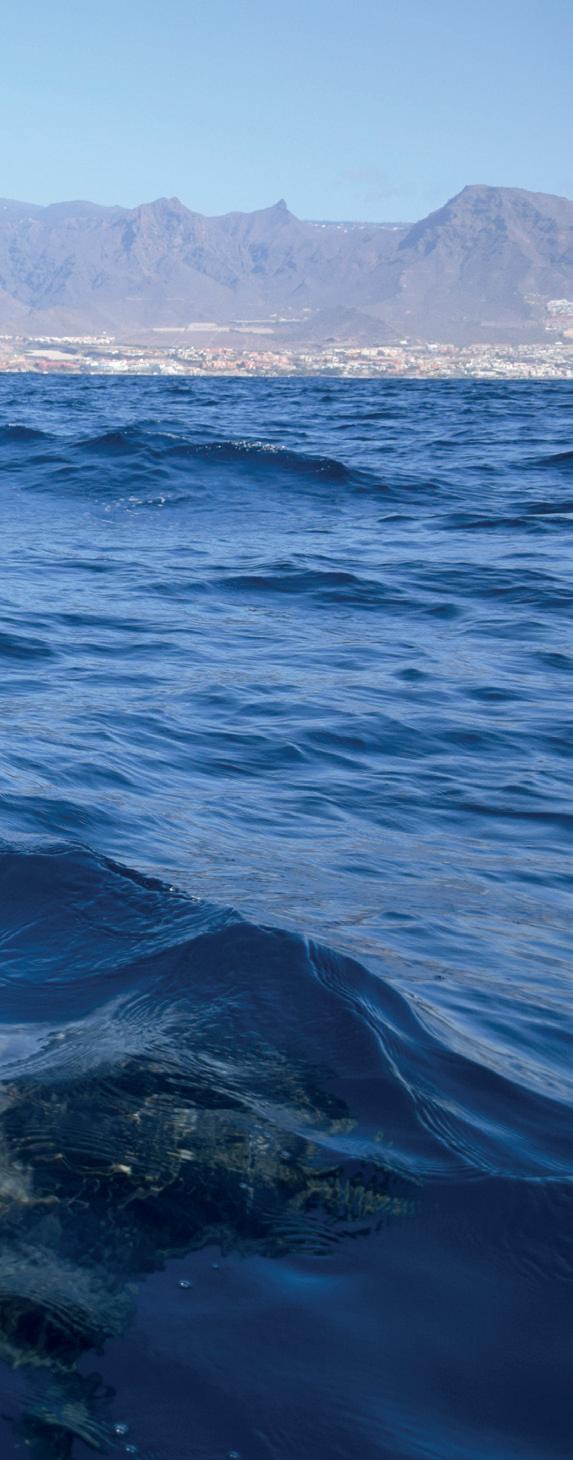
These behaviours prompted Marineland personnel to release the Bimbo back into the ocean in 1967.
Short-finned whales in the wild have virtually no natural enemies, apart from killer whales and a few species of sharks. Scars on the body of adults are usually traces of a fight with giant squid. The relationship between pilot whales and killer whales seems particularly interesting.
In early 2021, scientists listened to 2028 long-finned pilot whales' vocalisations off the coast of Australia. They were surprised to hear 19 instances of vocalisations that resembled the ones produced by killer whales – their rivals. Killer whales compete with pilot whales for food, and are also potential predators of long-finned pilot whales. Pilot whales foraging or eating rests of killer whales' food may go unnoticed if they use killer whales' sounds. It is not yet known whether a similar acoustic mimicry takes place between short-finned pilot whales and killer whales near Tenerife.
The main danger for pilot whales is the contamination of the seas and oceans with toxic chemicals (including heavy metals), which accumulate in their bodies by bioaccumulation and which pass from adipose tissue into breast milk. Such a contaminated milk can be fatal to the calf. Noise pollution is also an issue. Excessive tourist traffic, the noise of boat engines (including whale watching boats), jet skis, fishing boats, ferries, which are numerous in the Canaries, and finally warships with their low frequency sonars make communication difficult and are an additional stressor for dolphins. The greater the stress, the more difficult it is for the whales to recover from exhausting dives, and the less energy they have for essential activities such as caring for offspring, learning to hunt, etc. There is also a greater risk of miscarriage.
Fortunately, pilot whales are not caught in aquariums at present (except for Japan, where pilot whales are still taken to marine parks in Taiji, and where entire family groups are killed). If they live in captivity, it is because they were caught from their natural habitat years earlier or kept in aquariums after rescuing them from sickness or from being stranded on the shore at the beach. It also happens that one of the western aquariums buys a pilot whale from some Japanese marine park.
For pilot whales, being in an aquarium is very burdensome. They are biologically adapted to travel long distances every day, diving several hundred meters deep, hunting with the use of echolocation, living in complex family structures. In captivity, they cannot, in any way, satisfy their locomotor and social needs and use the senses of hearing and echolocation. And yet such slavery lasts for many years. The oldest pilot whale living in an aquarium – the female Bubbles – the same female who spent about 20 years in Marineland, was held captive in the San Diego SeaWorld artificial reservoir for another 30 years.
The pilot whale, rescued from being stuck on a Florida beach in 2011, was held by SeaWorld in Orlando until his death in 2019 from a bacterial infection. Short-finned pilot whales have been kept in captivity at various marine parks in southern California, Hawaii, and Japan, possibly from the late 1940's. Historically, they had low rates of captive survival – less than half survived 24 months. The fact that dolphinariums are now able to keep pilot whales alive diametrically longer in captivity does not mean that they can provide them with a long life of well-being, only a long imprisonment.
If you want to meet pilot whales, meet them only in their natural environment. In their world, on their terms. Without causing any distress to wildlife at sea. Tenerife short-finned pilot whales are waiting. It is only a 5-hour flight from Poland.
Many thanks to Sergio David Hernandez Herrera from BONADEA II from Puerto Colon, Tenerife, for the opportunity to learn more about pilot whales during the hours spent together at sea and for sharing photos and recording pilot whales.
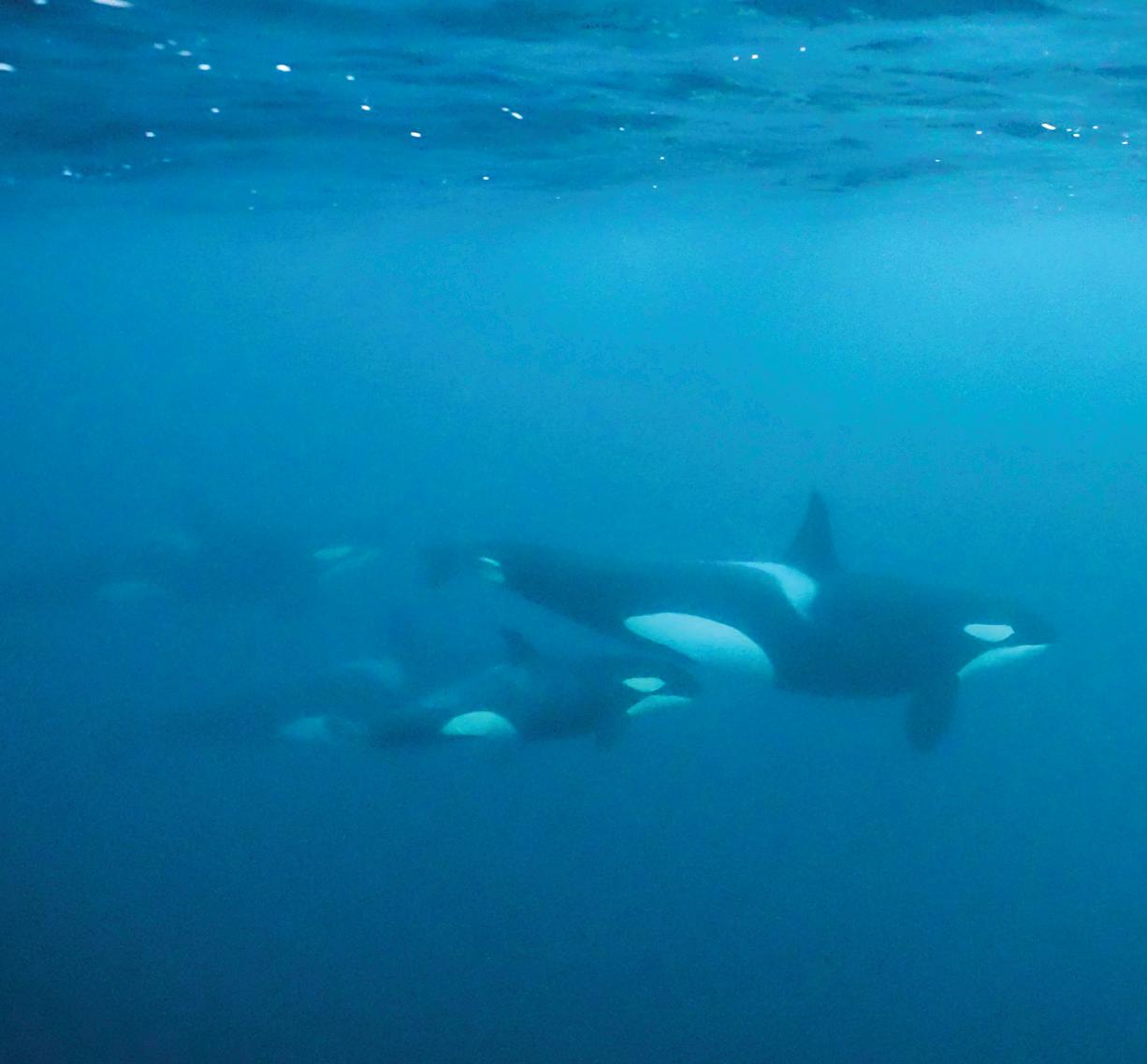
Each year in November, the fjords of the Troms County in the north of Norway turn into a stage for an extraordinary spectacle of nature. Massive shoals of herring gather here, to start spawning. They are followed by hundreds of whales ready to hunt.
Norway's fjords are becoming a temporary home for humpback whales, fin whales and killer whales, which search the fjords to satisfy hunger. The chances of meeting these animals are high and the November event attracts tourists and photographers from all over the world. The northern part of Norway is also one of the few places on Earth where you can still dive with killer whales.
This year I had the opportunity to go on a week-long cruise in the fjords beyond the Arctic Circle to photograph killer
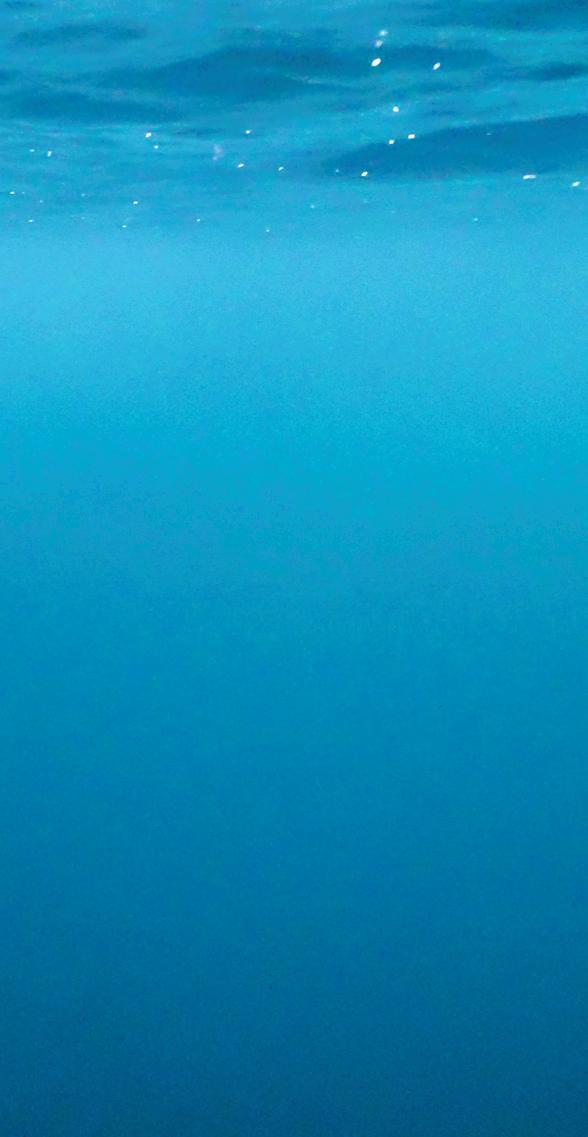


whales. For seven days, my base was a 22-meter tall sailing ship called Duen III. The purpose of the expedition was to dive with killer whales. Each day looked more or less the same: waking up at 7:00, breakfast, dressing in dry or wet suit (I preferred wetsuit as it allowed me to dive freely), leaving the port and looking for animals, interacting with killer whales in the water, returning to the sailing ship and resting.
The whole group took an active part in the morning search for animals. Everyone was trying to spot black fins that could
suddenly emerge from the stormy water. Sometimes we stood on the deck at -16°C for hours trying to spot at least one whale. Limited daylight, waves, wind and a large area made finding killer whales a real challenge. Once the black and white predators were spotted, all of us got into the RIB in full readiness. The skipper swam as close as possible to the animals and when we managed to find a family of killer whales who were curious about our presence, we went down calmly into the water. It was important to calmly and slowly enter the water and then

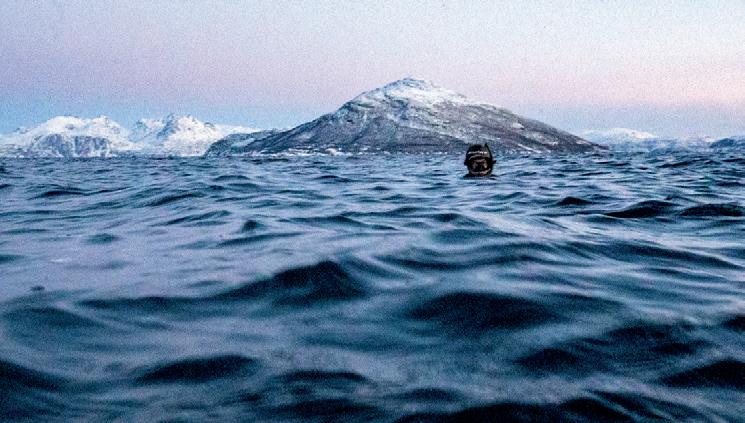
wait for the whales to come closer to us. They are extremely intelligent creatures, curious about what is happening around them, and whenever they feel like it and are not discouraged by loud splashes, they often interact with people.
There have been individuals who were reluctant to interact and drifted away quickly, but there were occasions when a curious pod would come closer and closer and, with a bit of luck, killer whales could be admired for a long time. The spectacle everyone is waiting for is the moment when the killer whales hunt herring. Then the whole pod hunts for fish, the water becomes cloudy from the remains, and happy divers can admire an unusual event up close, which sometimes lasts for hours.
The killer whale (Orcinus orca), undoubtedly the most dangerous predator of the oceans, is found in seas all over the world. The Norwegian killer whale population is estimated at 2,000 individuals, making it the second largest killer whale population in the world. They feed mainly on herring, which in winter flows to the north of Norway in huge quantities. These predators are known for their interesting and sophisticated hunting strategies. When hunting herring, they use the methods called carousel fishing and lobtailing. The killer whales group a shoal of fish into a tight ball and wait for the right moment to attack. When this occurs, they stun the fish with a blow of their mas-
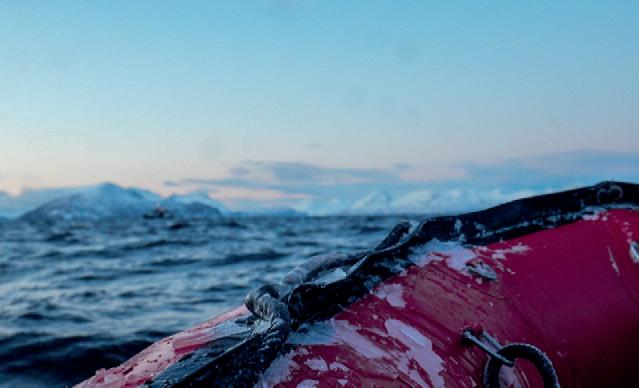

sive tail. In the end, they collect unconscious victims, piece by piece. Interestingly, the killer whales do not swallow the herring whole. They bite each fish separately at the base of the head and, clenching their jaws appropriately, bite off only a part of the fish, leaving the head and bones in the water.
In November, Norwegian waters are 4°C, the outside temperature is -15°C and the winds blow quite often. In such conditions, a few hours on a RIB in soaked wetsuit sounds like madness. The body loses heat quickly and it can be really cold. However, if you survive the Spartan conditions and are lucky on a given day, free diving among killer whales is a truly magical experience. The photographer Julia Ochs, who was on board, described the event in this way: When I boarded the RIB, I was prepared that for the next hours I would not feel my fingers and toes. I knew that only the power of my mind could help me overcome the drastic cold. At -16°C and in freezing winds, there was no doubt that it would be incredibly cold. Especially when you wear a 5-milimetre soaked wetsuit. I knew that as soon as I enter the water and the killer whales appear, I will forget about the cold. And so it was.
LOCATION: Skjervøy, Norway
SEASON: November (it is worth booking a place with the operator several months in advance)
ANIMALS TO SPOT: killer whales, humpback whales, fin whales, less often pilot whales
EQUIPMENT: ABC, wet or dry suit
FLIGHT FROM POLISH: to Tromso and then by bus (3 hours)
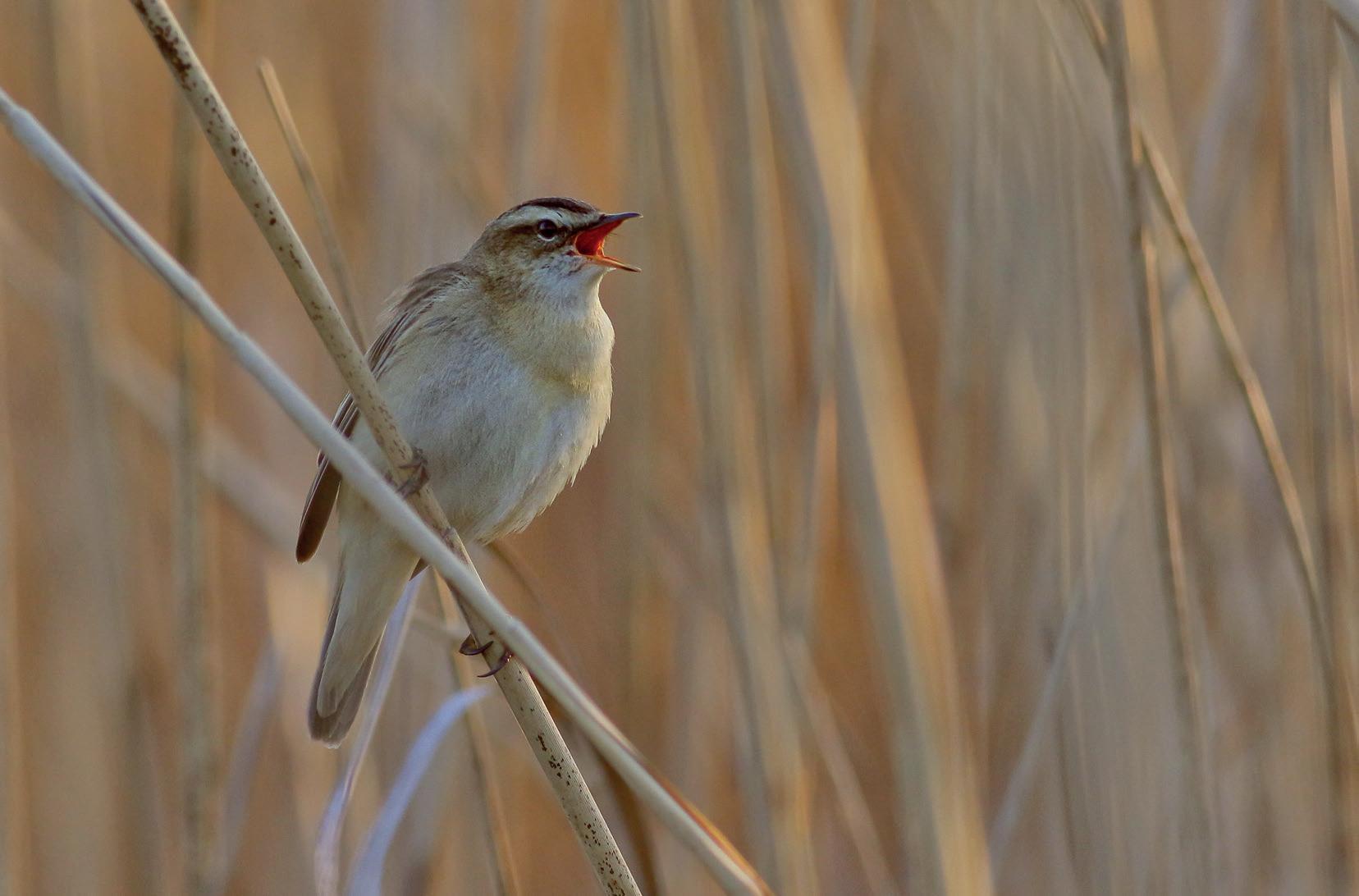
This time, I am going to invite you to the world of small and rarely noticed on a daily basis birds (this does not apply, of course, to ornithologists and 'birdwatchers'). We have visited this world several times with Perfect Diver (getting to know the bearded reedlings, PD No. 13, and the wagtails, PD No. 17) and we return to it to learn about the next species of bird, which we may be able to hear or even see while preparing for the next dive in inland waters.
Sedge warblers (Acrocephalus schoenobaenus) are birds of the Acrocephalidae family, i.e. a group of passerine birds that have taken a liking to the environment of wet open areas with high and compact vegetation, forming primarily reed beds and sedges. As places of their existence,
including breeding, these birds prefer the covered with vegetation shores of water reservoirs, both flowing and stagnant water. Their preferences are therefore similar, to some extent, to those who love sports and water and aquatic activities. We, humans, rarely purposely get ourselves into reeds, but we take a bath, dive, sail or just walk right next to it. That's when we have a chance to meet these feathery inhabitants of the rushes. Most often we will hear them, as their songs and voices are an inherent element of the waterside natural surroundings. There will be time to write about the scratchy and loud singing of the great reed warbler (A. arundinaceus), probably in one of the next editions of PD (if the Editor-in-Chief finds this topic interesting for the Readers of the Magazine), so now let's focus on the sedge warbler and its singing. As is most common in birds, males sing. They do it in order to persuade the females to set up a nest together. In the case of birds of this species, it has been observed that the nicer and more diverse the male singing, the greater the chances to arise interest of a representative of the slightly less beautiful sex (this is not a mistake, after all, in birds the males are usually prettier). The variety of singing of male sedge warblers consists in folding into one song a variety of


syllables and phrases that can be a copy of the singing of various birds belonging to other species. It is the richness of the repertoire that is to be the decisive factor in the success in seducing the lady sedge warbler. Birders explain these observations differently. One of the suggestions is that the male imitates in his singing mainly birds from the neighbourhood. If so, it means that he recognized the area well, and this may translate into a deeper knowledge of places where there is more food, and even which places will be the best in terms of setting up a nest there. The subject probably requires further research, because the studies that were carried out, for exam-
ple, on sedge warbler's cousins – marsh warblers, indicate the fact that they imitate the singing of a huge number of species (over 200!), of which a slightly larger part concerns species found not in the breeding area, but on wintering grounds in distant Africa. Perhaps what is more important is the more creative juxtaposition of overheard phrases and song fragments compared to the rivals? Is it not the same as with us, people? After all, the poet uses the same words as each of us, and only in their selection and order of compilation lies the secret of the difference between Mickiewicz's Polish alexandrine and the call of the potato seller from the local market. Of course, the greater supply of words makes it easier for the poet to effectively express their intentions, so perhaps this is also the point of birds? I apologize to the experts of poetry and language science for gross simplifications and far-reaching ignorance, but such examples can sometimes activate our curiosity and imagination without requiring in-depth knowledge of the field they concern. Coming back to the birds and to the Africa mentioned a few sentences earlier. It is there, more precisely in the sub-Saharan part, that European sedge warblers overwinter. When they raise their young, and sometimes it is done twice during the season, they prepare for a long flight. And what preparations these are! Well, these birds simply begin to eat without moderation. The goal is to quickly double the body weight and turn from a 10-gram bird to a 20-gram ball of feathers with a solid fat reserve. This
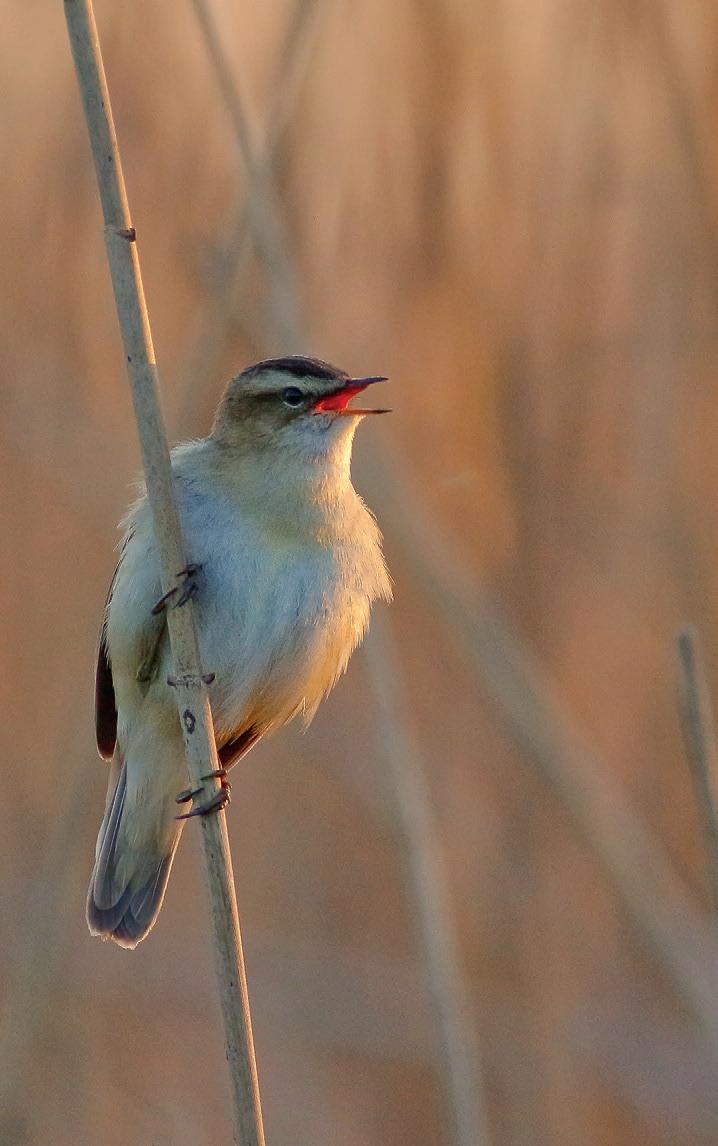
is all because sedge warblers do not like to stop on their way. In fact, they only make one stop in southern Europe, where they replenish their supplies, and then in one jump (4,000 km!) They move to the tropical regions of the Black Continent. Sedge warblers have adopted a strategy of quickly covering long distances, hence the need to accumulate the so-called migratory fat, which enables long-term active flight. While flying non-stop, they probably use different navigation systems at the same time. Researchers report that birds can use many complementary ways of orienting themselves in space. Not so long ago, it was even established how birds 'see' the Earth's magnetic field, thanks to which they flawlessly reach their destination – that is due to the presence of a photoreceptor protein from the group of the so-called cryptochromes. Hitting the same nest box or reed clump after traveling many thousands of kilometers seems surprising, but the navigation of migrating birds is indeed excellent. Birds also support themselves with astronavigation and a precise
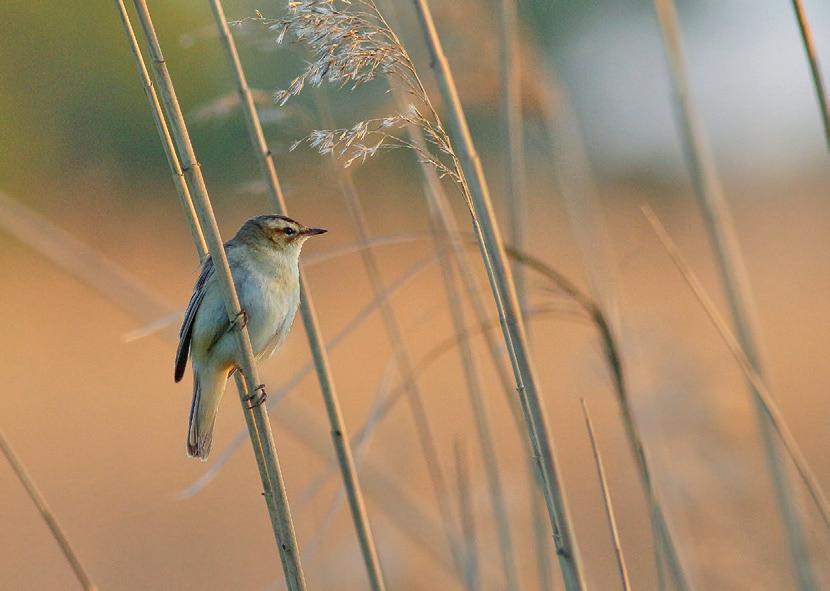
biological clock, thanks to which they perfectly interpret the position of our Daily Star in the sky. In addition, birds are great observers and they remember and recognize specific places without errors, both during their stay in the breeding grounds and during their migrations. We still do not know everything about bird orientation, and although science is making great progress, also in the field of ecology and ethology of birds, still some water in the rivers will flow before we know all the bird secrets. I hope we will have the opportunity to do so, because the rate of extinction of insufficiently known species of organisms has not slowed down recently... So far, sedge warblers, fortunately, are still doing well, as their numbers are increasing. However, they require the protection of habitats, which is generally true for most species of birds and not only, from Europe and the whole world.
So how to distinguish a sedge warbler from other birds inhabiting similar biotopes? Certainly, the characteristic eyebrow will be a clue here (I refer to the photos), but although it is not extremely skittish, it will not always sit at such a distance that you can look at it comfortably (that's why we take binoculars for birds). However, we should not have a problem hearing the males sing. To flawlessly assess that the heard sing is emitted by the sound-forming apparatus (anatomically called the larynx) of the sedge warbler, it is good to support yourself the first or second time with a bit of help (recordings on the Internet) or an application for recognizing bird voices. An excellent tool was created by specialists from the Cornell Lab of Ornithology – an application for mobile devices to download in places from where we usually download applications. I recommend it because it works – I checked it many times in the field.

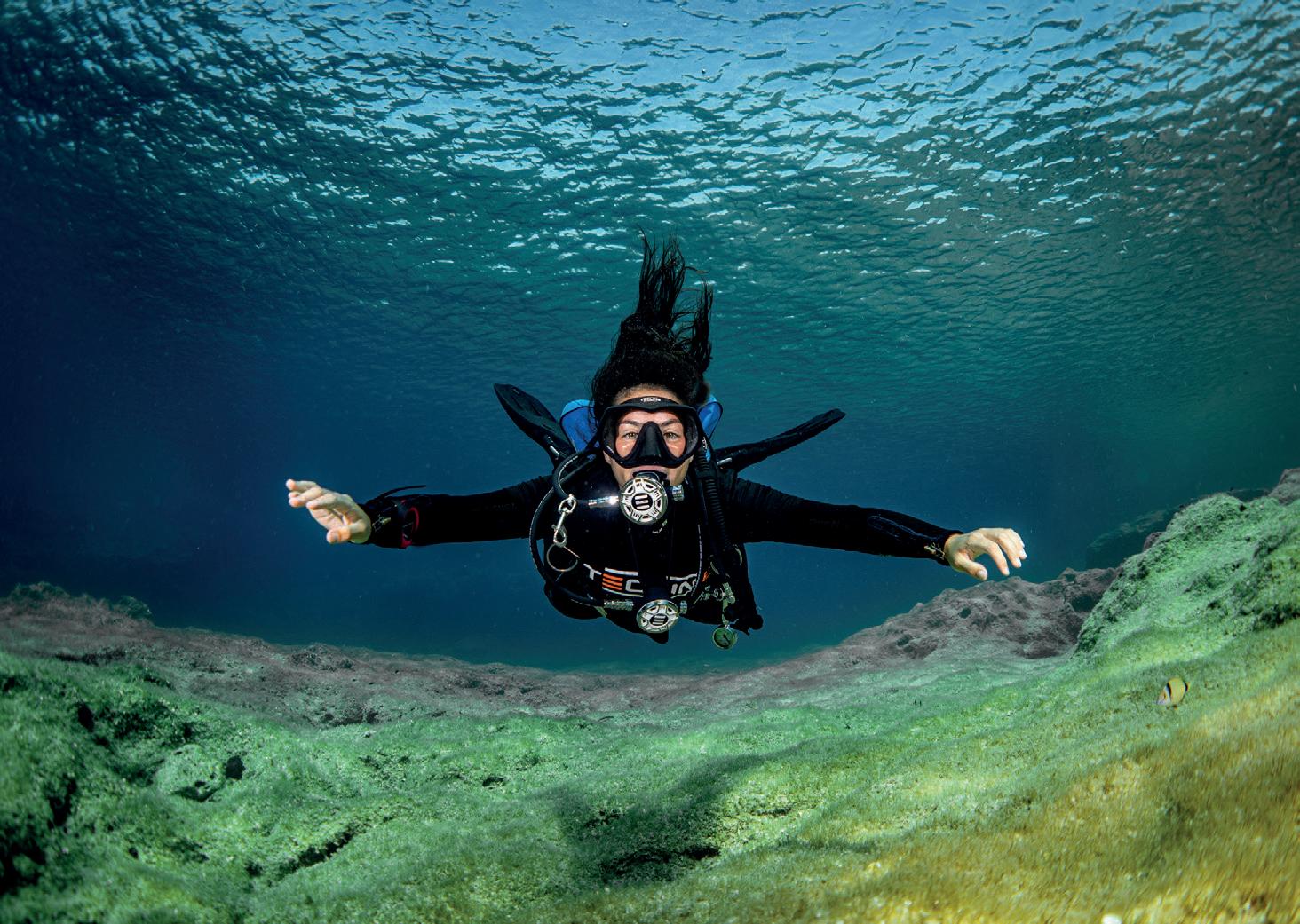
Photo Tomasz Płociński
TText WOJCIECH A. FILIP
MY TWENTY YEARS AS A DIVING INSTRUCTOR TAUGHT ME THAT WELL-TRAINED WOMEN ARE BETTER DIVERS THAN MEN.
hey are more focused during learning, usually communicate their needs clearly, evaluate risk adequately and… have no problem with saying they won’t do something because they can’t or are afraid.
I could give numerous examples to illustrate my words. I won’t, because its only purpose would be to prove my point… to men.
In today’s article, I’ll focus on a few things that might help women dive better.
There are THREE AREAS worth reviewing to ensure diving comfort.
Comfort, in this context, means safety, building the right self-assessment and getting the most pleasure out of diving.
All of these areas impact each other, while all of them taken together and each one separately will influence the comfort of female divers.
DIVING DOES NOT MAKE YOU SLIM
I know, I should have written quite the opposite. On a diving day, we spend only several dozen minutes in the water, but we have breakfast in the morning, eat some more on our way, a barbeque after the first dive not to lose our strength and after the second dive we eat some more to somehow endure the tough day. Of course, on the way back, we hit another bar at a gas station. Any attempts to calculate a negative balance of calories with two dives would require extreme and incurable optimism which would eventually yield to mathematics.
My gear is what they gave me, because this is only a beginners’ course or my husband had bought new gear for himself and gave me the old stuff or there’s no need to worry, because it will be fine anyway.

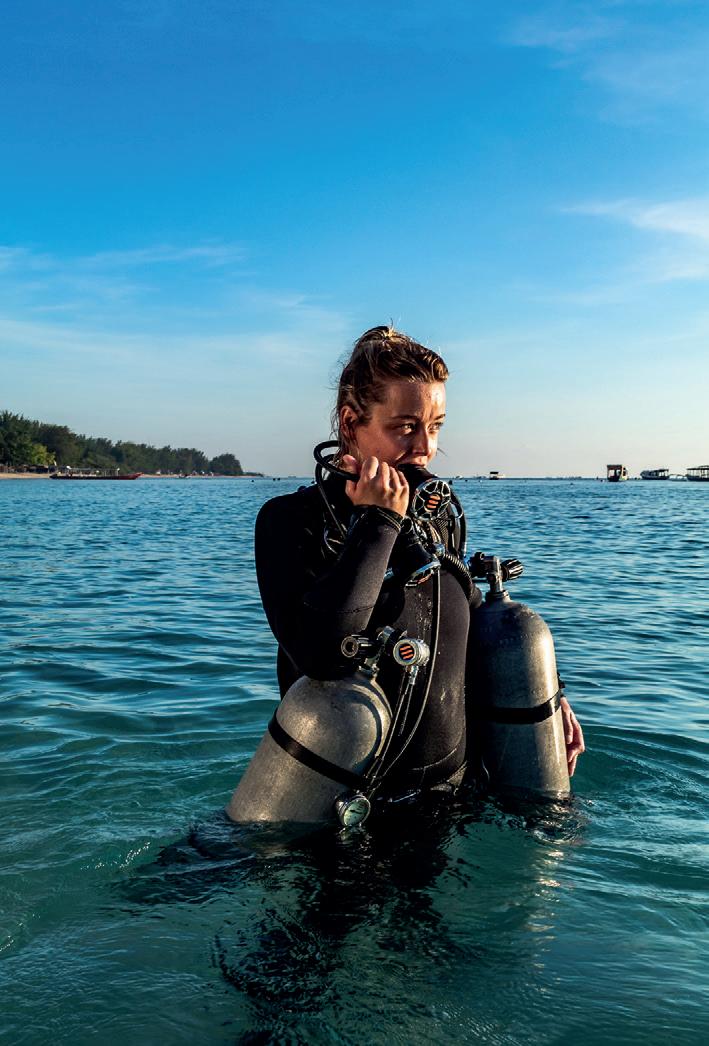
Sounds familiar?
So, a moment of technical analysis through analogy: You’re going to a party with friends you haven’t seen for several years. You’d do everything to look good, even if it’s going to cost you continuously adjusting your clothes so that they won’t reveal what they shouldn’t, and your high heels are hurting so much.
You know best how costly is the magic behind getting ready and the continuous inspections to see if everything is OK during such a party.
You know that as soon you’re back home, you’ll put on your comfy pajamas, your tight shoes will stop hurting your feet, your skin will start breathing without the make-up and your belly will finally get some rest after being continuously pulled in.
But how does this translate to diving gear?
A women’s diving gear MUST be as comfortable as your pajamas on the day you need some time all for yourself. It must evoke only positive associations, whether in terms of comfort, performance or color.
A woman’s body is more complicated in shape, so the time you need to fit your gear appropriately should be longer than for men.
This concerns the beginners’ course in particular and should become easier afterwards.
Women have breasts. If they are bigger, there is no way for you to learn to dive in a typical jacket or a harness not fitted to a woman’s body. If you ignore this, you’ll be facing buoyancy control issues from the very beginning; your cylinder will slide to the sides and the comfort of the exercises you perform will be rather low.
If diving is to mean pleasure, I presume you want to feel it from the very beginning – not only once you’ve actually learned how to do it.
The time spent on learning the basics is critical for your future behavior in the water, so before you start a course, ask your instructor if you can get gear dedicated for women.
Such gear exists and you shouldn’t accept the false theory saying you won’t need it in a swimming pool.
Something is bothering you, is unstable, you can’t seem to control it – report it immediately and eliminate the problem. You must feel comfort and pleasure.
There’s plenty of gear models designed specifically for women. If someone invites you to a course for women, demand such gear.
If you are buying gear for yourself choose gear for women. If you get your husband’s old gear sell it and buy yourself gear for women!
Always see if you can try the gear before buying it – it might happen that gear for women is such in name only.
Women are among the best technical and cave divers. Any woman can get maximum pleasure from the most complex dives if she has the appropriate knowledge and skills.
Women often are more eager to learn – why should it be any different in diving?
Women perceive technical topics differently. It means they require an instructor who, instead of repeating the same because he got used to the fact that this method works for the male audience, will explain the matter in a clear manner. Such an instructor will not only win some grateful female audience, but will also share all the knowledge with them, stimulating the ladies to explore the topic more in-depth. This calls for an experienced teacher who has what it takes to explain topics related to physics and physiology in such a way to encourage learning them.


If a woman cannot understand something, it means… she didn’t meet the right instructor.
I know I’m simplifying greatly, but don’t let your instructors be lazy and read out patterns from books. Each one of you is different and requires a different, individualized approach. After all – this is what you are paying for! So expect an adequate level of service.
Wait a minute! It did not a moment ago – I DON’T UNDERSTAND!
The diver's safety is influenced, among others, by the efficiency of their circulatory and respiratory system, as well as the amount of fatty tissue. When diving, our body becomes saturated with different gases. Our fatty tissue contains few blood vessels, which are responsible for transporting, among others, the gases dissolved in the fat. The more fat you have, the more difficult it is to get rid of the gas, which may result in decompression sickness. Once the gas gets into your blood vessels, it must be efficiently expelled – which means that we decompress by breathing and for that we need a healthy heart and healthy lungs. Right… and in a nutshell?
Diving makes you slim if you prepare for diving through additional workout and working on your fitness in a conscious manner. Less body fat and being in better shape = increased safety.
Even the most complex diving topics need to be explained in a hopelessly simple manner so that it becomes clear for a female trainee who had never heard of them before. If this is not the case, you’re wasting your time or becoming dangerous to yourself and other divers. Seek good instructors and require their full involvement. If you report that you don’t understand something and the instructor just repeats the same thing all over again instead of changing their explanation, this might mean he doesn’t understand it very well either. From my own experience, I know this happens.
Your safety underwater depends on how well you master the theory of diving.
Each time something is not clear, say: I DON’T UNDERSTAND!
1. The instructor is there for you to share his knowledge and this should be the goal of any training. If their purpose is to show who’s the instructor here – go seek another instructor
2. Choose courses for women – the more the merrier.
3. Ask yourself whether you feel comfortable during the training – if not, change the instructor, break the pattern and take the course in a different city or with another diving center.


It takes years to accumulate experience in diving – mostly because… we dive sporadically.
Experience results from knowledge, gear and the number of dives. If we dive with inaccurately chosen and poorly fitted gear from the very beginning of our diving career, this will shape our experience in a particular way. Remember: poorly chosen gear will work to some extent, so you might conclude that “no one said it would be easy; after all, this is diving”. You might also hear some theoretical fun facts, like “a diving woman must be tough”. All this creates a false belief that it just has to be that way.
Build your experience based on gear that is carefully chosen and fitted to a woman, relying on knowledge you not only understand but also are able to use once in the water. Share information about good instructors, gear advisors and groups of women who insist on diving to give them… pleasure.
I have breast implants
Get yourself a properly shaped harness, e.g. Tecline LADY.
Learn to react quickly if you loose gas supply to your drysuit. In both cases strong pressure may be exerted, causing the implants to move.
I had facial surgery
Get a mask that fits you well (inhaling air through your nose is not a method to choose a mask) and make sure you are able to equalize pressure in the mask before you feel tightness.
I have permanent makeup
Get a mask with a wide glass and clear silicone rubber – it will boost your eyes’ color and look great in photos
I’m a technical diver, what about women’s decompression?
This is a complex topic that would require several extensive articles. By nature, women have more fatty tissue than men and are therefore more prone to the cutaneous form of DCS with longer dives. Consider a decompression strategy that allows you to raise temperature in the second part of the dive, including ascent (a full heated undersuit and pumping more gas into your suit may help).
I’m using ShePee for peeing underwater; what do I do during my period?
Consider using a menstrual cup instead of a tampon – leaving all other things unchanged.

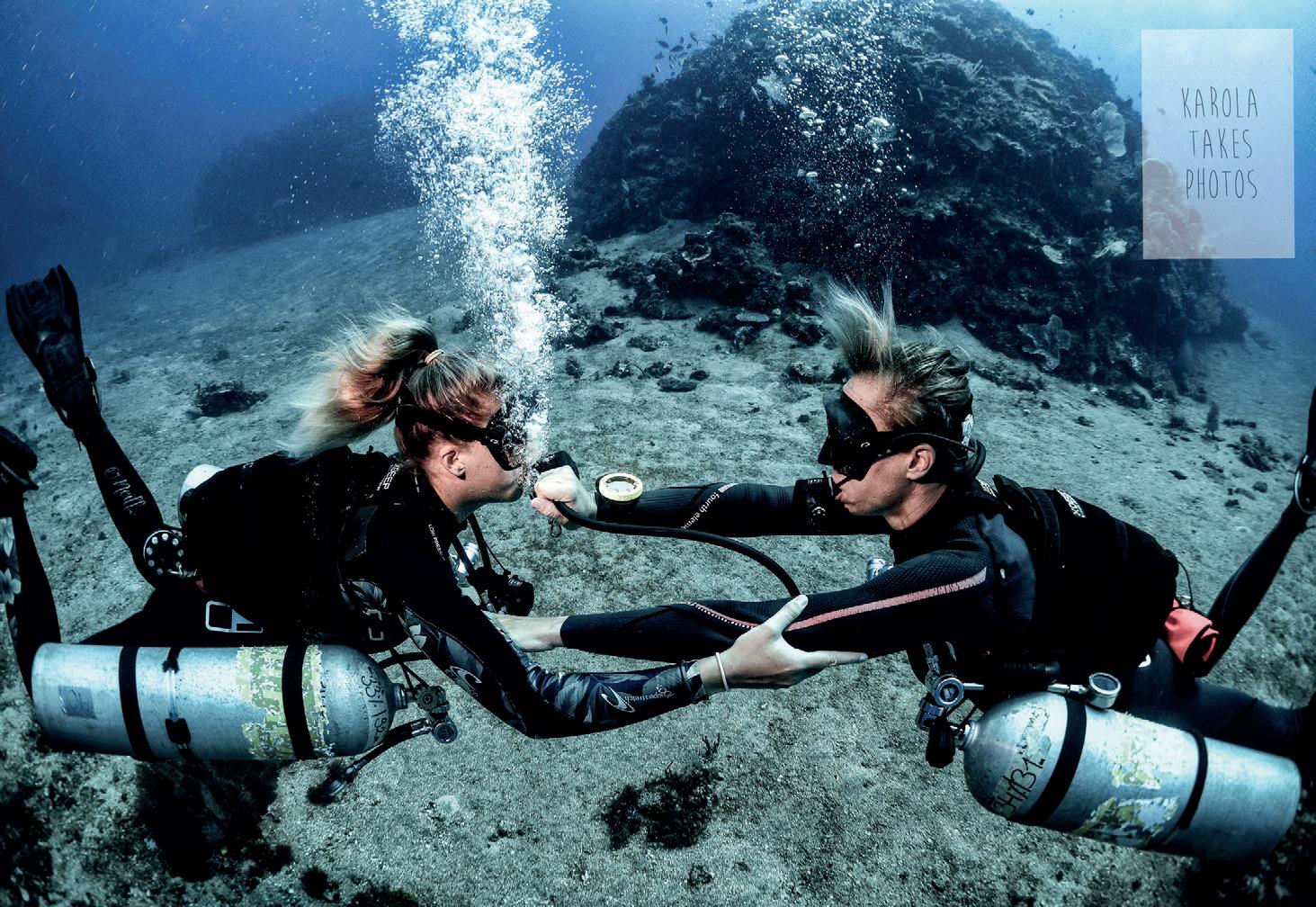
Dear ladies!
You have almost always made concessions, choosing solutions that often satisfy us men at the cost of your comfort. Once under water, there is no place for the “barefoot and pregnant” attitude, doing everything for others and putting yourself last.
It cannot be the case for many reasons. One of the most important is that a conscious diver takes care for the safety of their own and of others, which means: ABSOLUTELY NO CONCESSIONS!
…and since we declare that you are so important to us, it’s time to call the bet!
As usual, take a moment to check out the Tecline Academy seminars dedicated exclusively for women. Let us know about the topics you would like to discuss – the rest will be there for you.
PS (mostly important for men)
Almost the entire article may also be applied to male divers. Just switch off that part of your everyday software with the bug making us think we’re better than women…
https://teclinediving.eu/tecline-academy/#/
